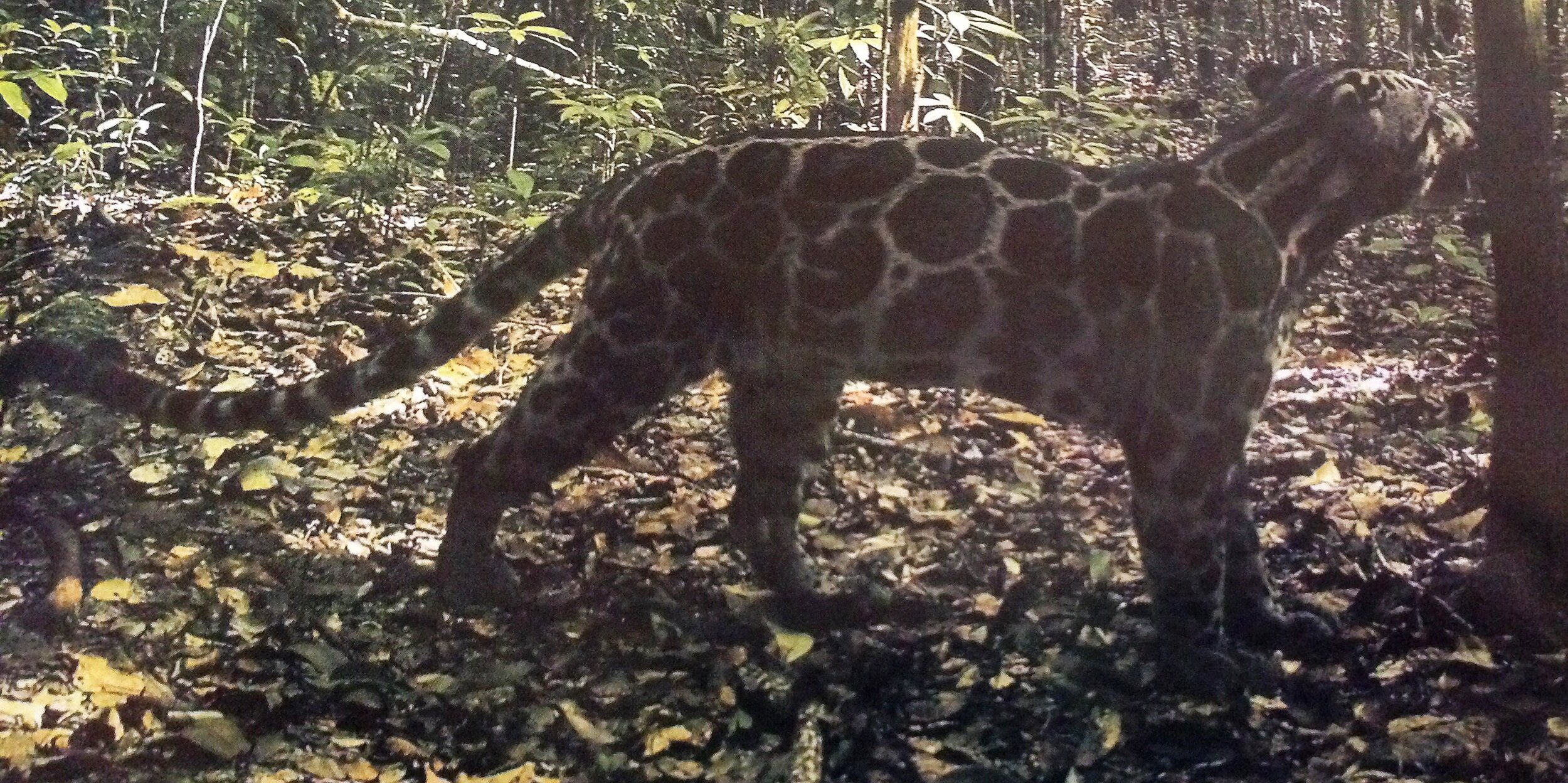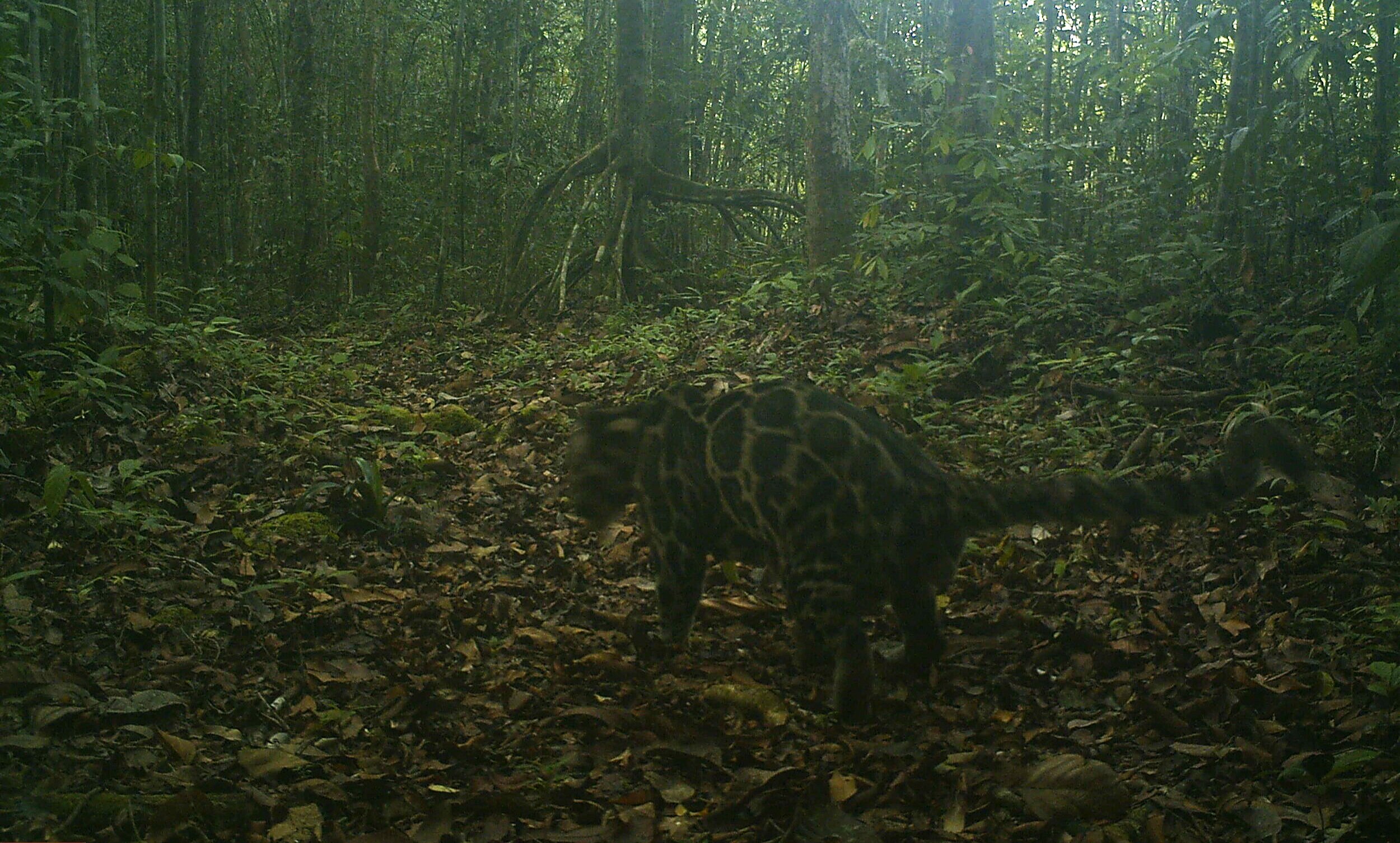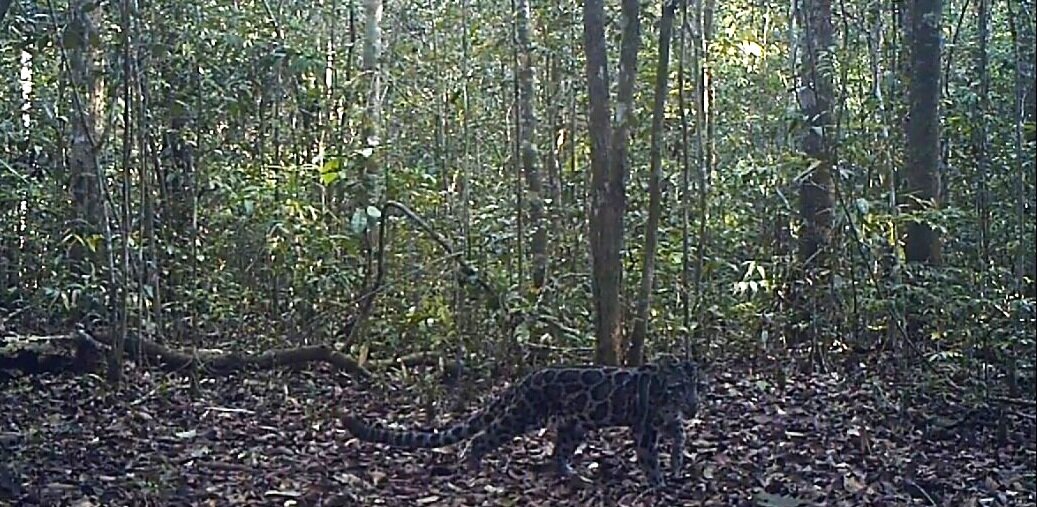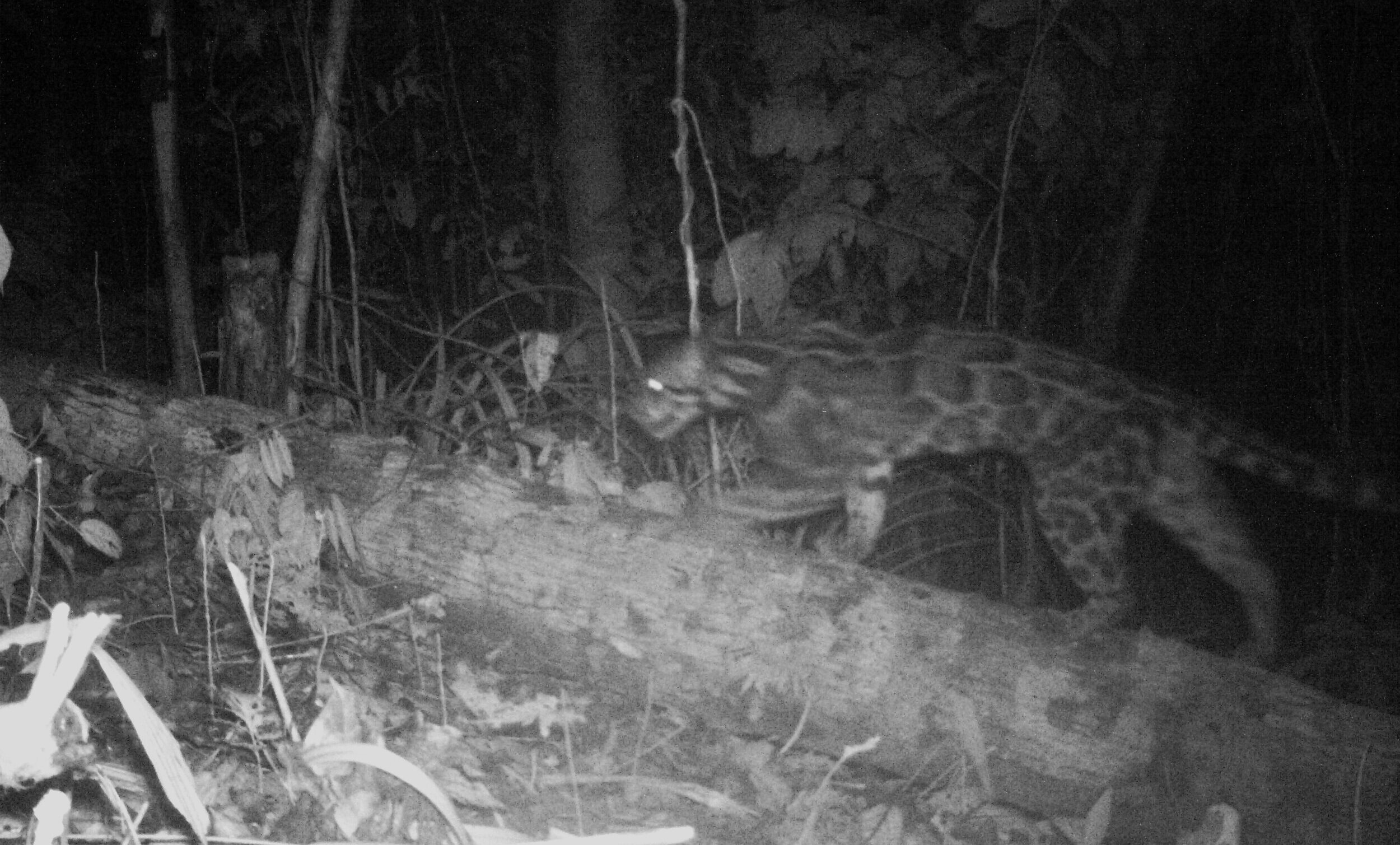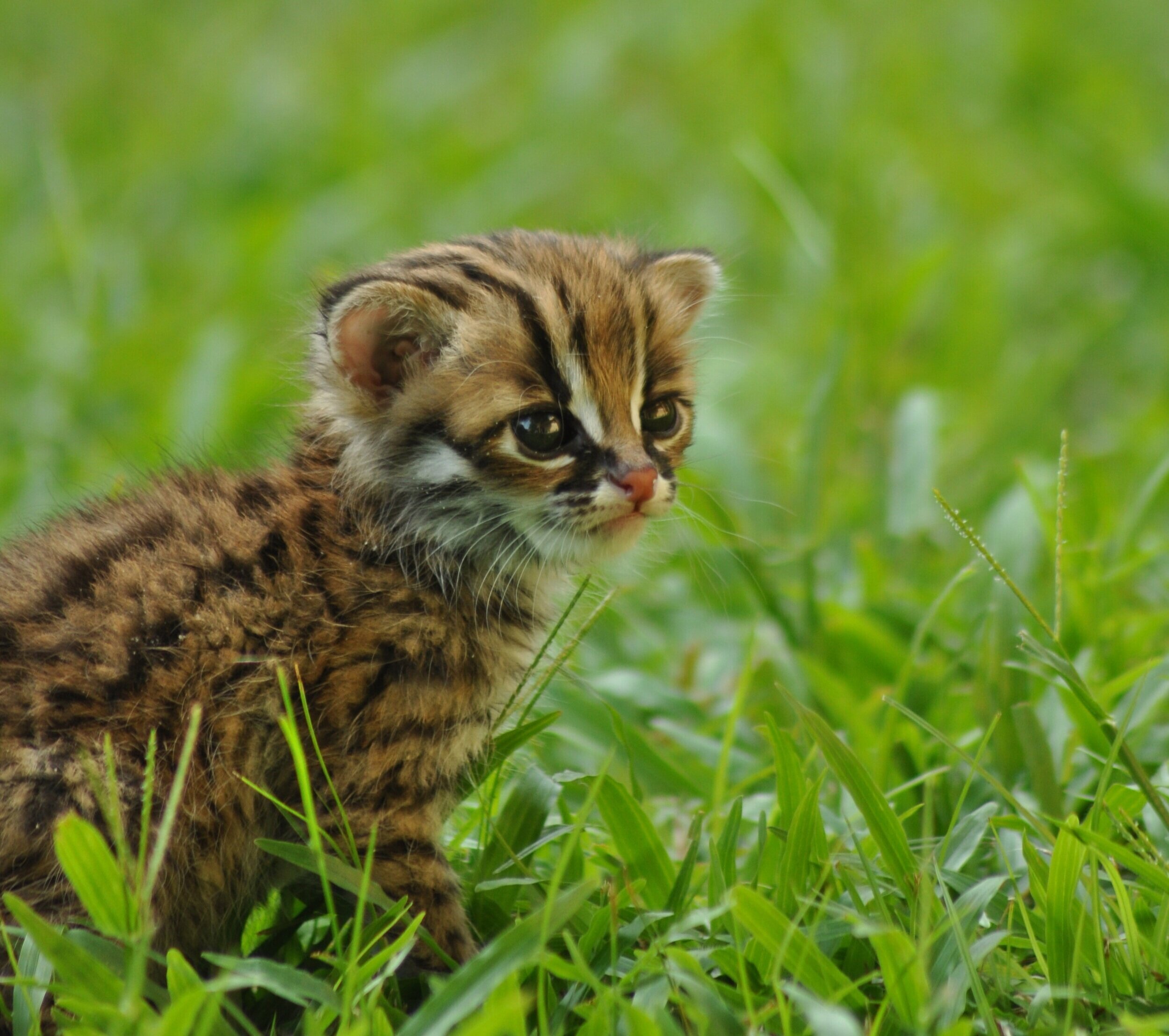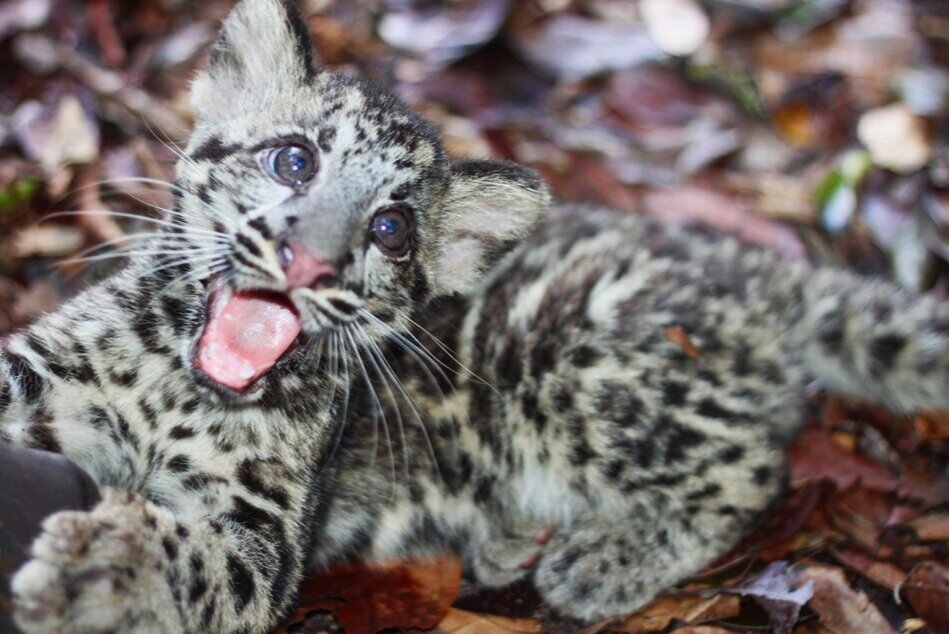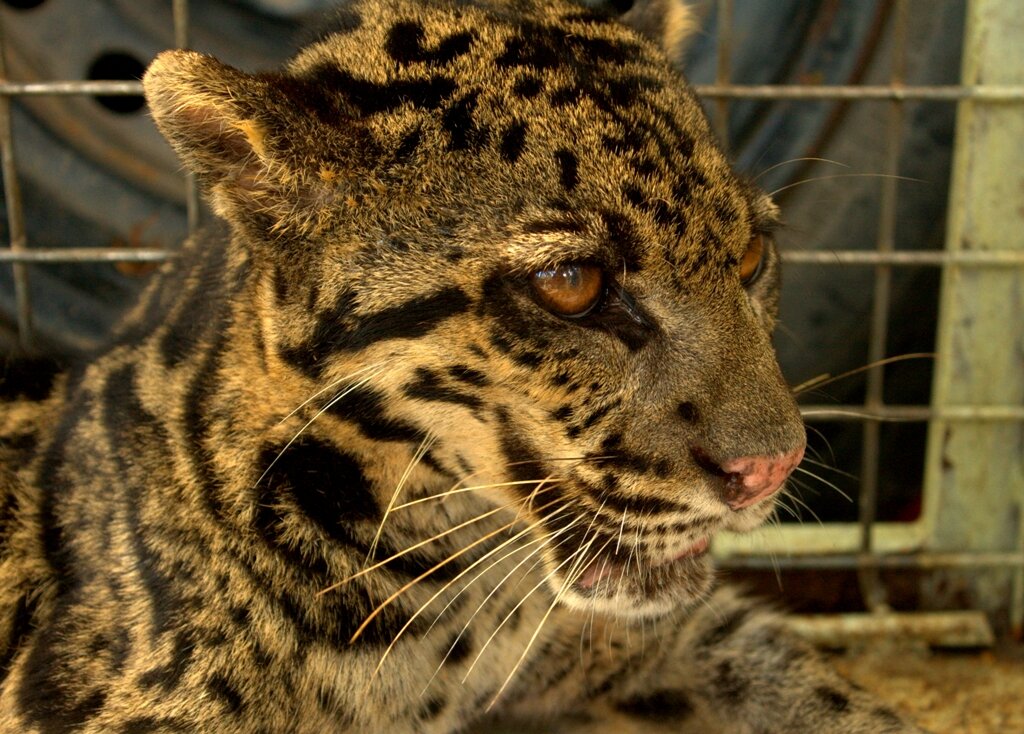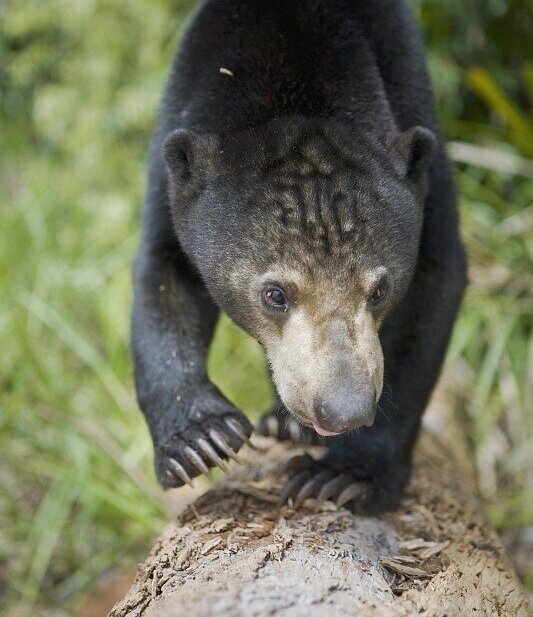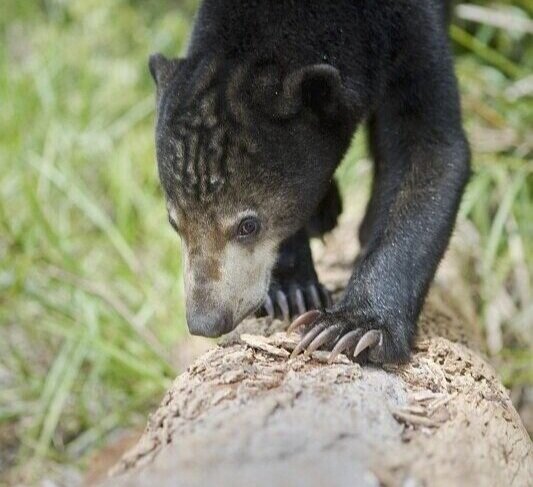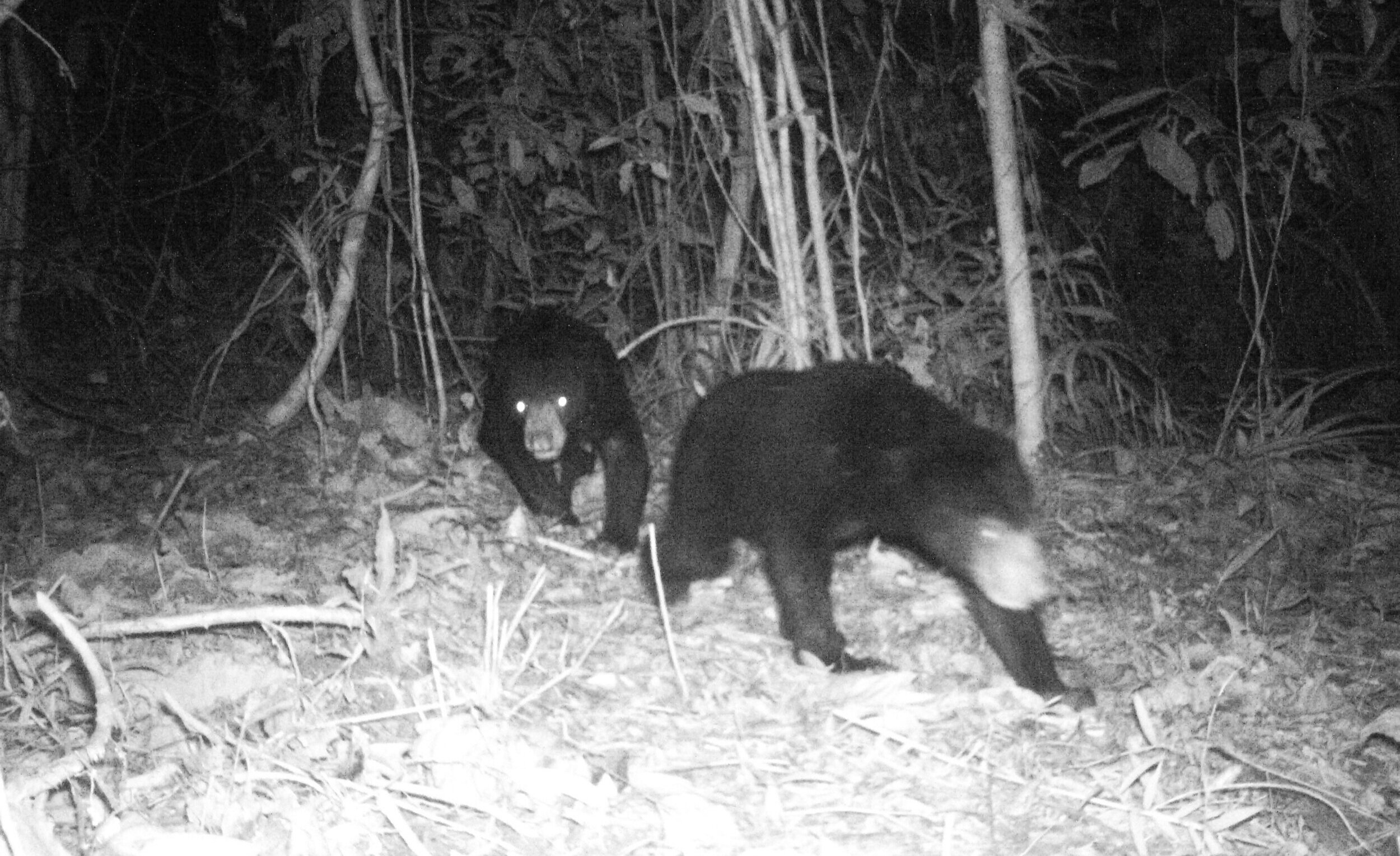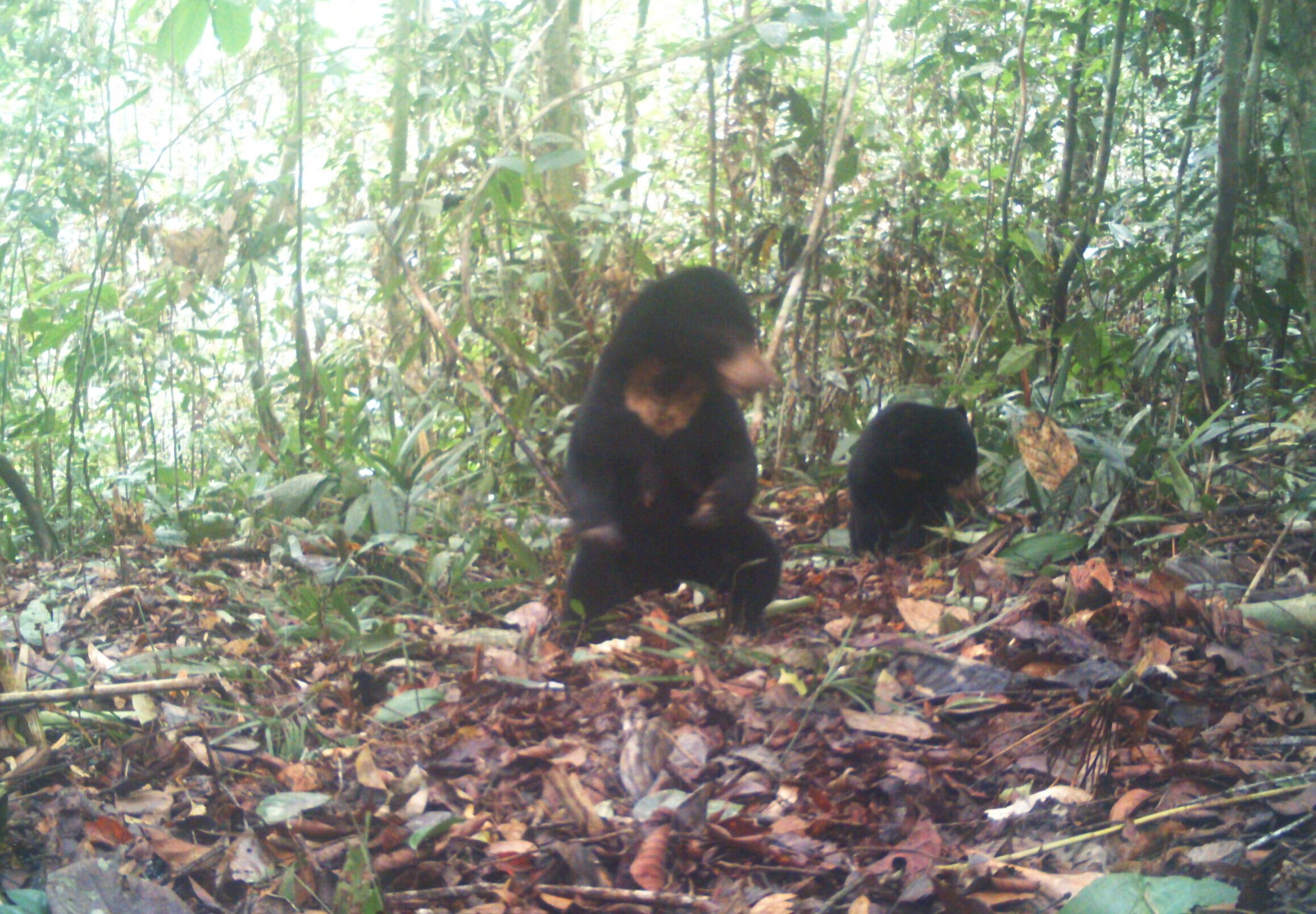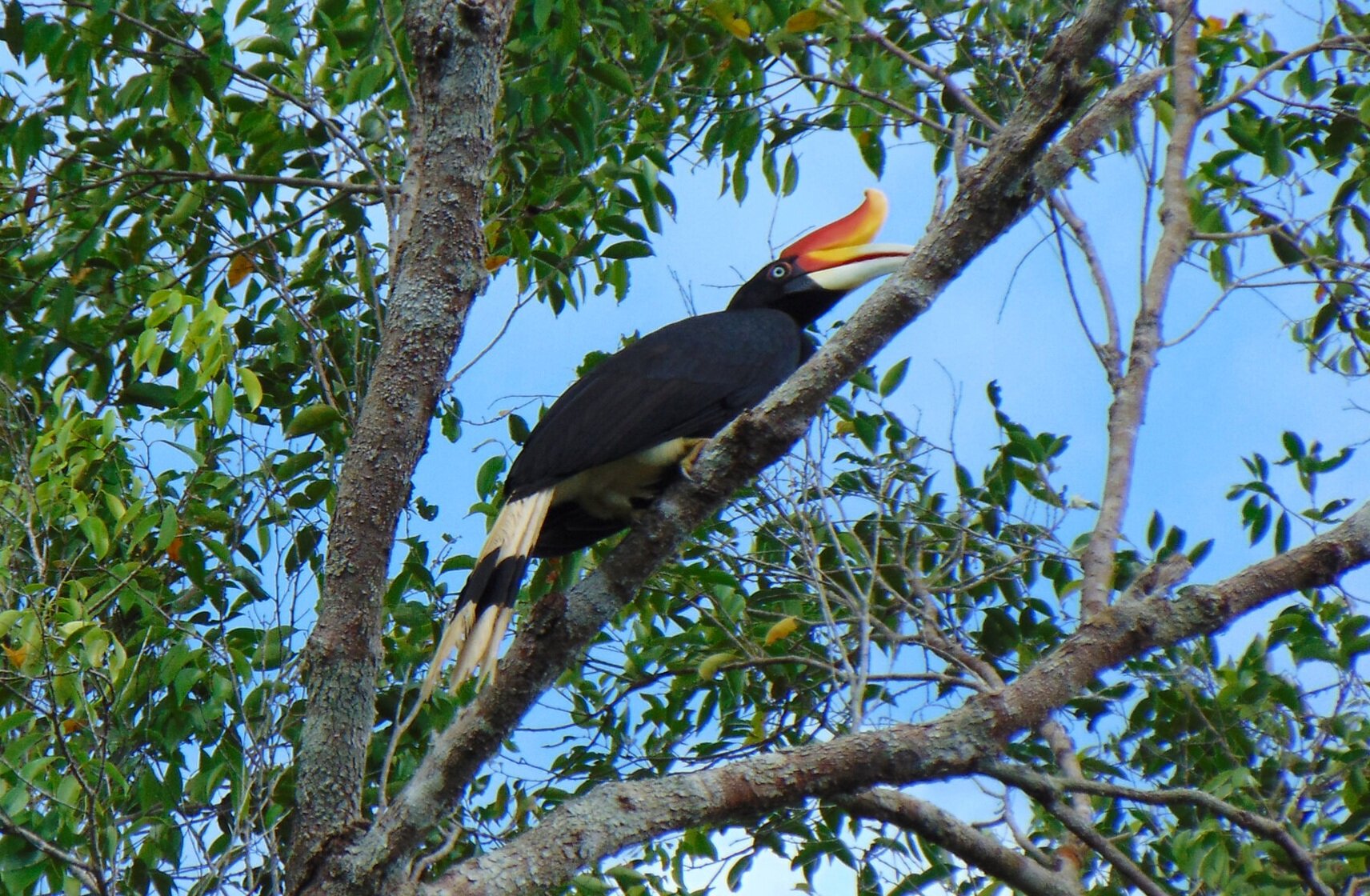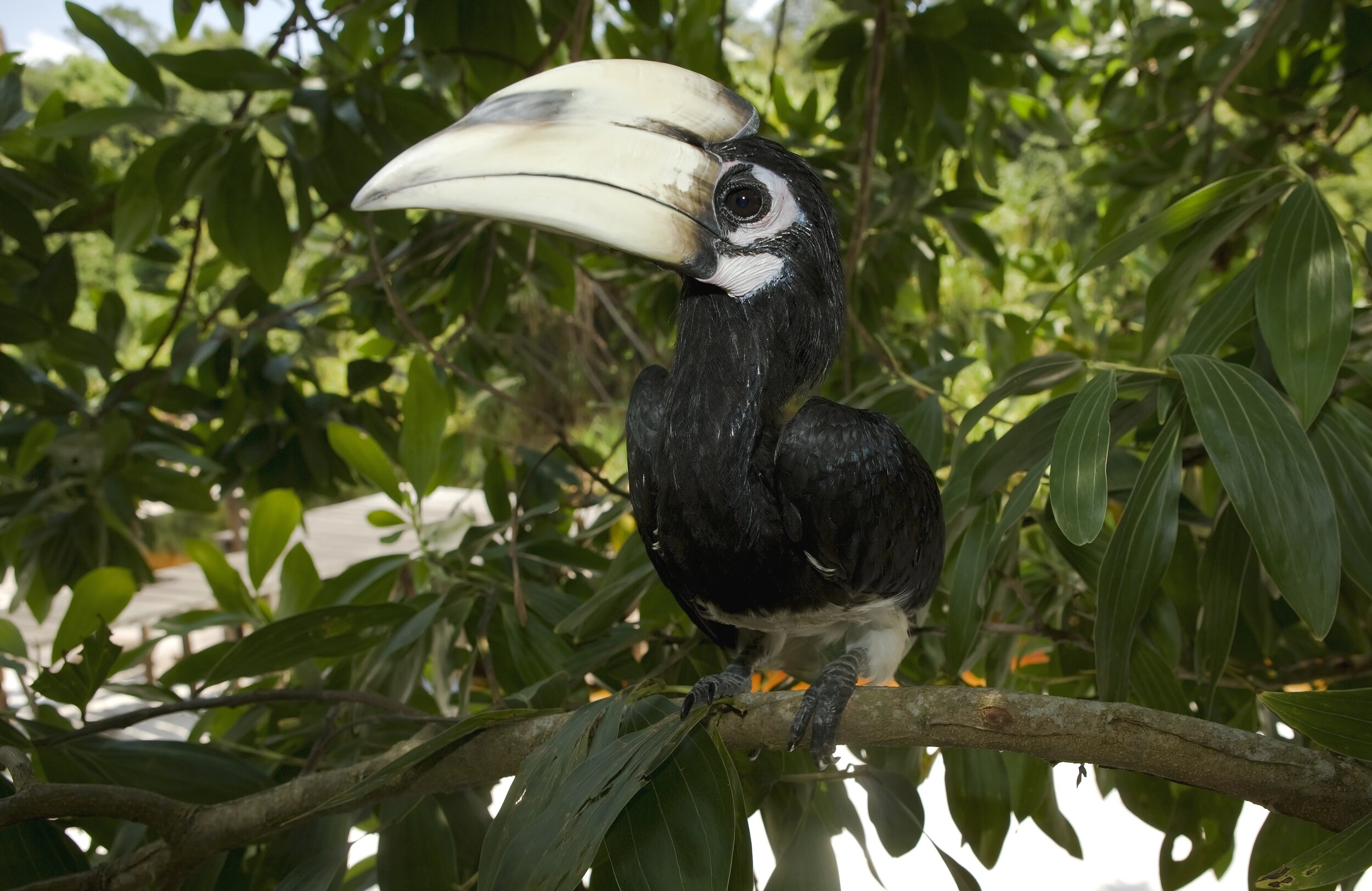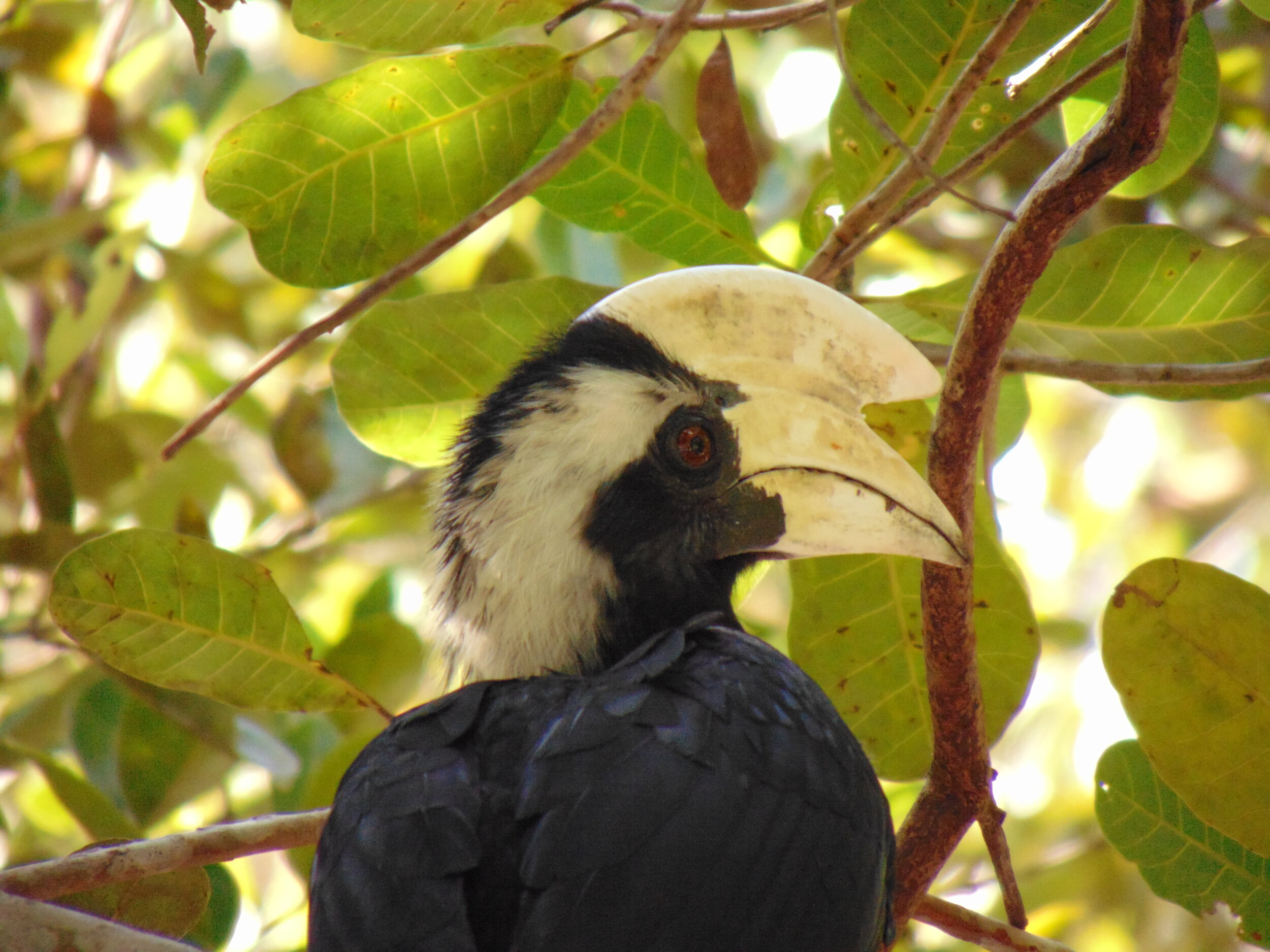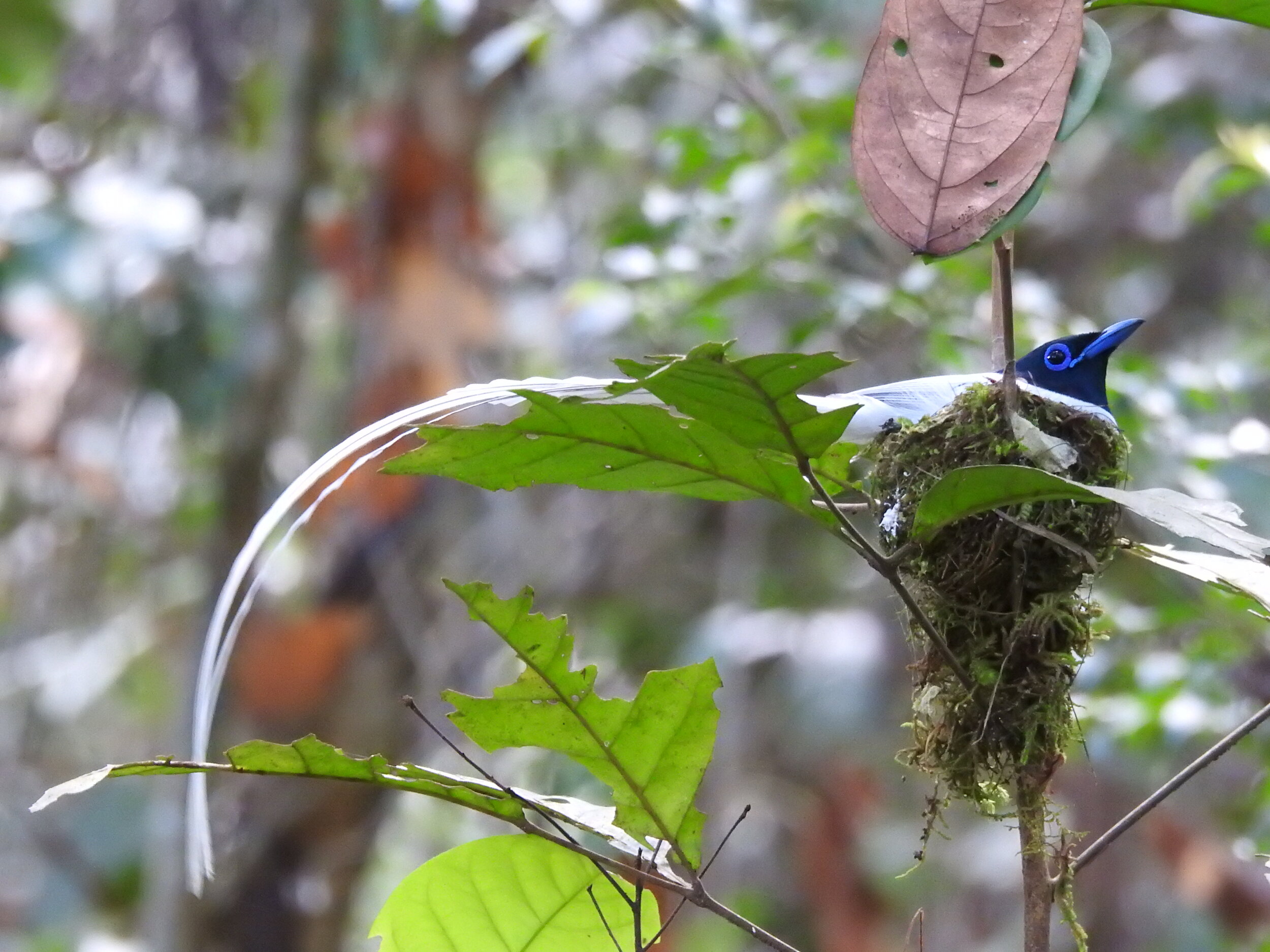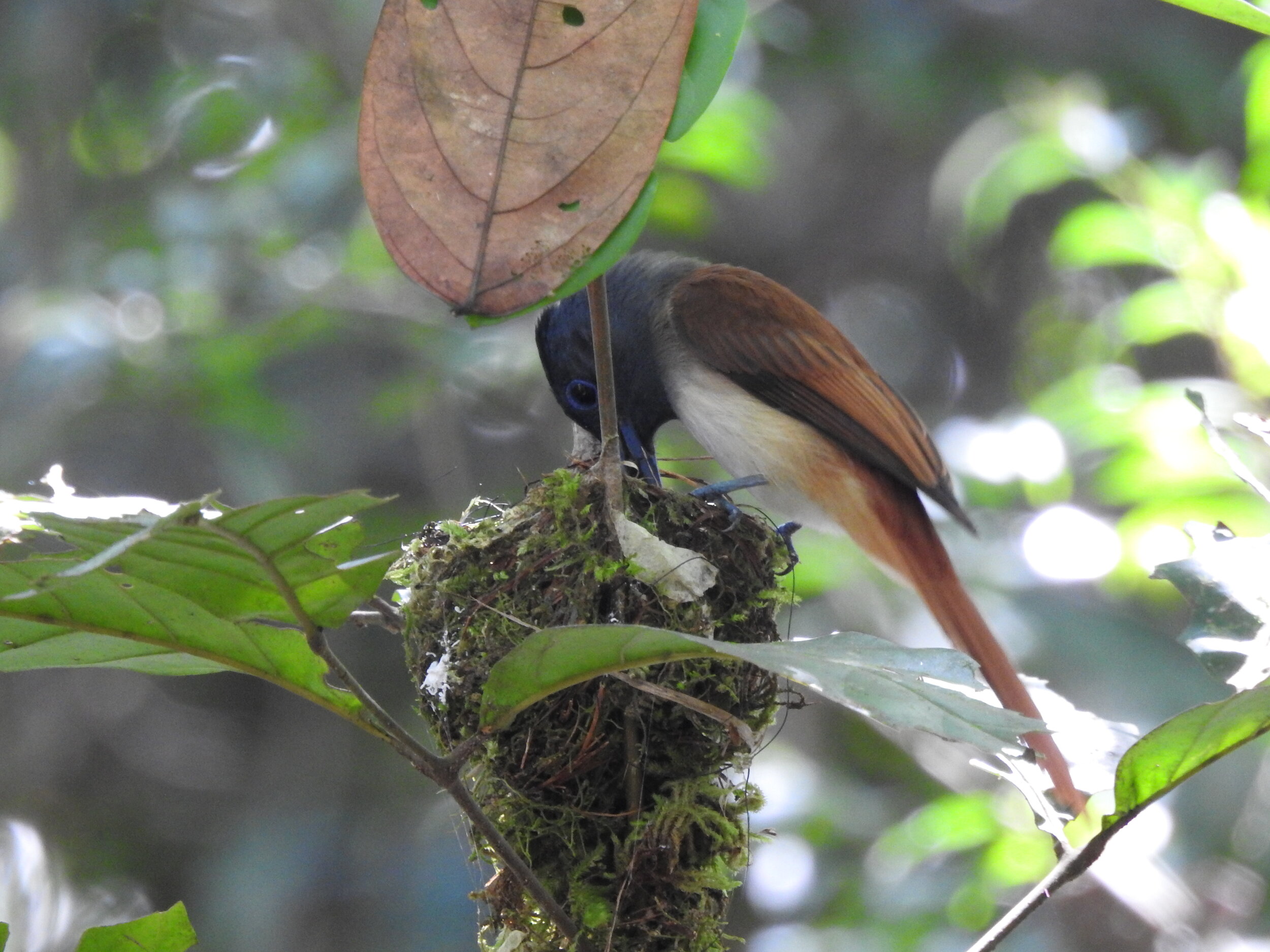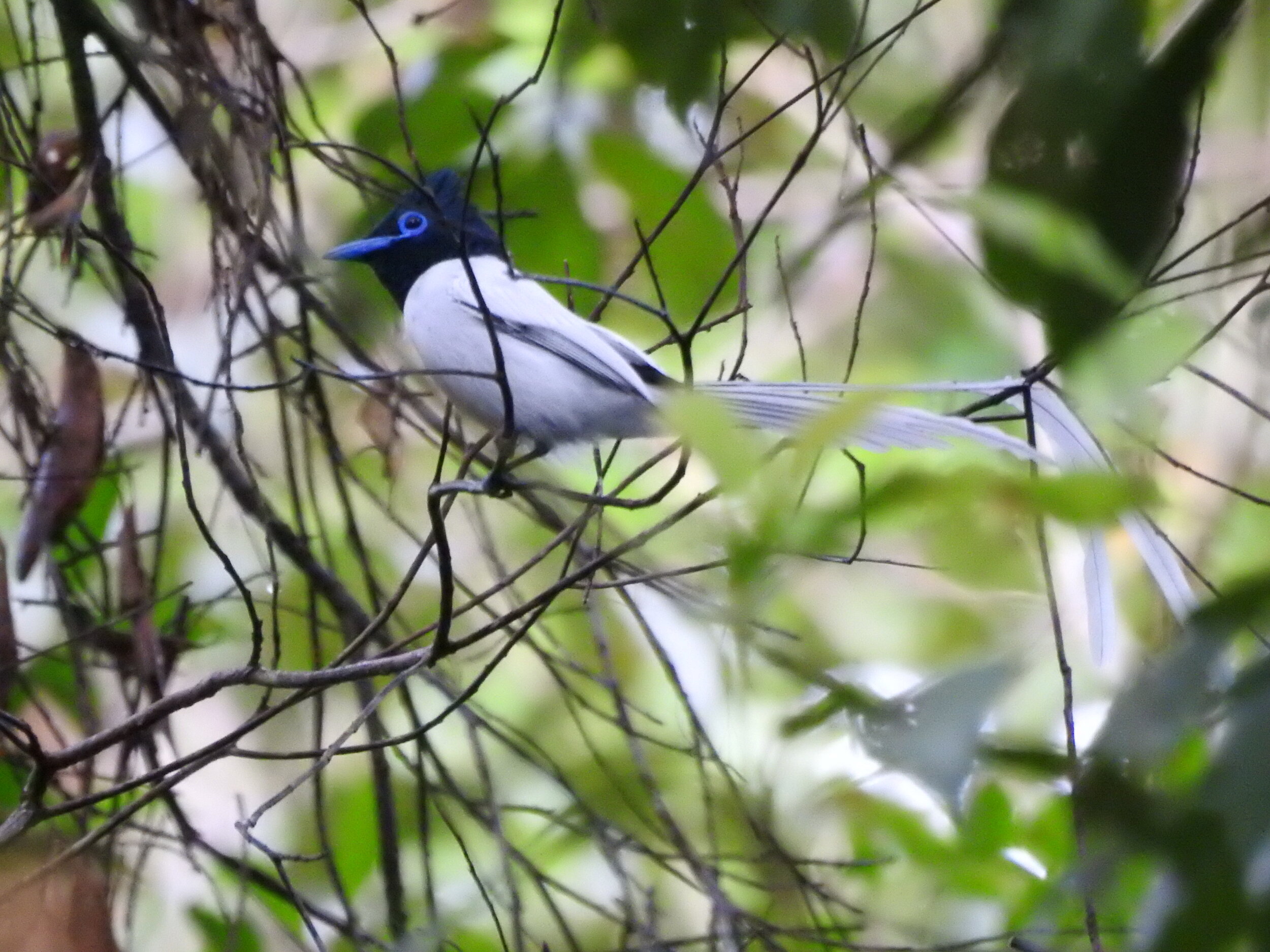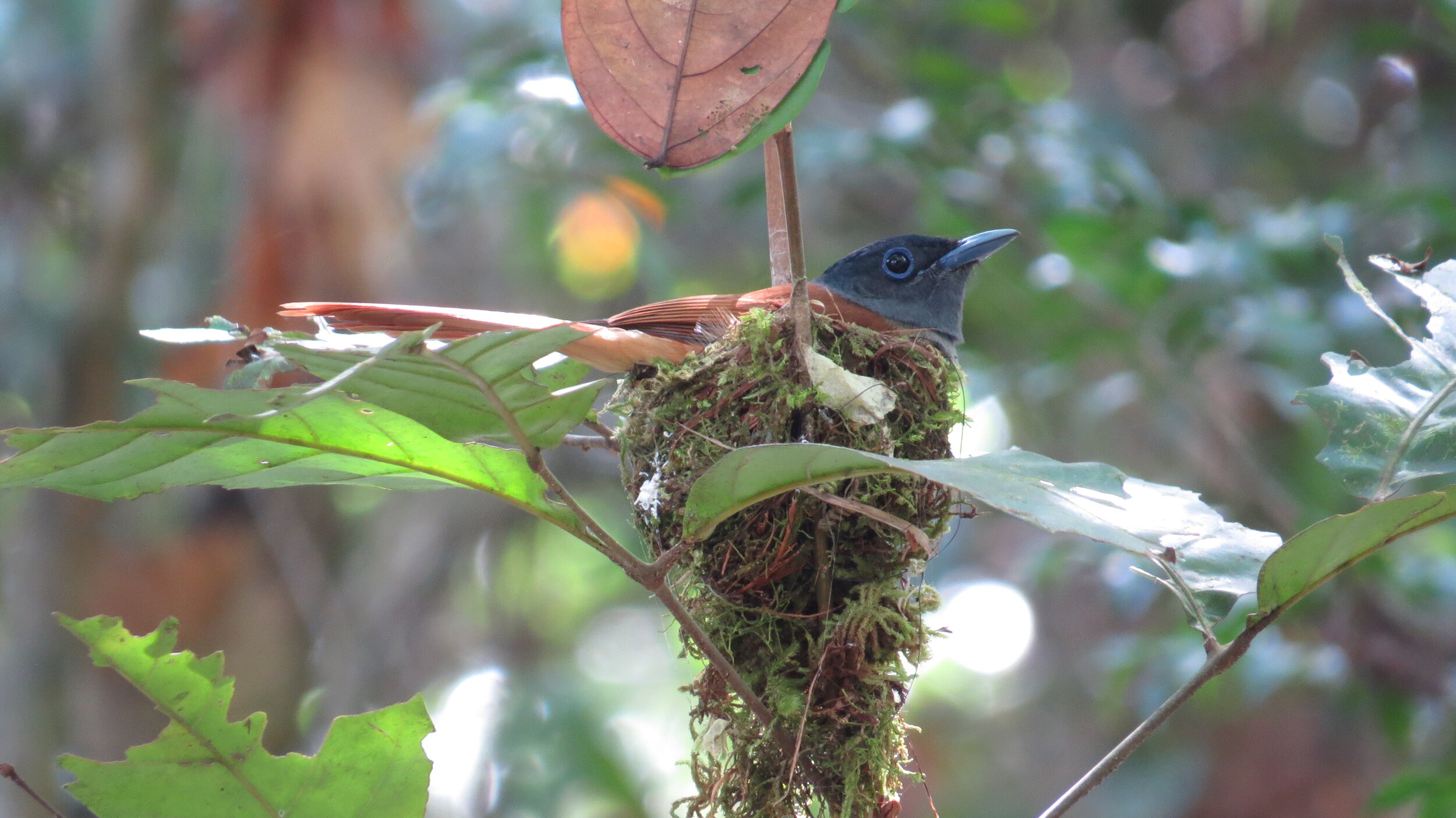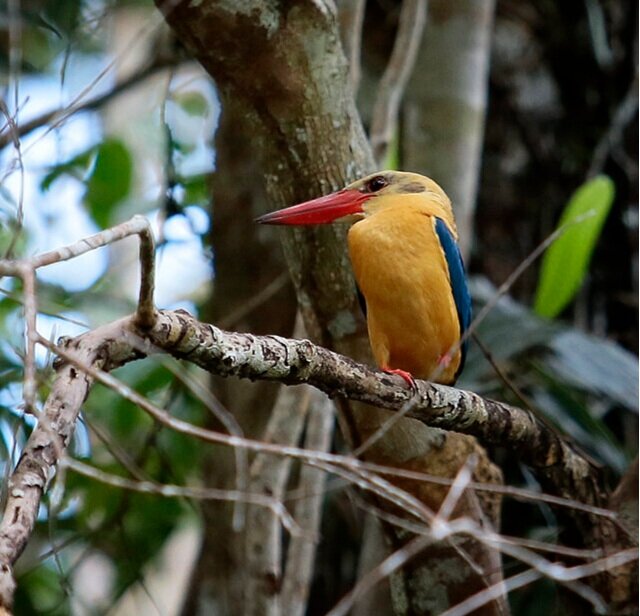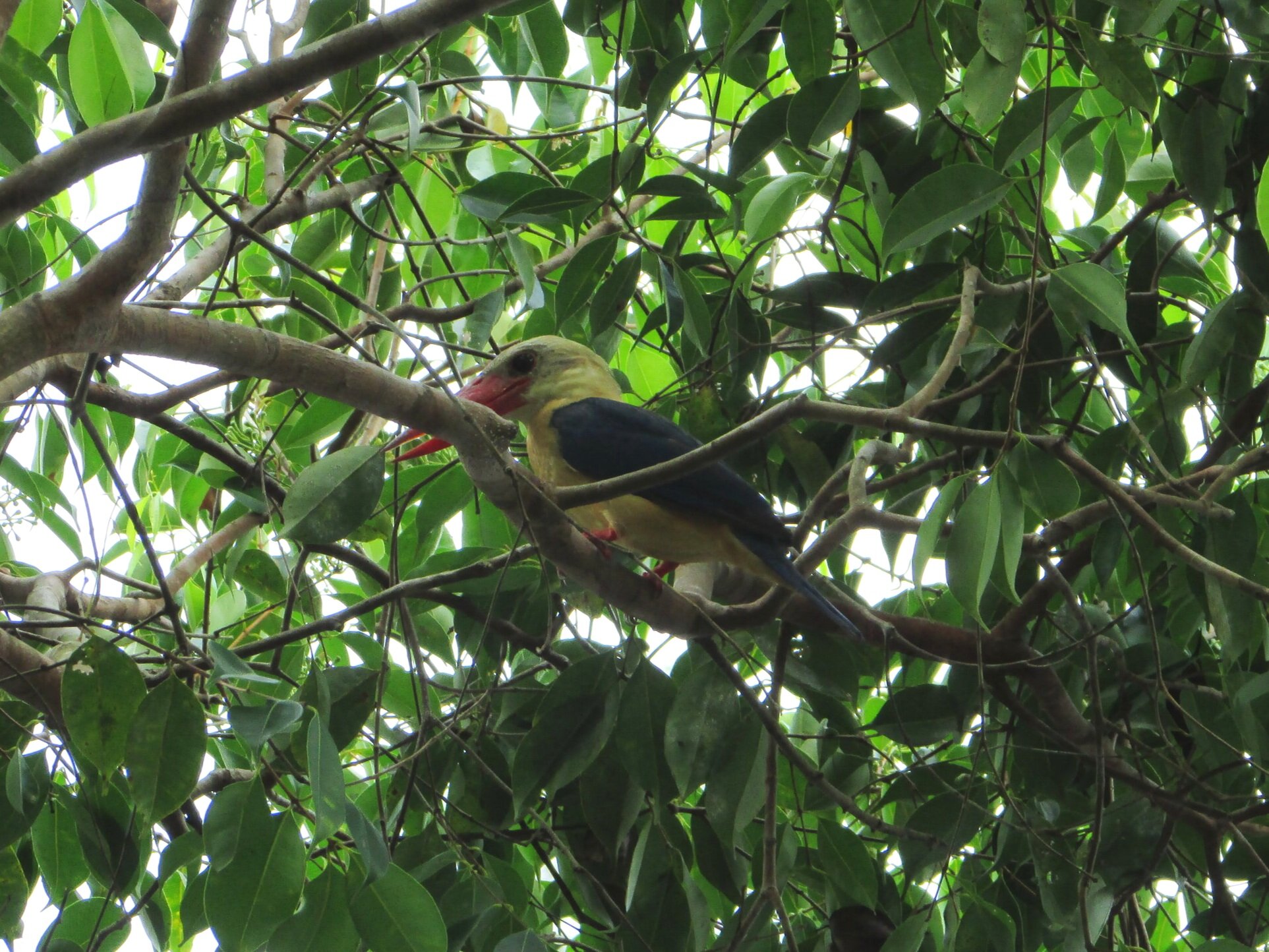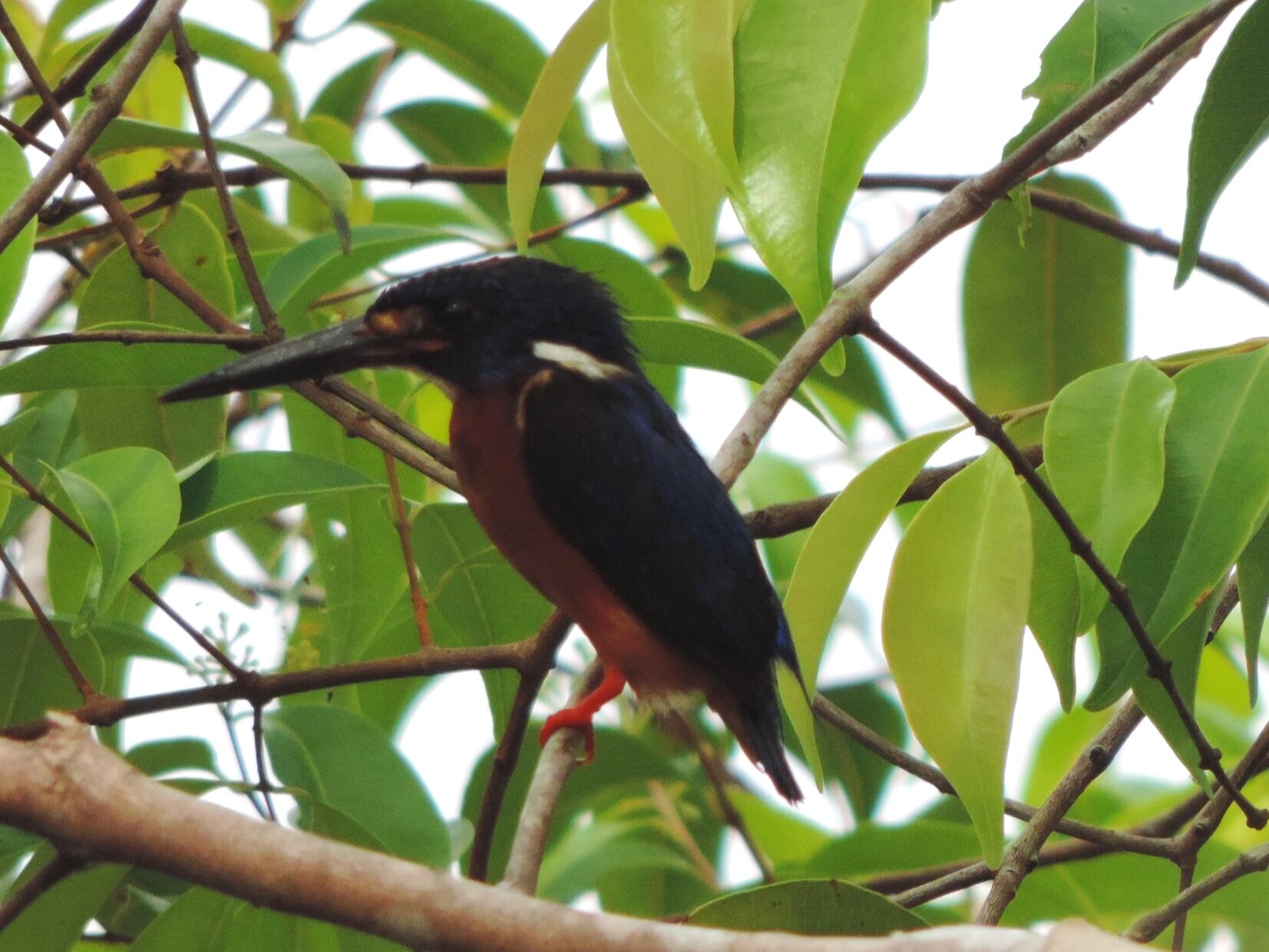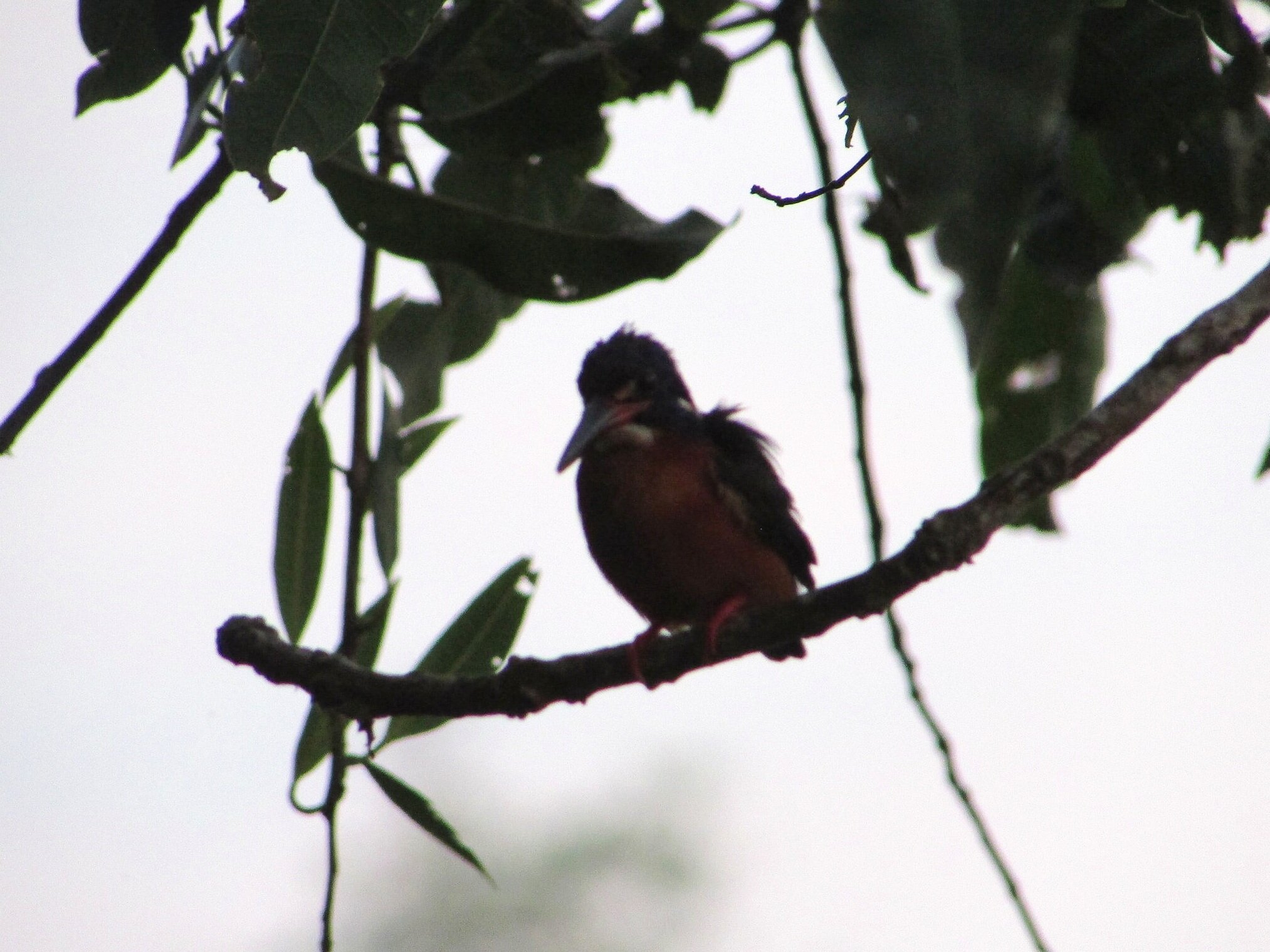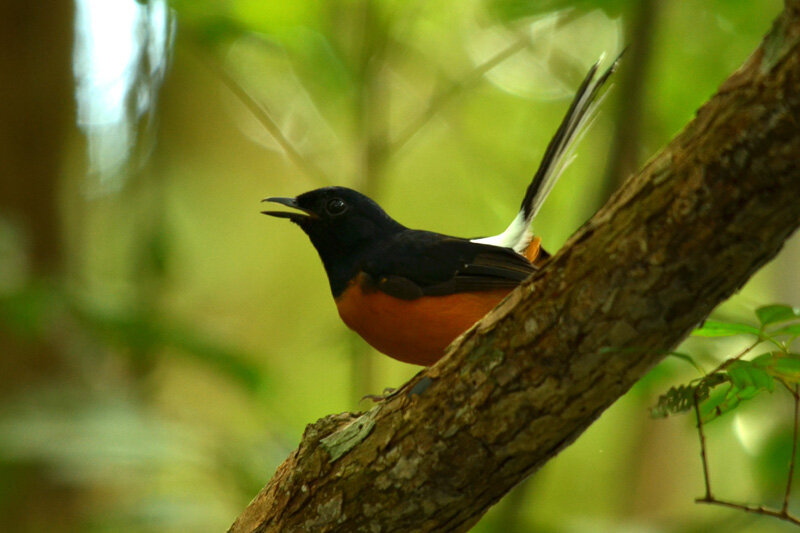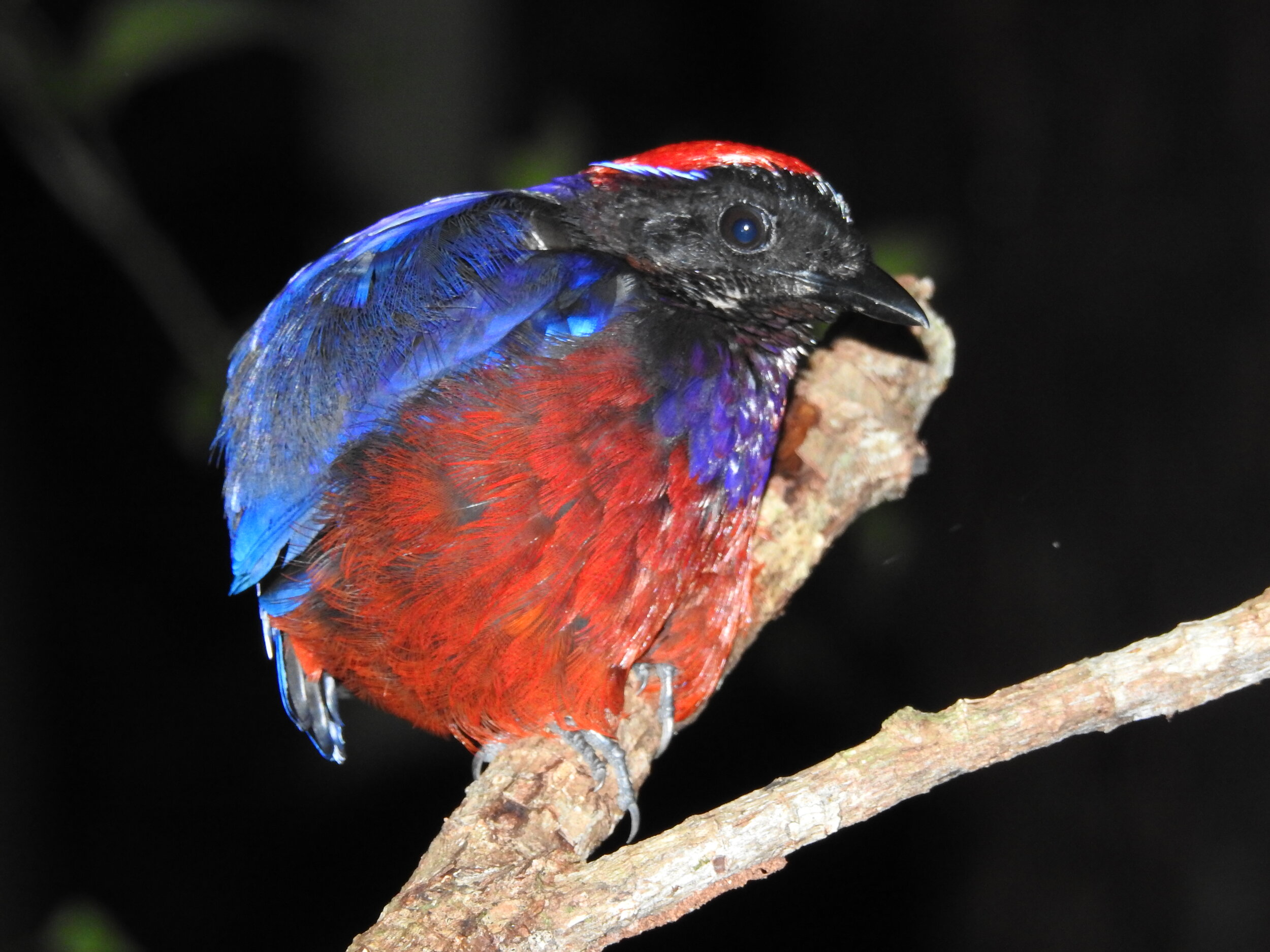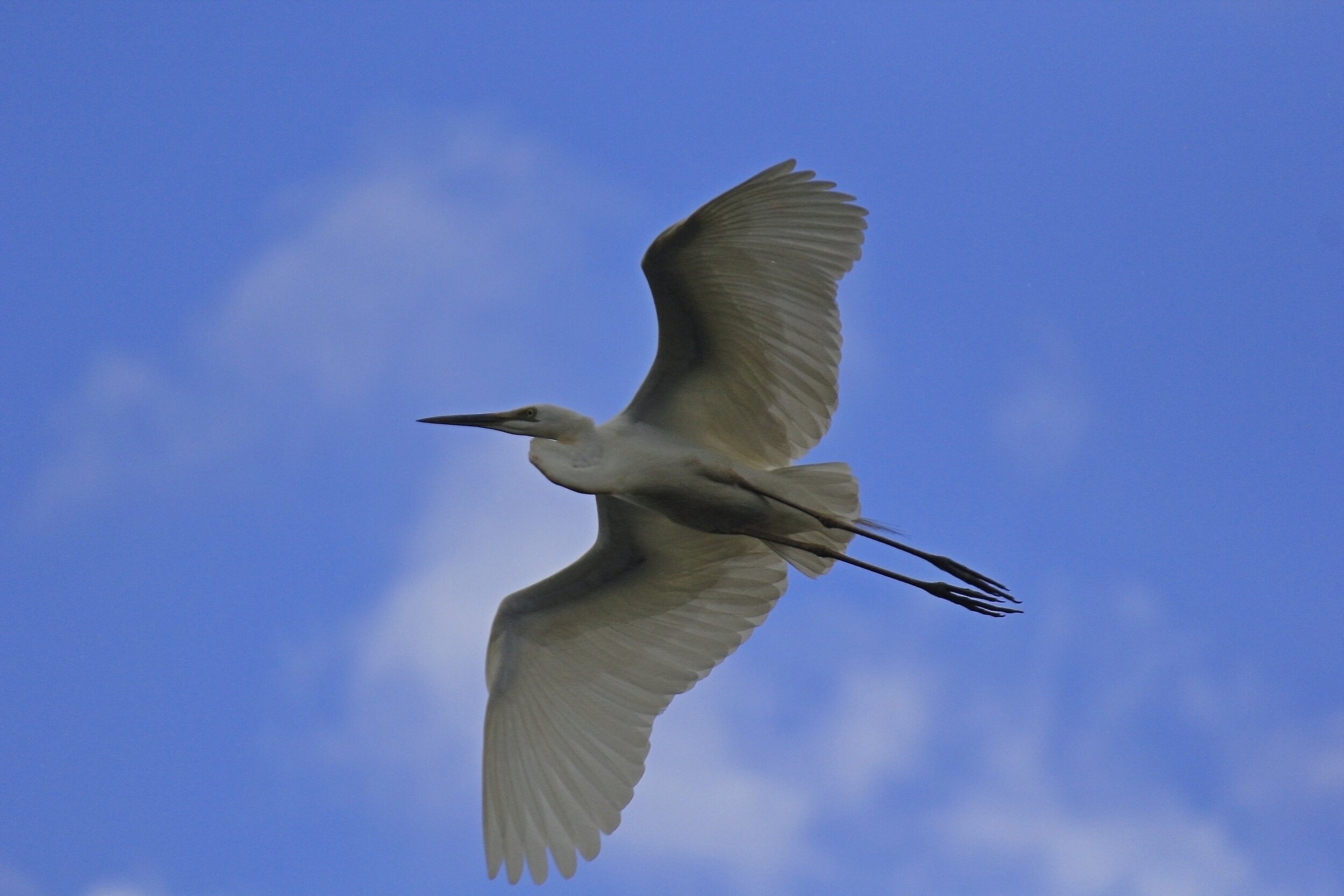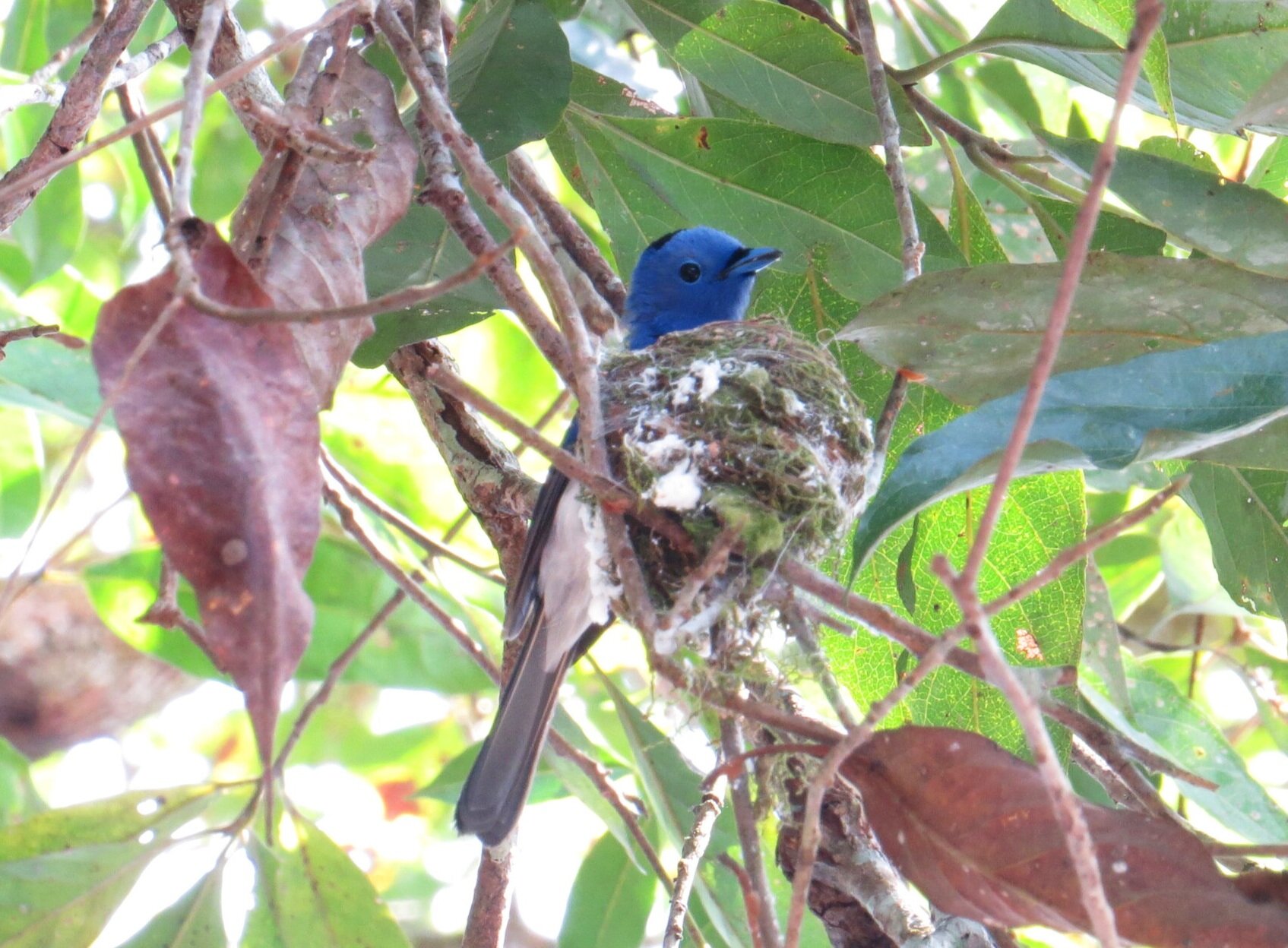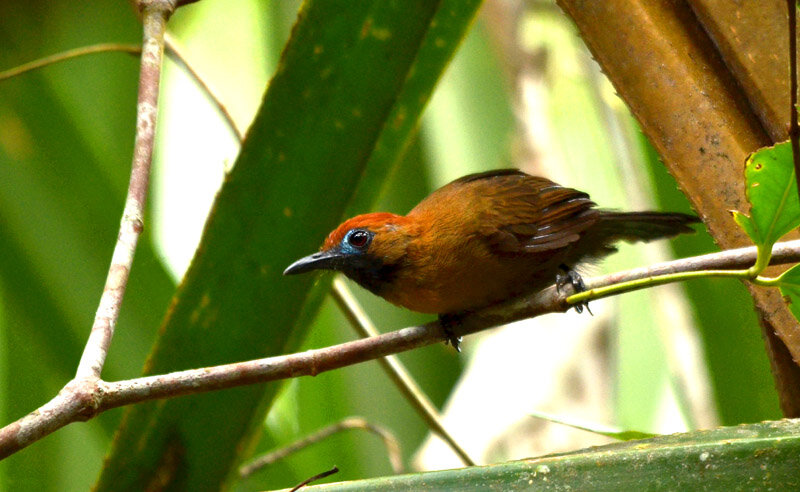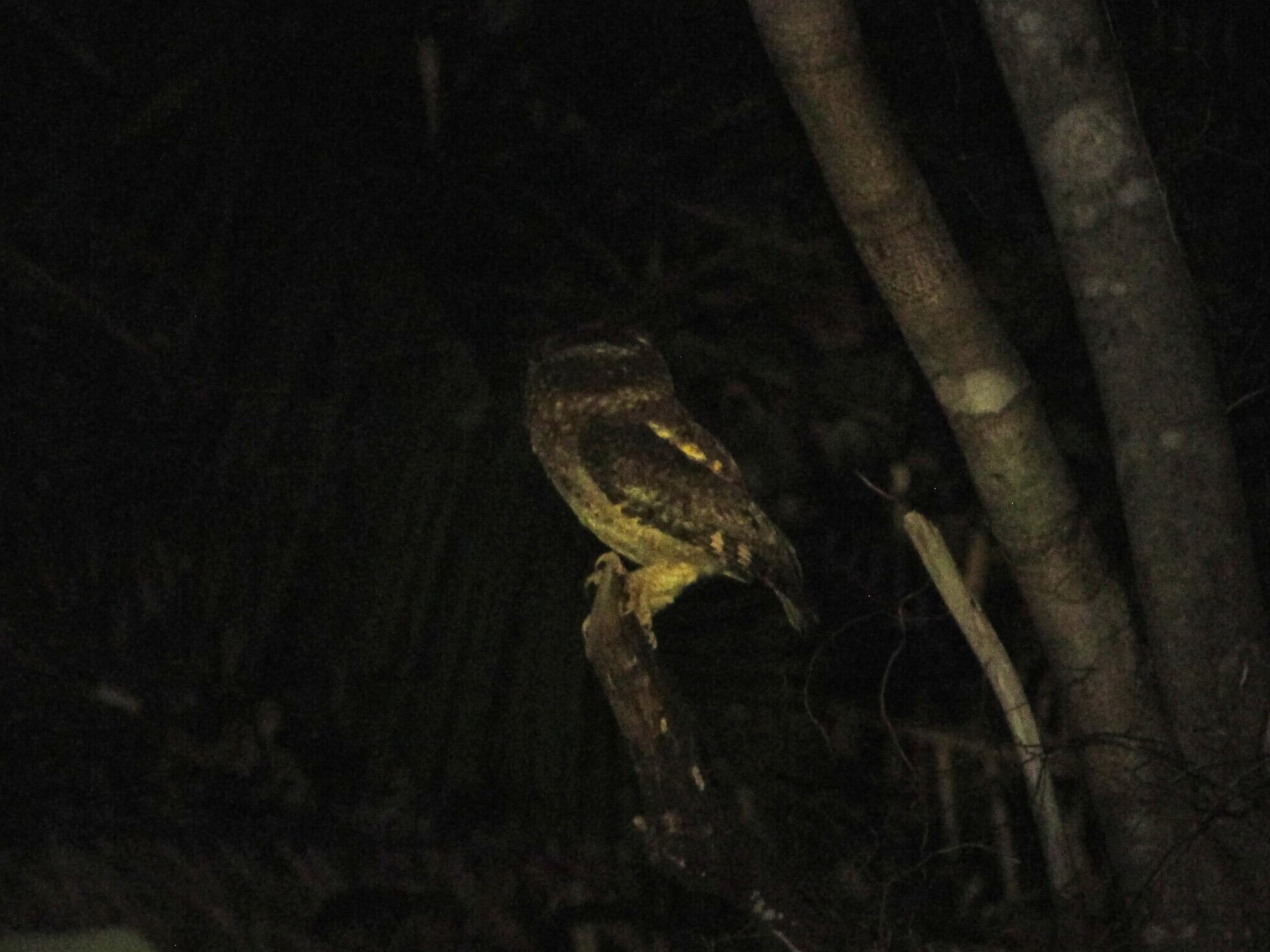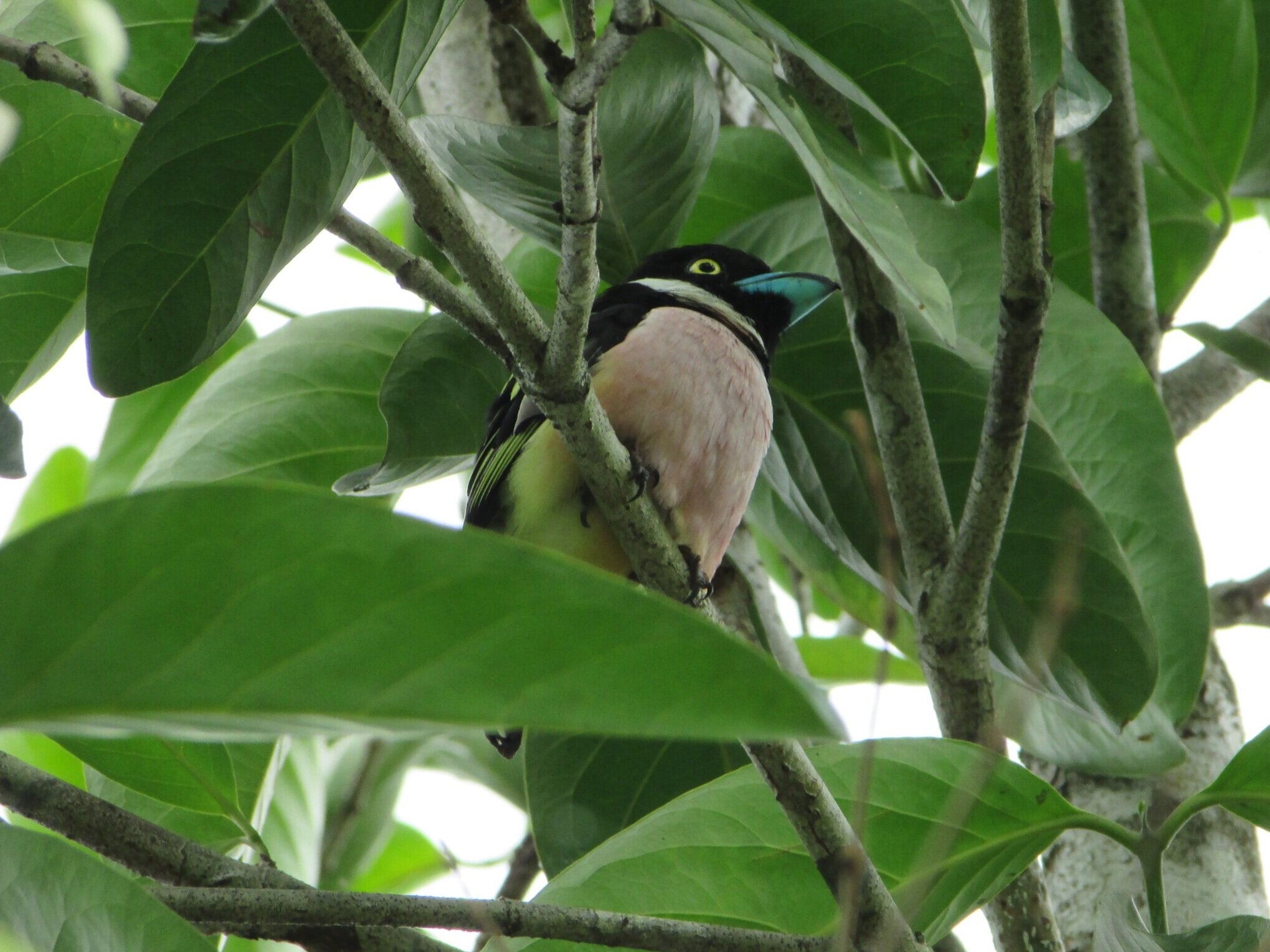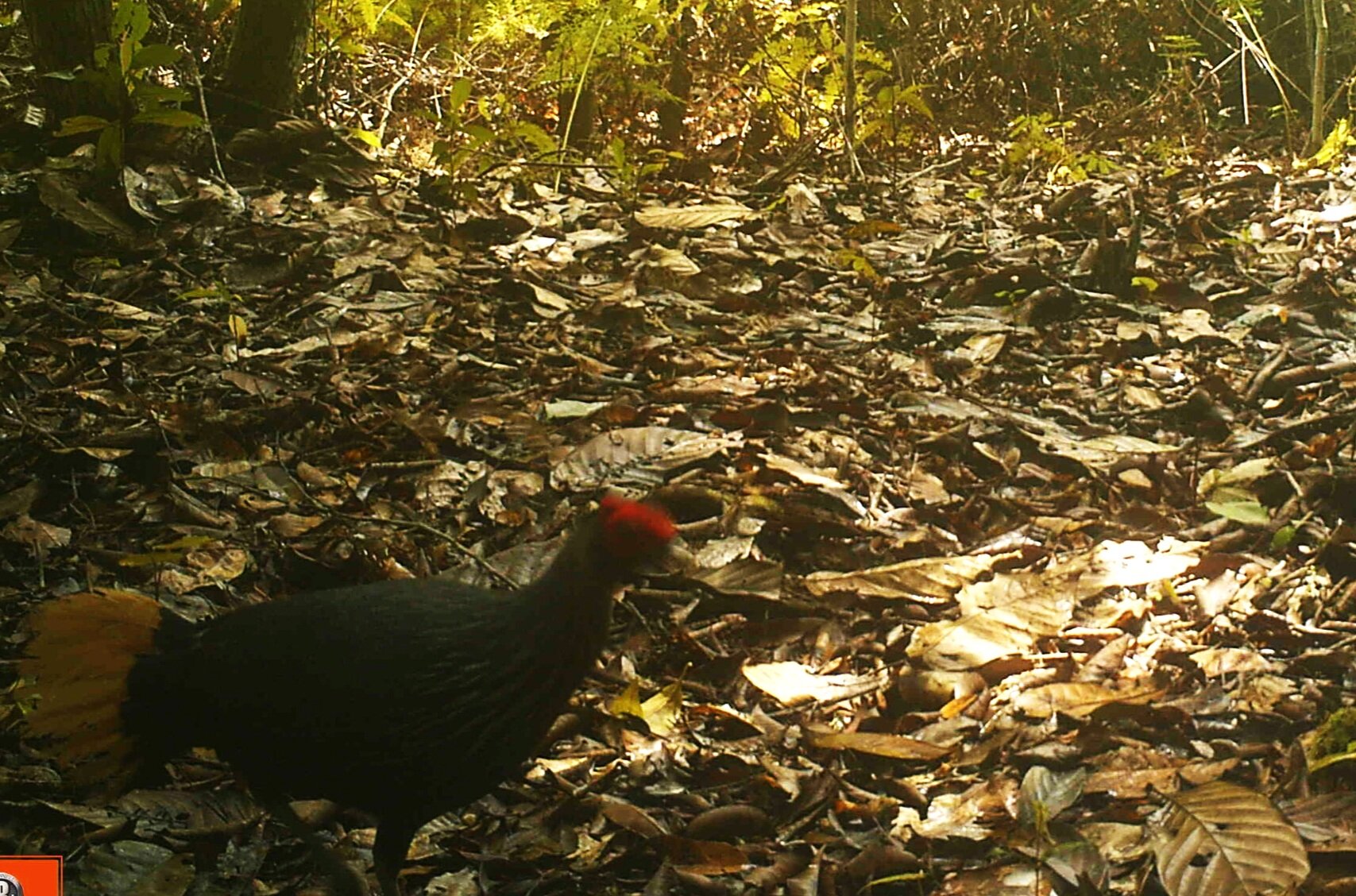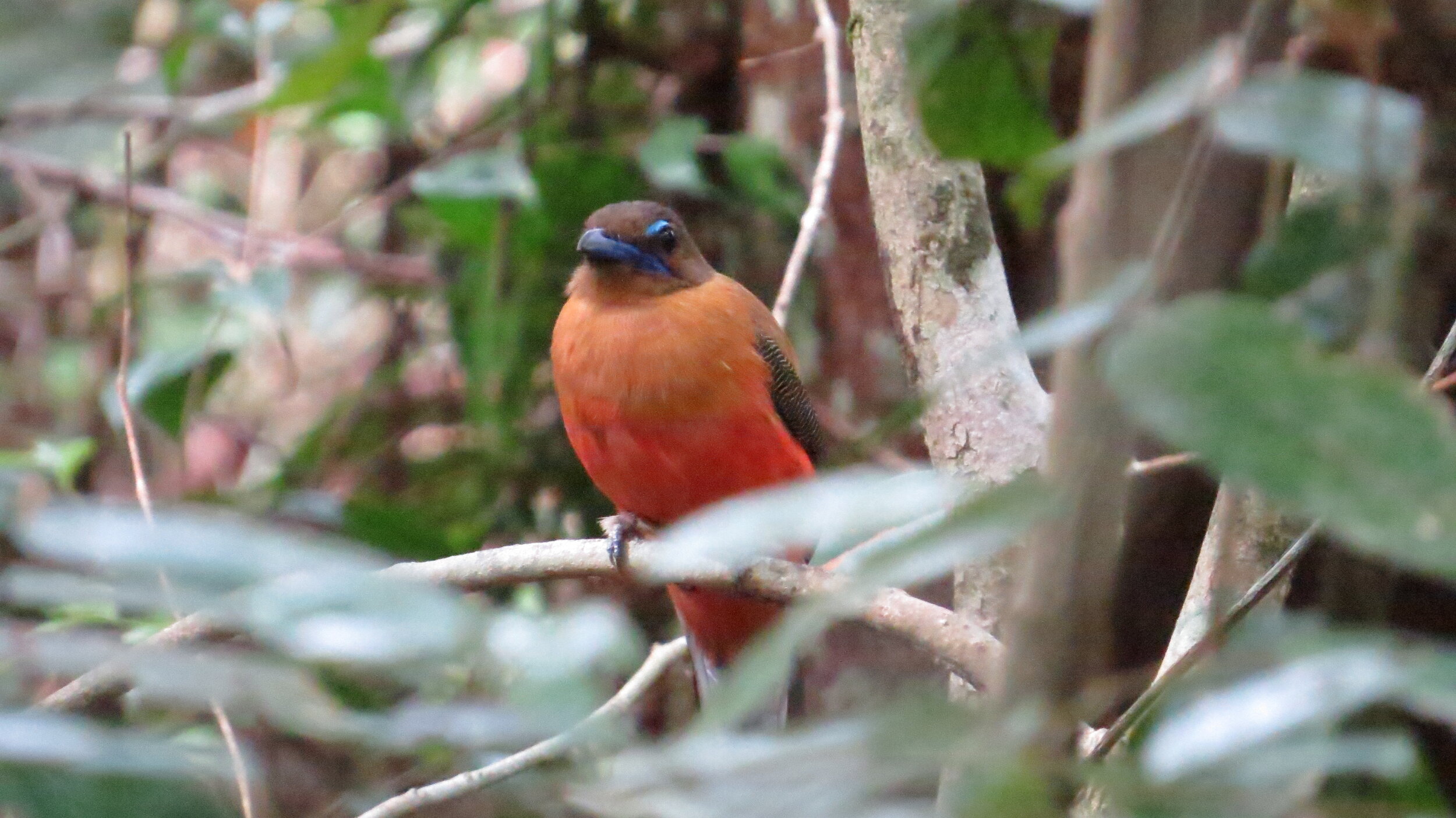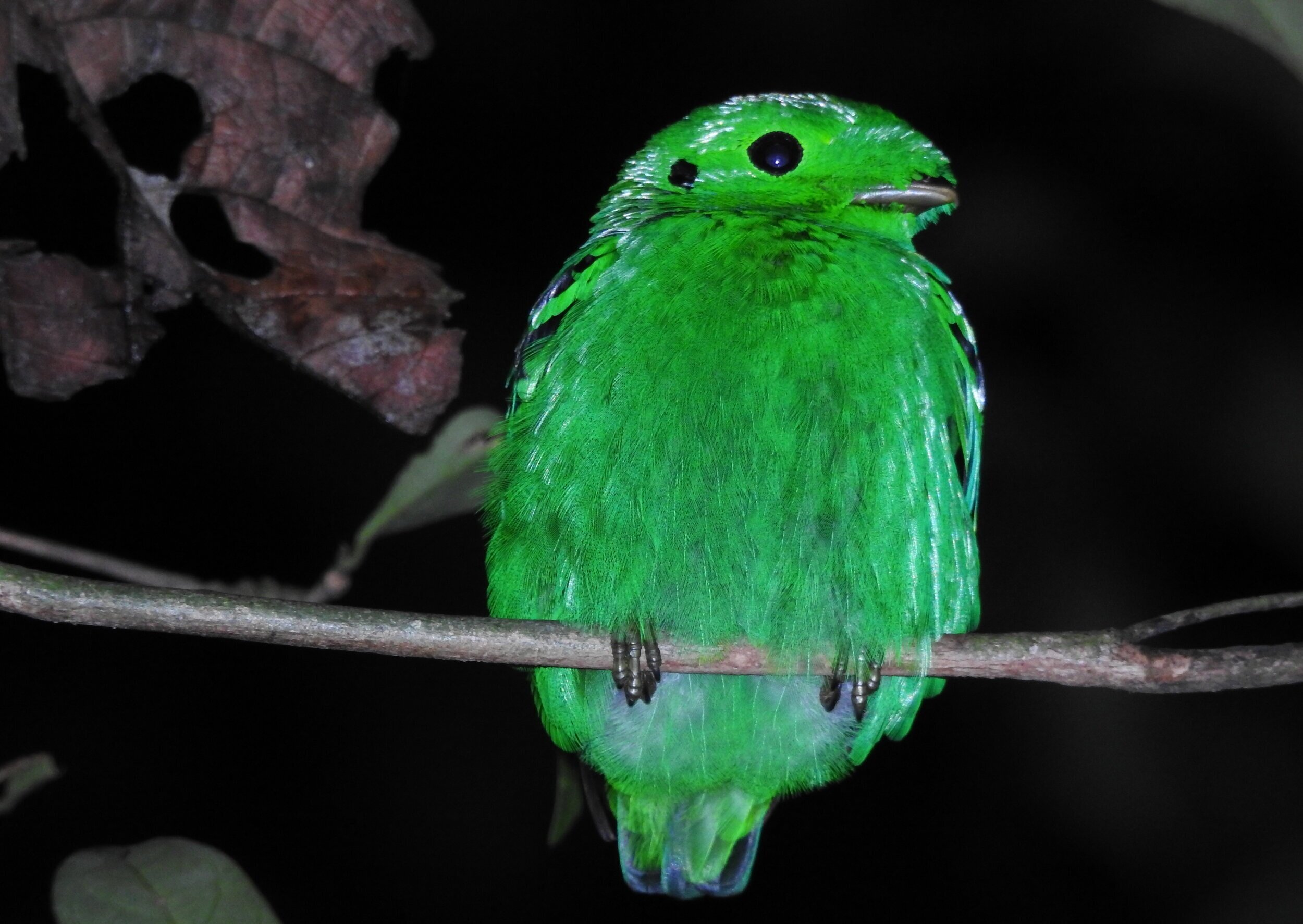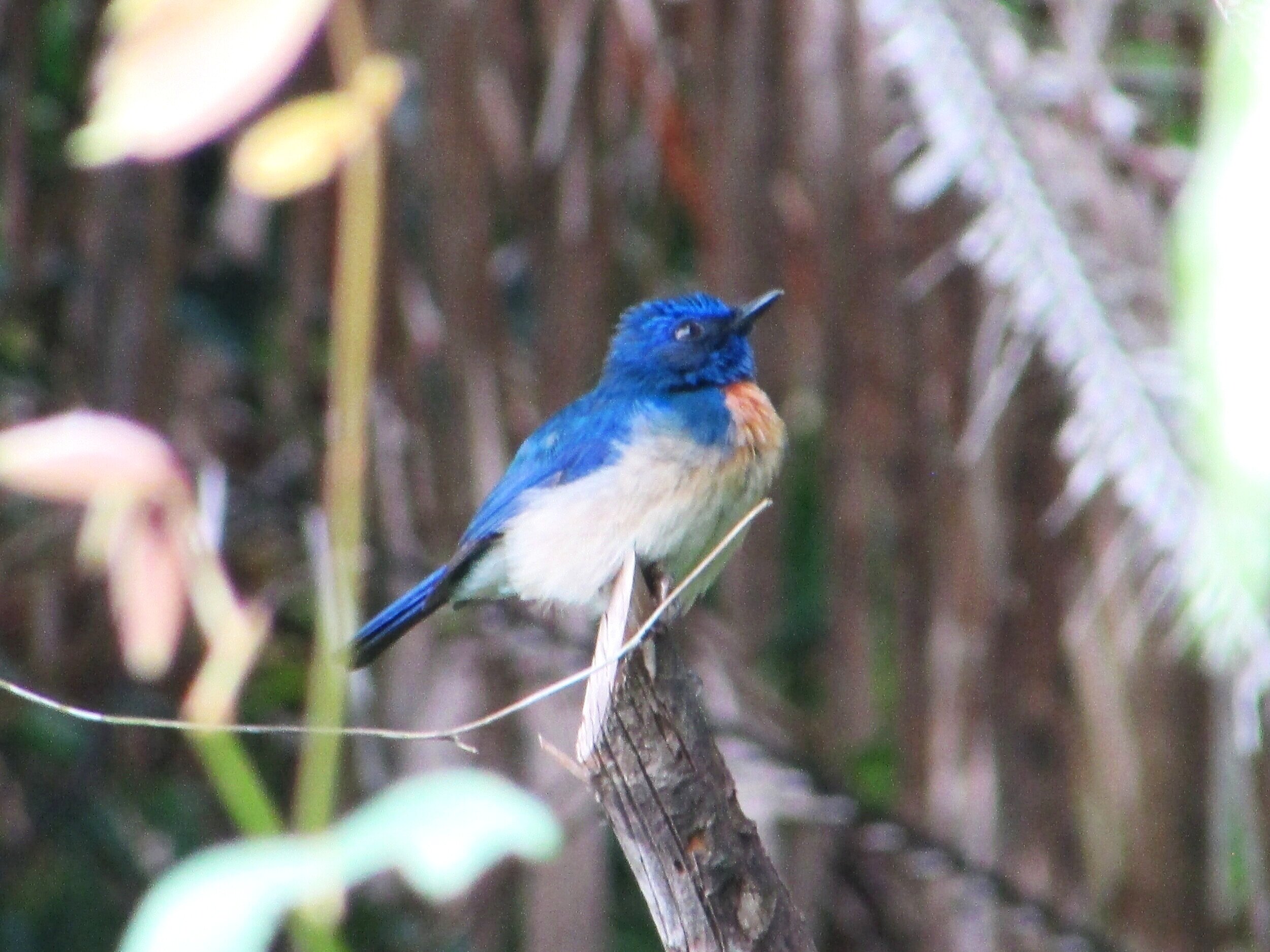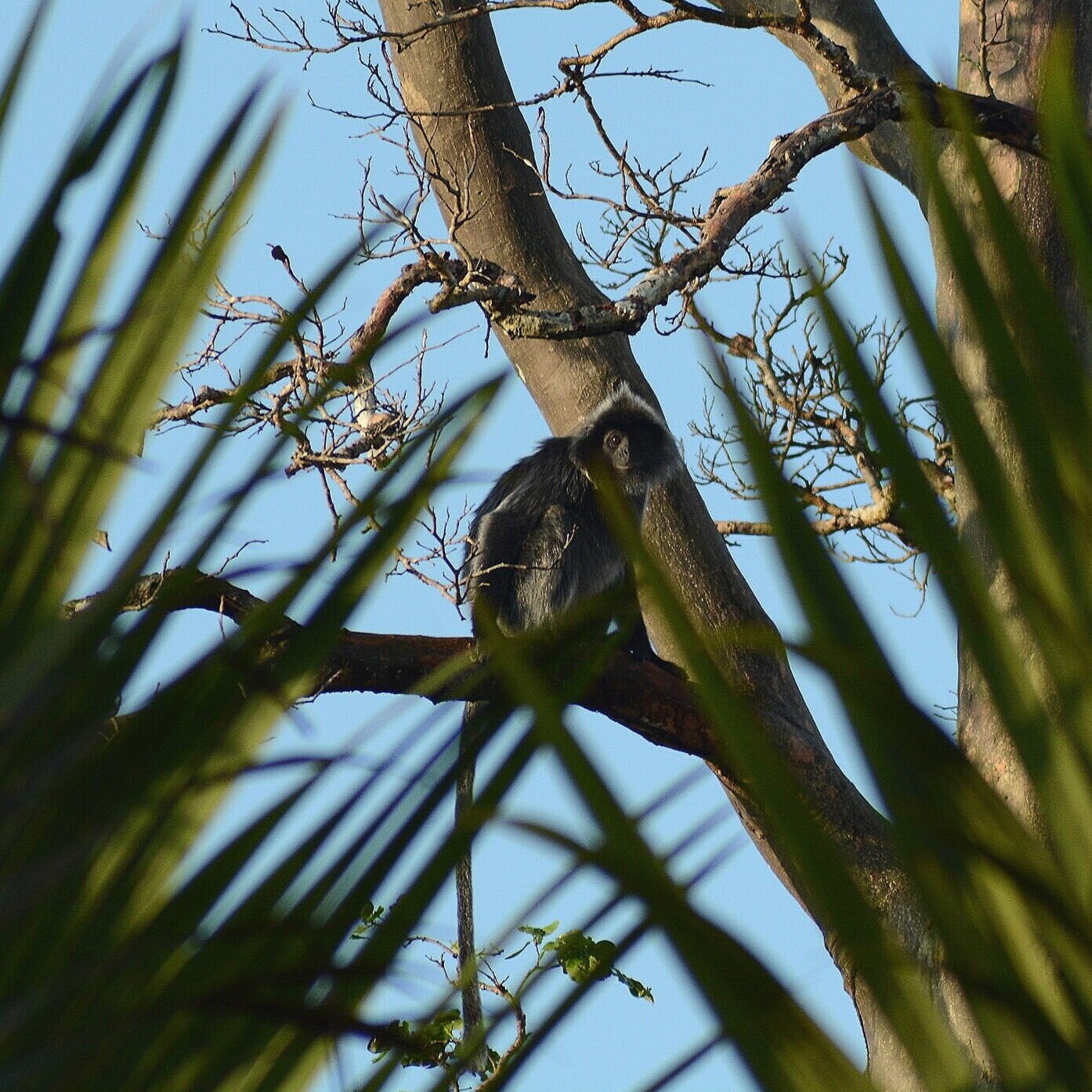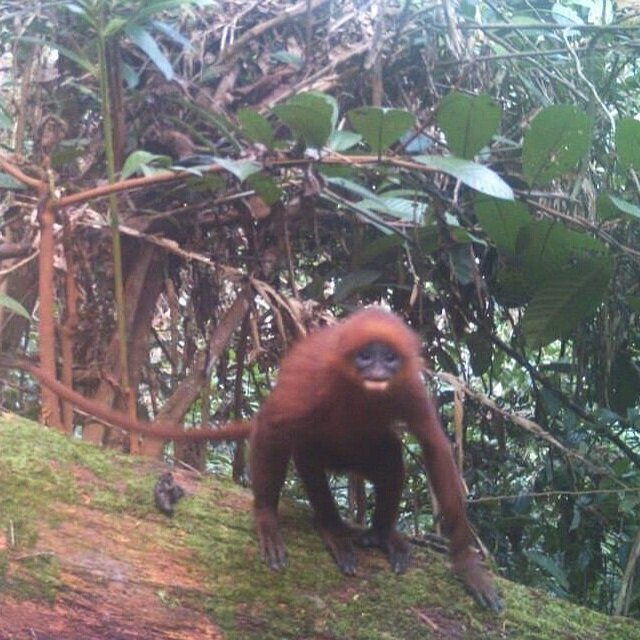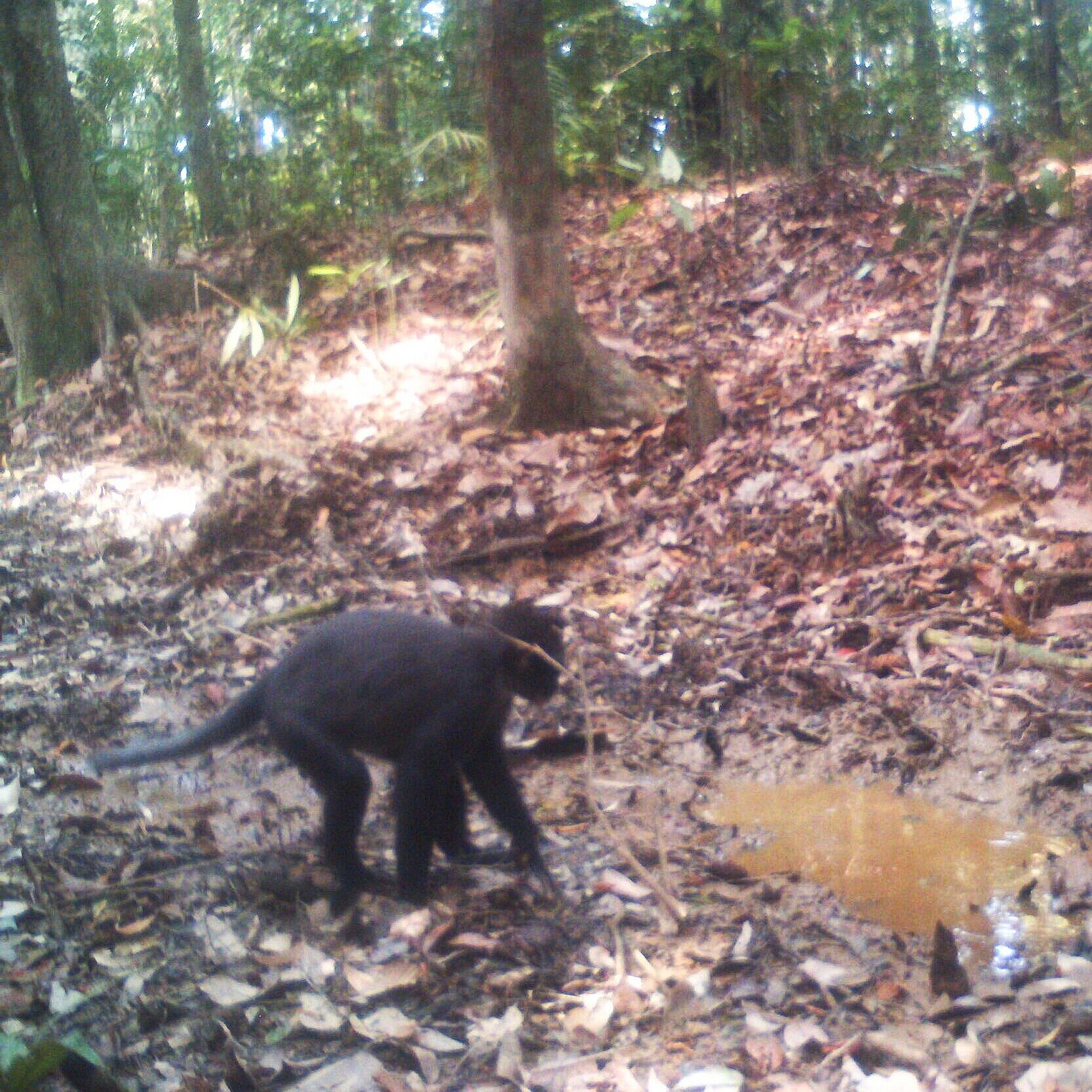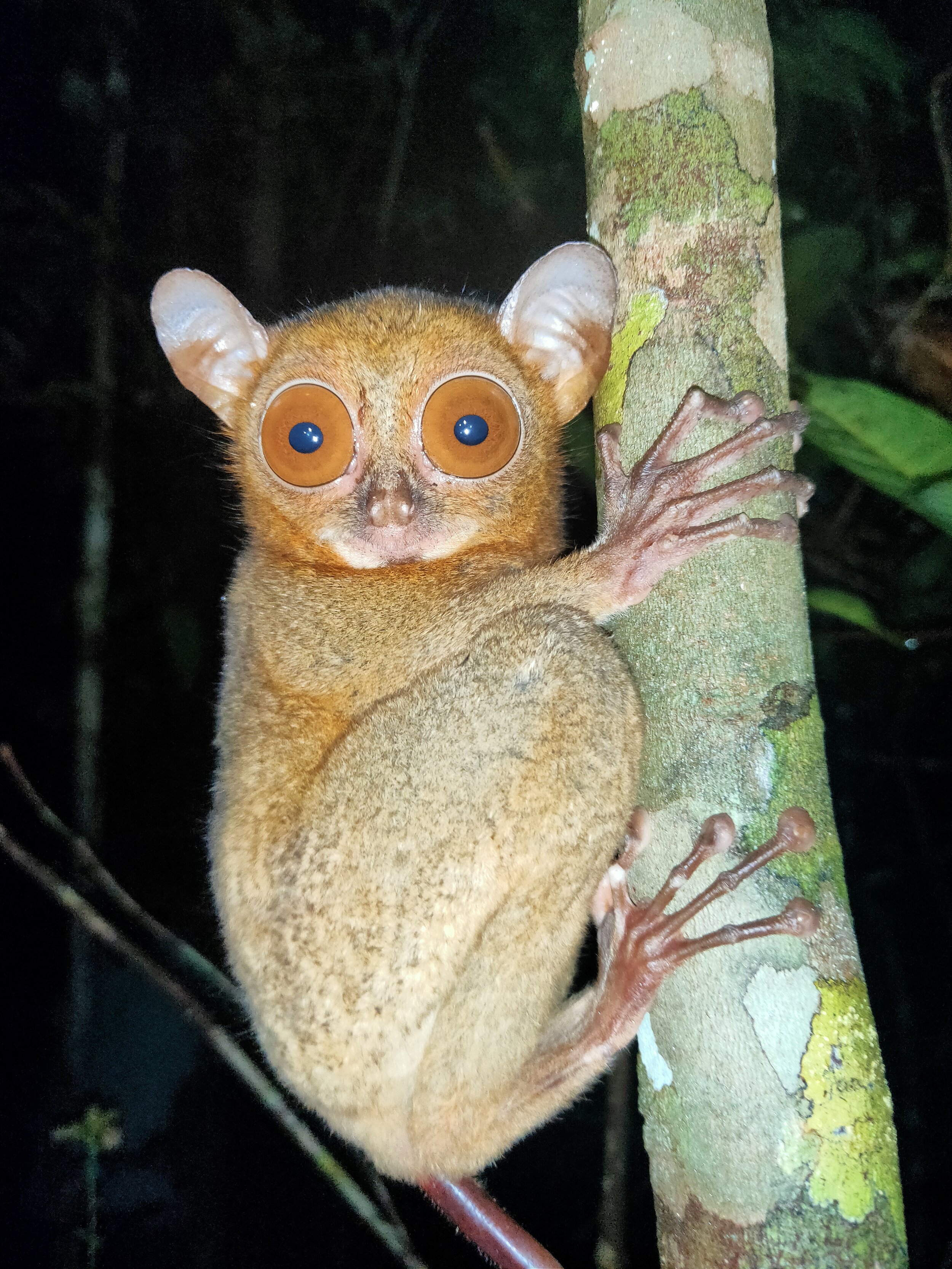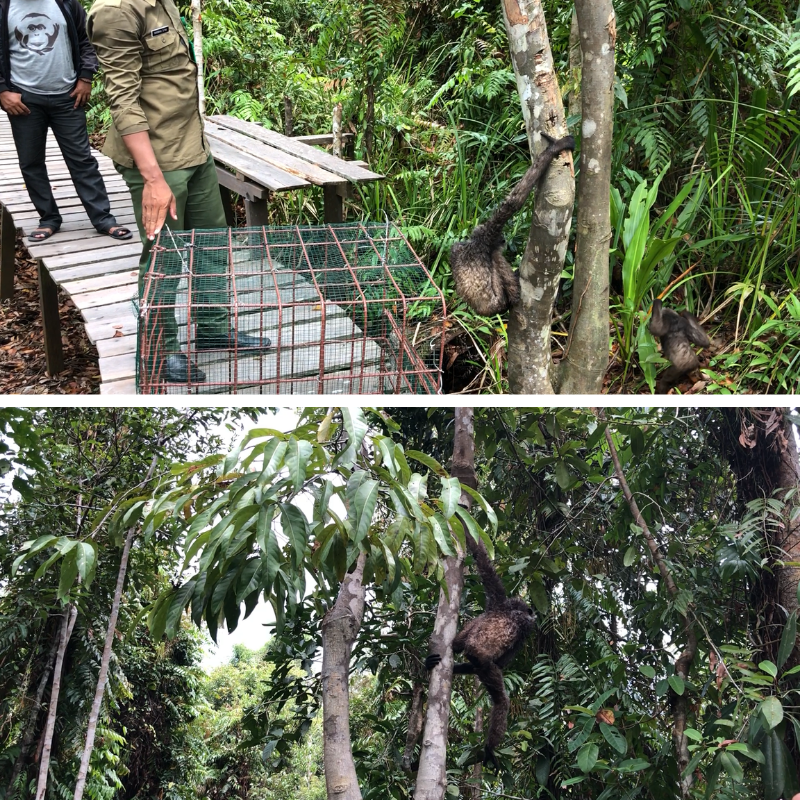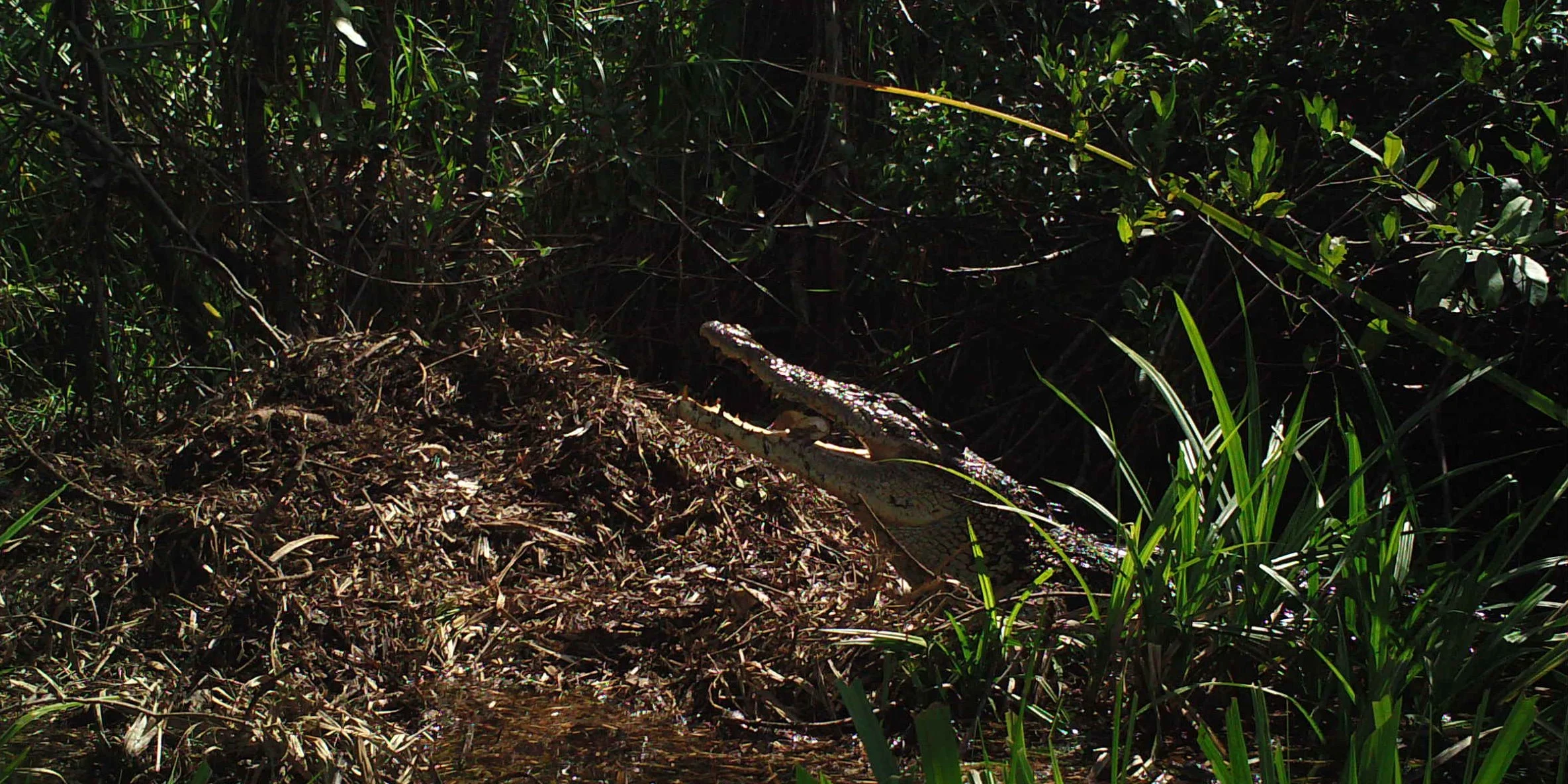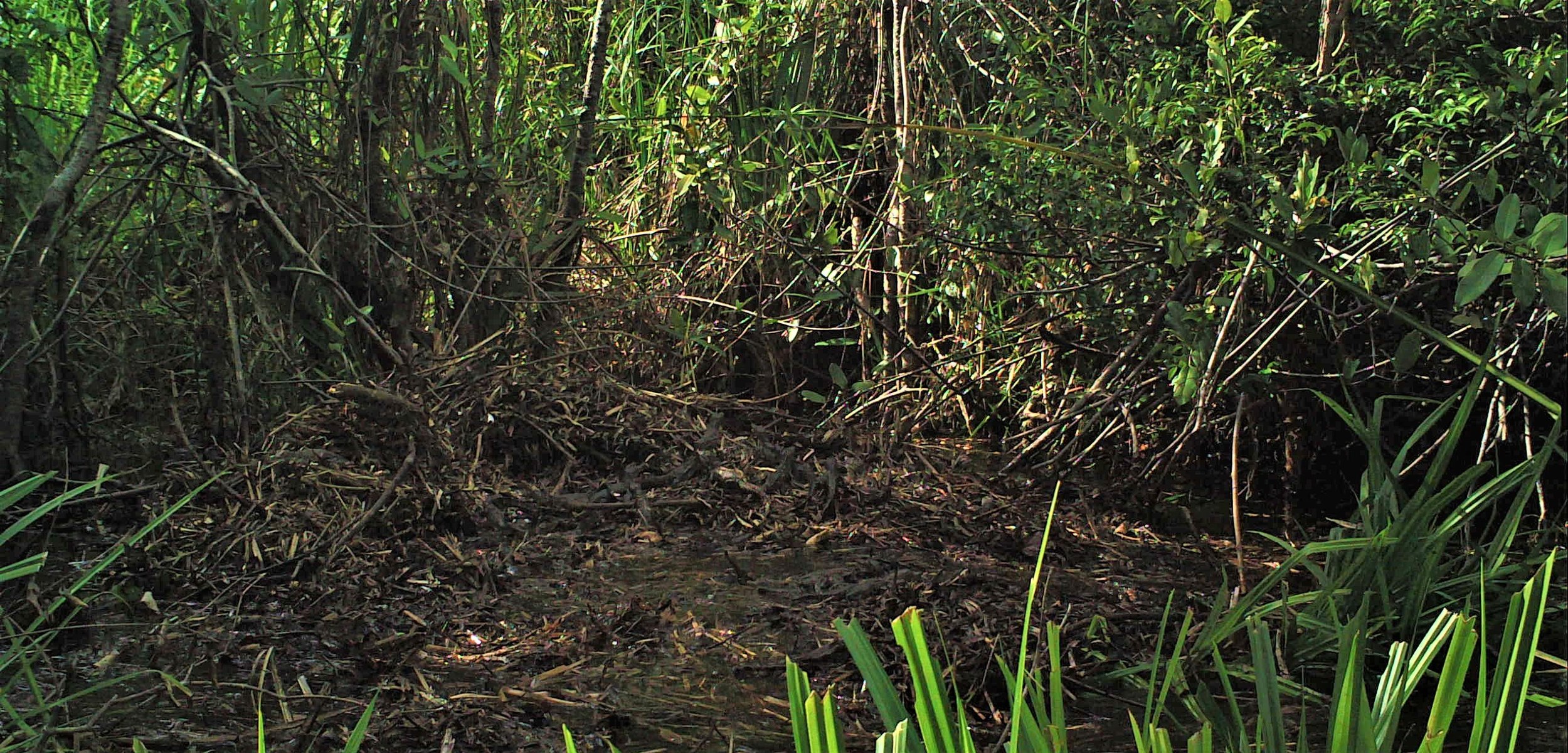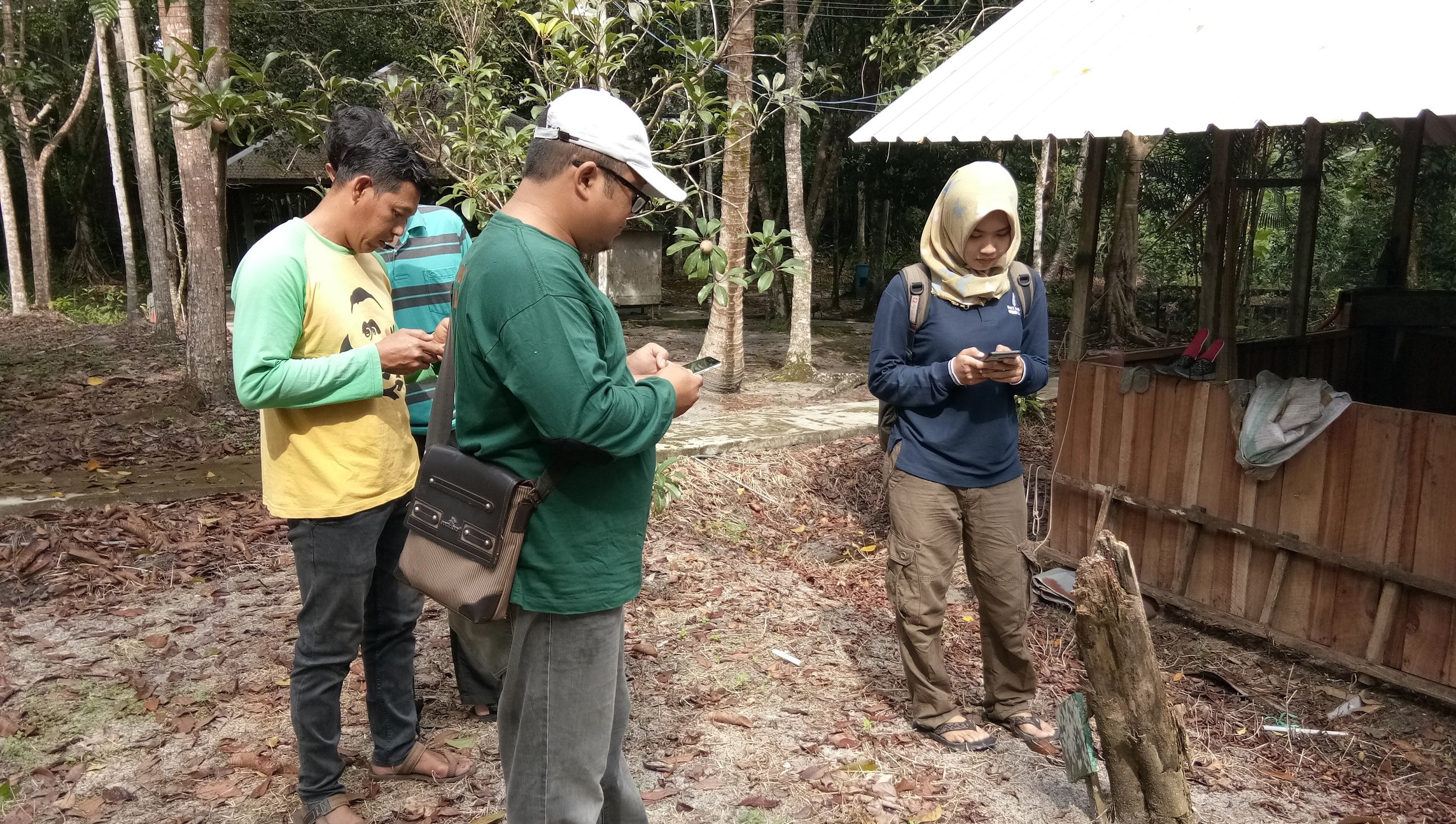Orangutans, biodiversity, forest, research, and fundraising. A look back at the critical conservation success we have had together in 2024.
Bursting with life - Mammals
Despite covering around 6% of Earth’s land surface, it’s estimated that tropical rainforests are home to 80% of our planet’s terrestrial biodiversity. These diverse forests are truly bursting with life, and within Tanjung Puting National Park and the Lamandau Wildlife Reserve in Indonesian Borneo, there are prime examples of this rich habitat.
During their work in the forest, our field teams spot orangutans and other primates in the trees, and yet they rarely see other Mammals as many tend to venture out at night. The elusiveness of many mammalian species in the forest means that the only time our team observe them is on remote camera traps or during wildlife rescues. Some of these fascinating species include:
Sunda Clouded Leopard - Neofelis diardi - Like orangutans, this species of leopard is native to the tropical forests of Borneo and Sumatra. Very little is known about the behaviour of these nocturnal and predatory cats due to their elusive nature, however we do know that their canine teeth are longer than any other cat species in relation to their body size, and their long tail helps with balance as they navigate through the tree tops and forest floor.
The main threat to these iconic forest cats is habitat loss; another trait shared with orangutans. Listed as 'Vulnerable' on the IUCN Red List, there are only an estimated 4,500 individuals remaining in the wild.
Sun Bear - Helarctos malayanus - This is the only bear found in South East Asia and the smallest of all the 8 bear species. Their smaller size means that they are perfectly suited to an arboreal life and their long claws and tongue are ideal for feeding on insects and honey in the trees.
The name ‘Sun Bear’ comes from the pale patch of fur on their chests which is said to resemble a rising or setting sun. Each pattern is unique like a human fingerprint, helping to distinguish one individual from another.
Malayan Civet - Viverra tangalunga - These small omnivorous mammals roam its forest habitat at night in the search for fruit, insects, and anything else it can find to eat. Although largely solitary, it's thought that civets use scent as a way of remotely communicating with one another amongst the dense vegetation by rubbing themselves on trees and the leaves on the forest floor.
Asian Small-clawed Otter - Aonyx cinereus - Rarely observed in the forest’s network of rivers as they tend to search for their food at night, these otters have extremely dexterous hands which are ideal at finding shellfish and crustaceans underwater. Through their high-pitched squeaks the otters can accurately locate one another, and it’s suggested that they can communicate using 12 or more different social calls. These are the smallest of all 13 otter species, but habitat loss and water pollution has impacted their numbers to the extent that they are classified as a species that is ‘Vulnerable’.
Yellow-throated Marten - Martes flavigula - Martens are members of the Mustelidae family (like weasels, ferrets, and badgers), and feast on a variety of food from lizards and bird eggs to fruit and nectar- thought to make them important seed dispersers in the forest. The yellow-throated marten is found throughout wooded areas of South East Asia, and their muscly build and long tail help make them as agile in the canopy as they are on the forest floor.
Malayan Porcupine - Hystrix brachyura - This is the largest of the seven porcupine species found in Asia. This species rely on their burrows to stay in during the day, and come out at night to forage for roots, seeds, nuts, and fallen fruit. Malayan porcupines appear to have strong family ties and will often travel in small groups searching for food. They may have few predators in this habitat, but when threatened, porcupines will often charge backwards in the hope that their sharp quills will deter any aggressor.
Bornean Bearded Pig - Sus barbatus - Like other pig species, the Bornean Bearded Pig is omnivorous and will feed on a variety of forest foods. Their long snouts are perfectly evolved to search for worms and tree roots under the soil, and they will also forage for seeds and fruit dropped by animals high up in the canopy. These pigs reach sexual maturity at around 18 months old and usually give birth to between two and four offspring at a time. Piglets have stripy coats to help them camouflage into their surroundings which fade in later life.
Deer - There are a variety of deer found in Borneo, the most commonly observed by our staff are muntjac or barking deer (below centre). With no wild tigers on this tropical island, and clouded leopards and humans being their only predators, deer can thrive in the forest feeding on vegetation. Lesser Mouse Deer (Tragulus kanchil, below left) and the vulnerable Sambar Deer (Rusa unicolor, below right) can also be found in another environment where the Foundation operates in Central Kalimantan, the Belantikan region.
Bursting with life - Birds
The diverse ecosystems within Tanjung Puting National Park and the Lamandau Wildlife Reserve in Indonesian Borneo are truly bursting with life. Our staff are fortunate to come across a variety of interesting species as they monitor orangutans in the field, conduct research, and safeguard the forest. Some of the most eye-catching species we come across are Birds, including:
Hornbills - There are 8 species of hornbill found in Borneo, and they are perhaps the most iconic birds found in the forests of this tropical island. Hornbills are infamous for the large casques on their beaks, the most eye-catching of which is the Rhinoceros Hornbill, Buceros rhinoceros. These impressive birds have brightly coloured beaks, can have a 50-inch wingspan, and typically mate for life.
Crested Serpent Eagle - Spilornis cheela - These raptors are found in various forest types and can survive in areas of disturbed habitat where other birds may not. In fact it could be said that these eagles prefer forest edges, where they can hunt for a variety of prey from snakes and lizards to small mammals and fish. This adaptability helps make them such a successful raptor species and they can also be found as far as India and the Philippines.
Asian Paradise Flycatcher - Terpsiphone paradisi - By looking at them, you could be forgiven for thinking that the male and female Asian Paradise Flycatcher are birds of completely different species, such is the contrast in their appearance. Females are modest-looking with black feathers on their heads and brown bodies, whereas adult males have bright white plumage and two enormous tail streamers. It’s thought these feathers are elongated to attract a mate and can grow up to 12 inches- longer than their entire body!
Storm's Stork - Ciconia stormi - This is sadly a species in decline and thought to be the rarest of all storks. Due to the loss of habitat in this part of the world, Storm’s Storks are listed as endangered on the IUCN Red List with fewer than 500 individuals remaining in the wild. These forests in Indonesian Borneo are a real stronghold for this vulnerable species so sightings of breeding pairs are vitally important.
Kingfishers - The easiest way for our field teams to navigate through the forest is via the network of rivers, an ideal habitat for kingfishers. The Stork-billed and Blue-eared Kingfisher (Pelargopsis capensis & Alcedo meninting) are the most commonly seen species in these forests. Stork-billed are perhaps the most striking as they have large red bills and an explosive alarm call which is then followed by an unusual cack-cack-cack-cack laugh!
This is just a selection of the hundreds of bird species found in this diverse tropical forest environment. By supporting our guard posts and habitat restoration programme, your help is ensuring that these important species continue to live in a haven which is protected.
Bursting with life - Primates
We may be the Orangutan Foundation, but our work also protects crucial forest habitat home to a variety of other ecologically significant species. It could be said that the forests we primarily operate in, Tanjung Puting National Park and the Lamandau Wildlife Reserve, are truly bursting with life.
These tropical forests are found in one of the most biodiverse corners of the globe in Indonesian Borneo, where Primates make up some of the most captivating fauna. Bornean orangutans are an umbrella species helping to protect habitat for a number of these arboreal mammals, but here are some of the other primates our field team study, monitor, and observe:
Proboscis Monkey - Nasalis larvatus - Perhaps one of the most unusual species found in the forest and indeed the primate world, proboscis monkeys can only be found in the wild on the island of Borneo. It’s thought that the elongated noses of the males help to attract females, and their round bellies containing two stomachs aid the digestion of leaves that other animals cannot eat.
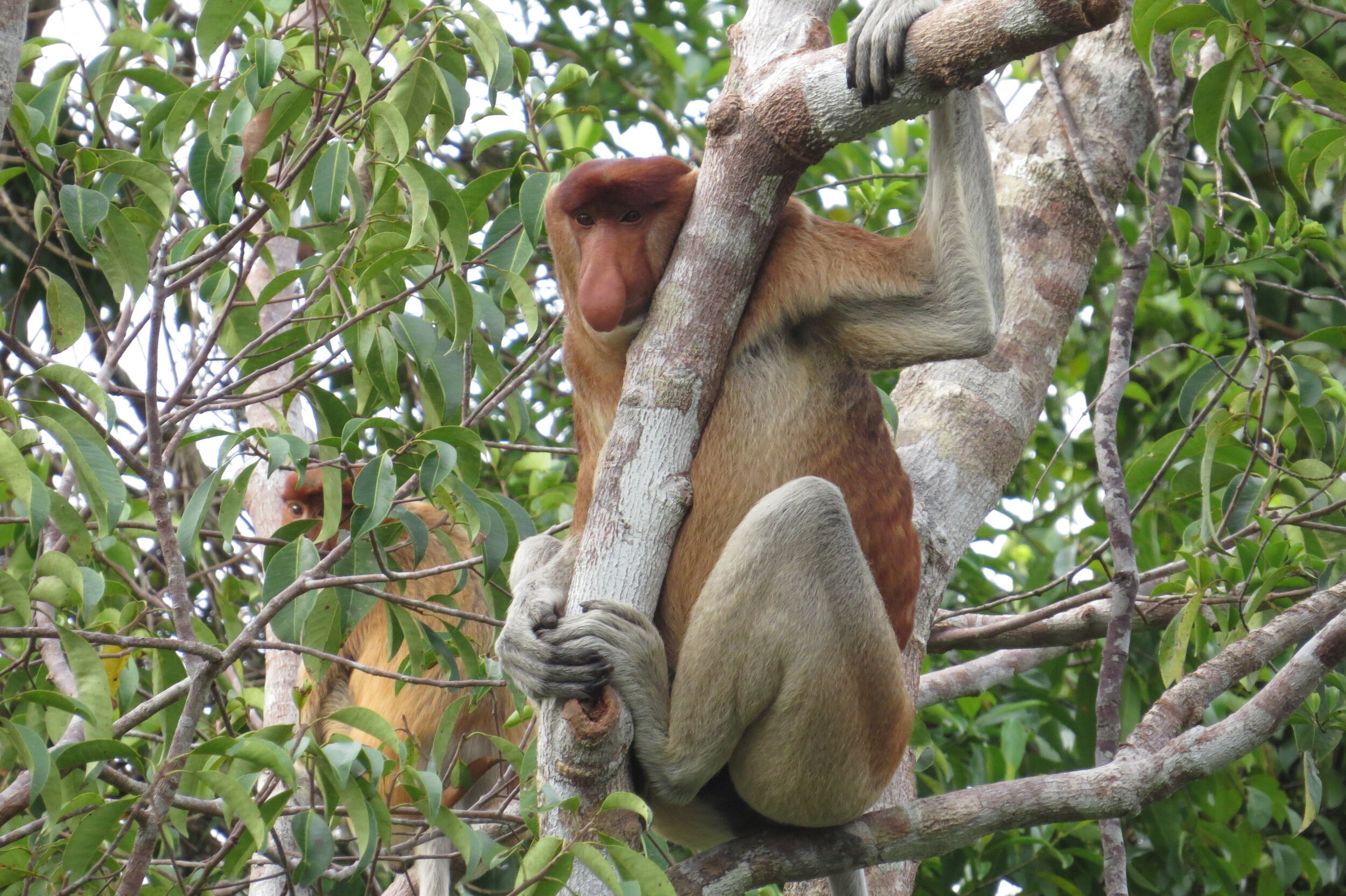
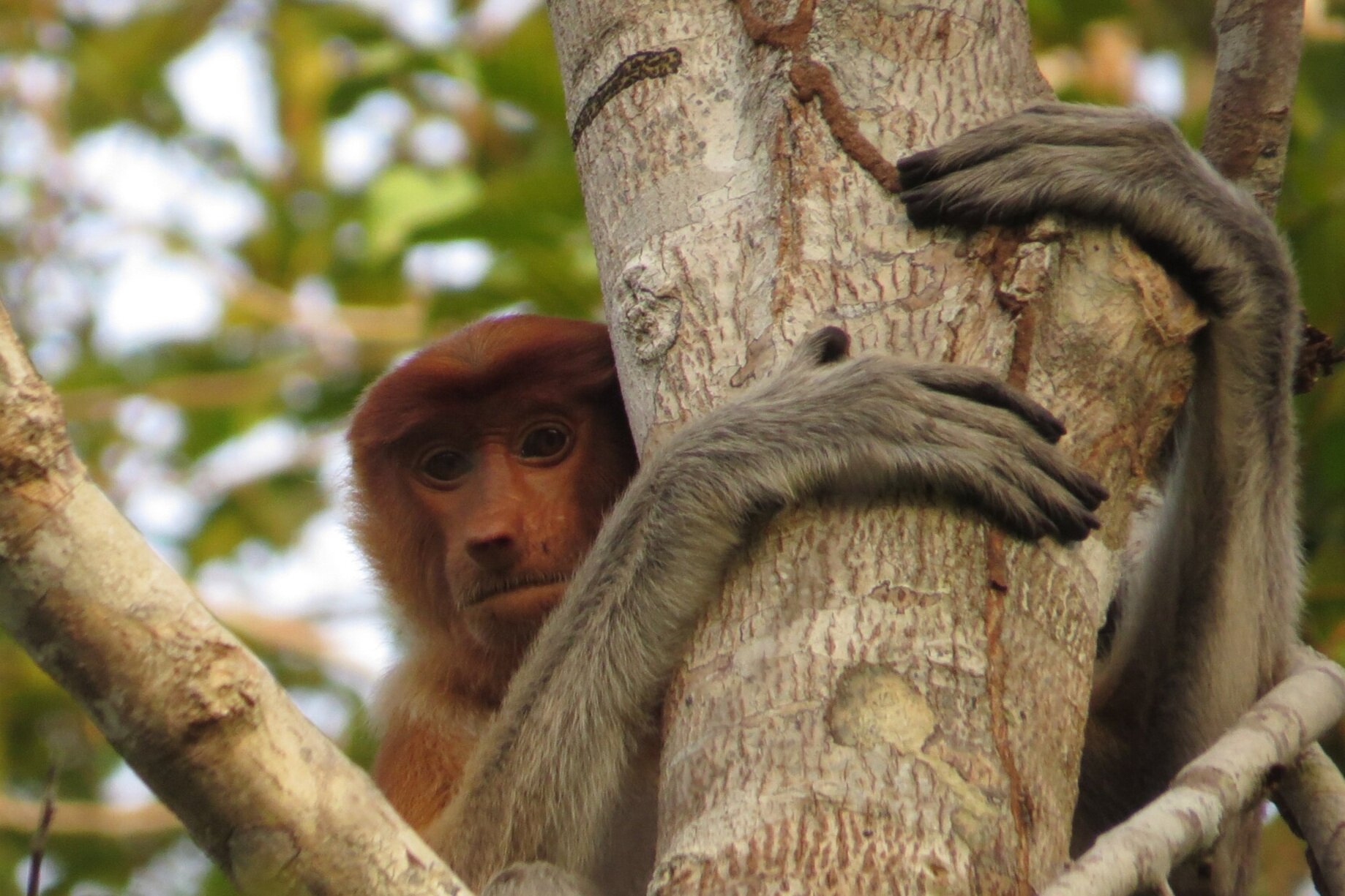
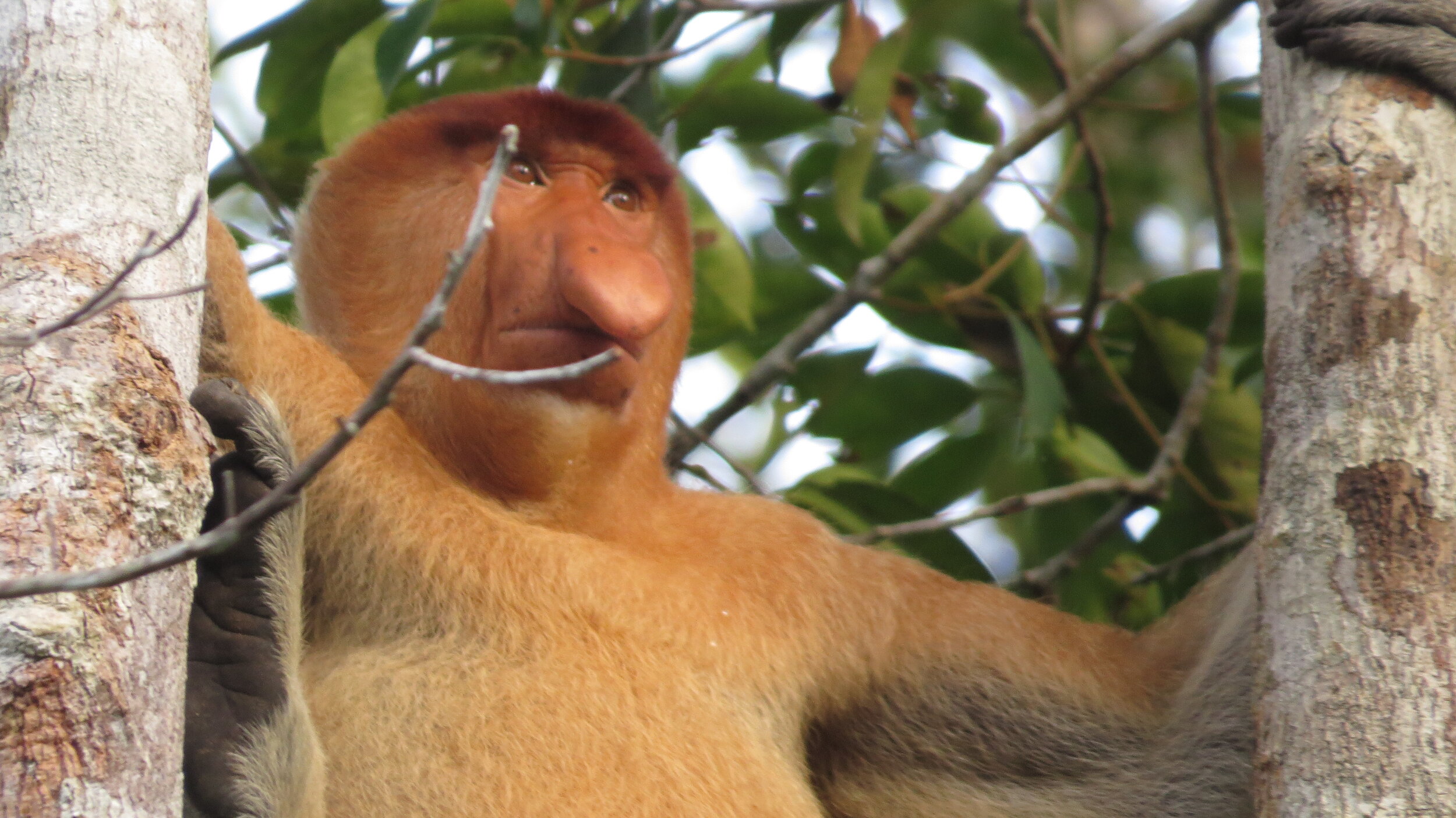
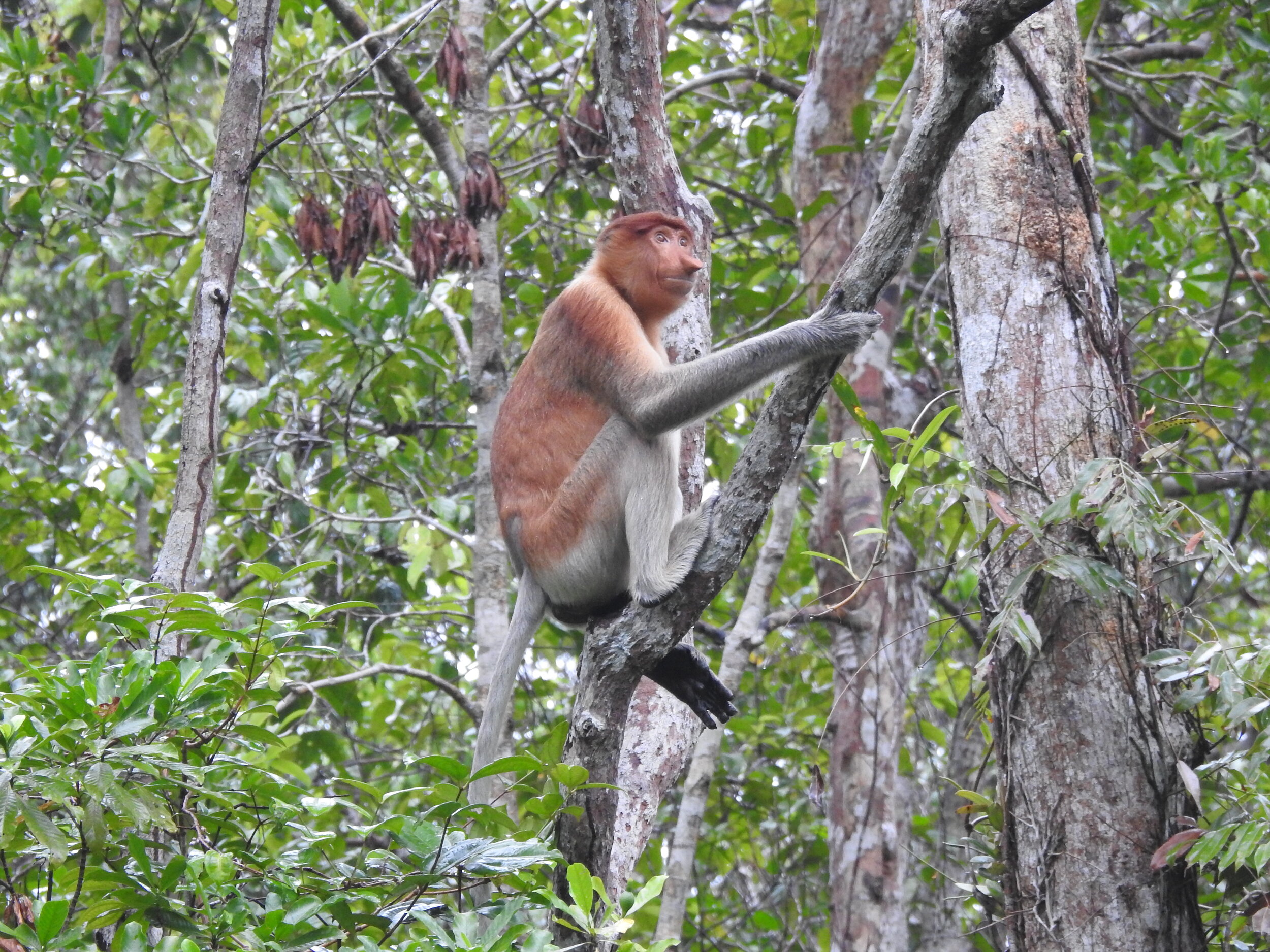
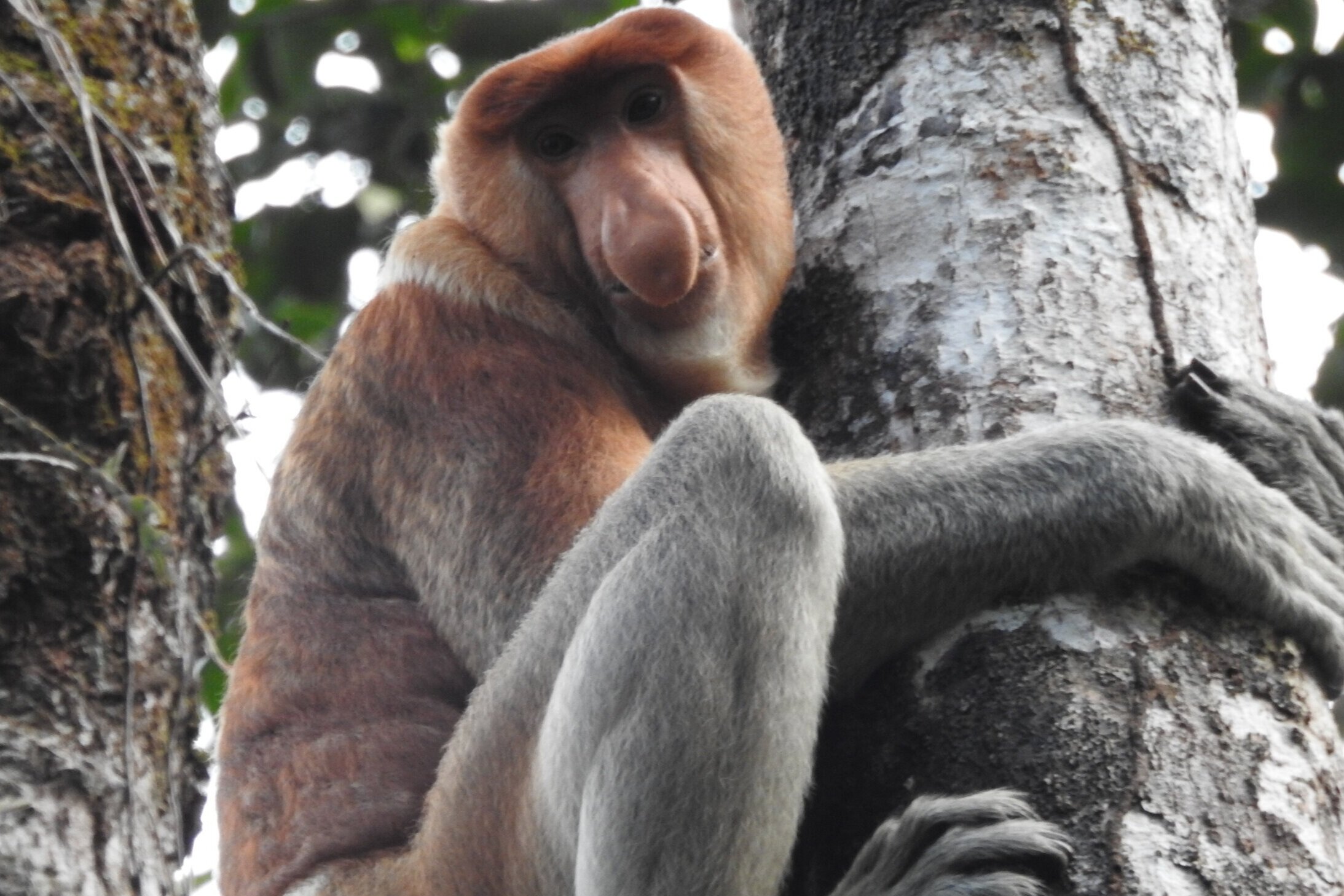
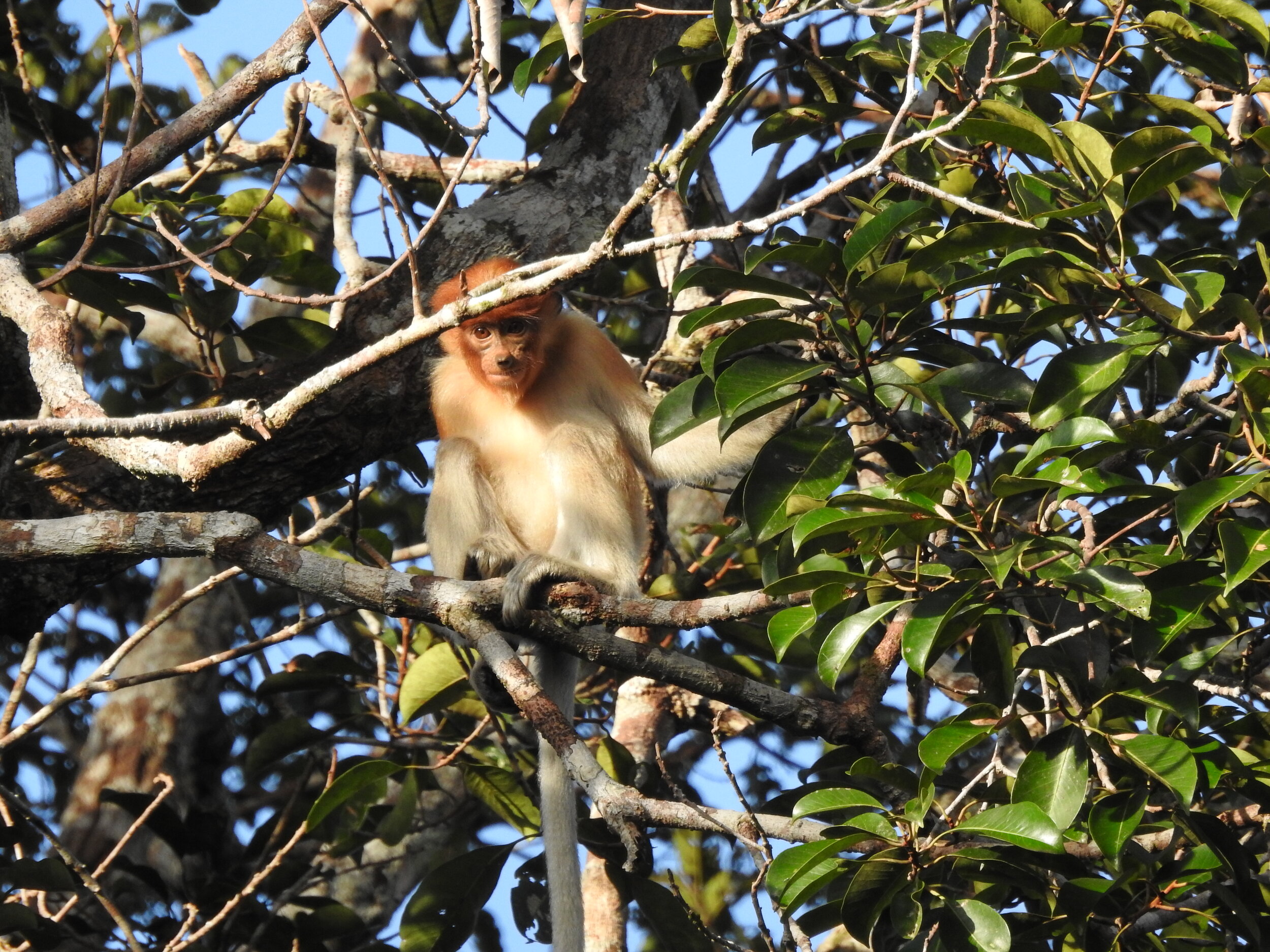


These endangered primates live in close social groups, often in submerged and swamp forests. This means that sometimes they must swim between trees in search of food and to help them do this, proboscis monkeys have evolved partially-webbed hands and feet, making them expert swimmers and helping them avoid predators like crocodiles in the water.
Macaques - There are two species of macaque spotted by our team; the Pig-Tailed Macaque (Macaca nemestrina), and Long-Tailed Macaque (Macaca fascicularis) also known as Crab-Eating Macaque.
Some roam the forest independently in search of food, but the majority of macaques are found in flexible family groups. They always appear to be on the move and as such are one of the most commonly seen animals captured on our remote forest camera traps.
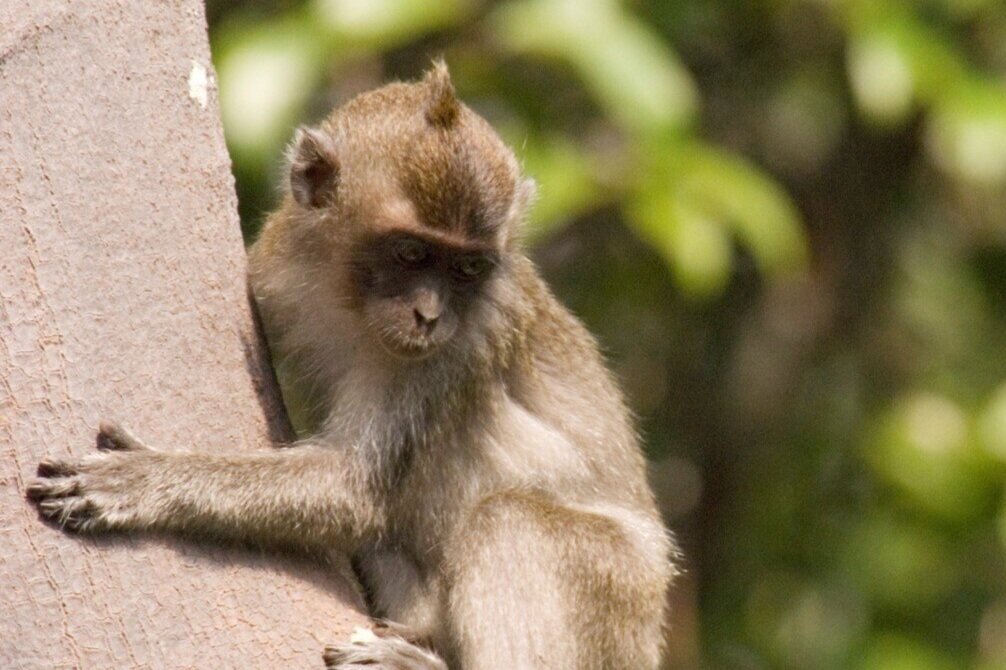
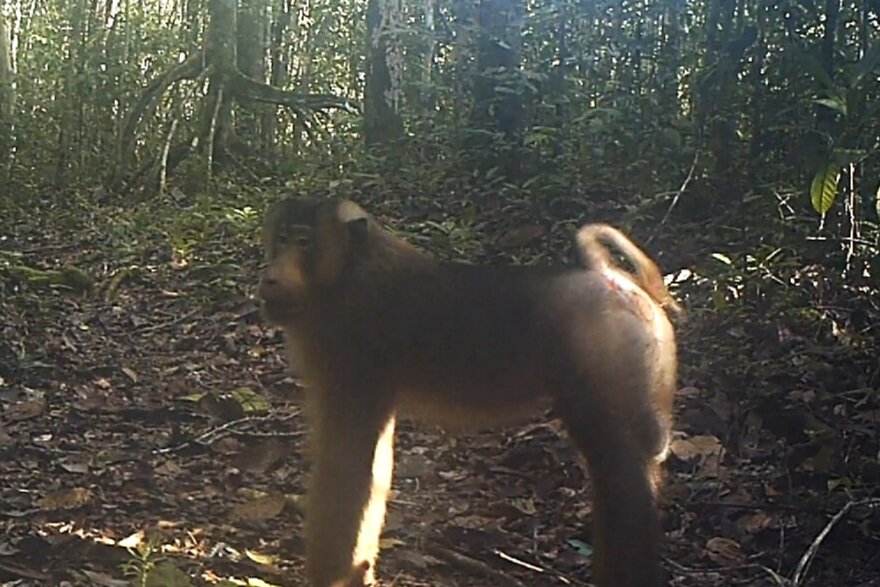
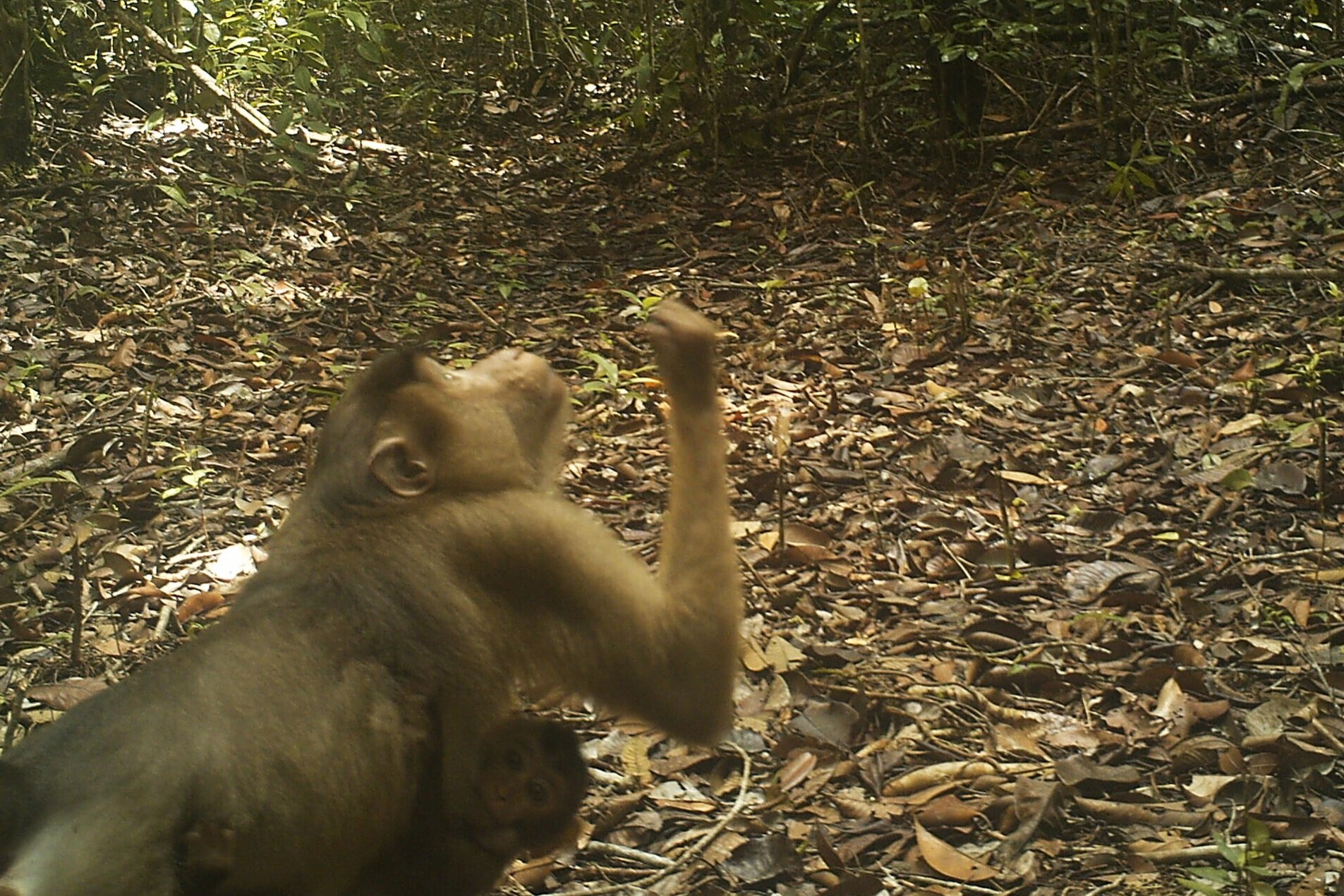
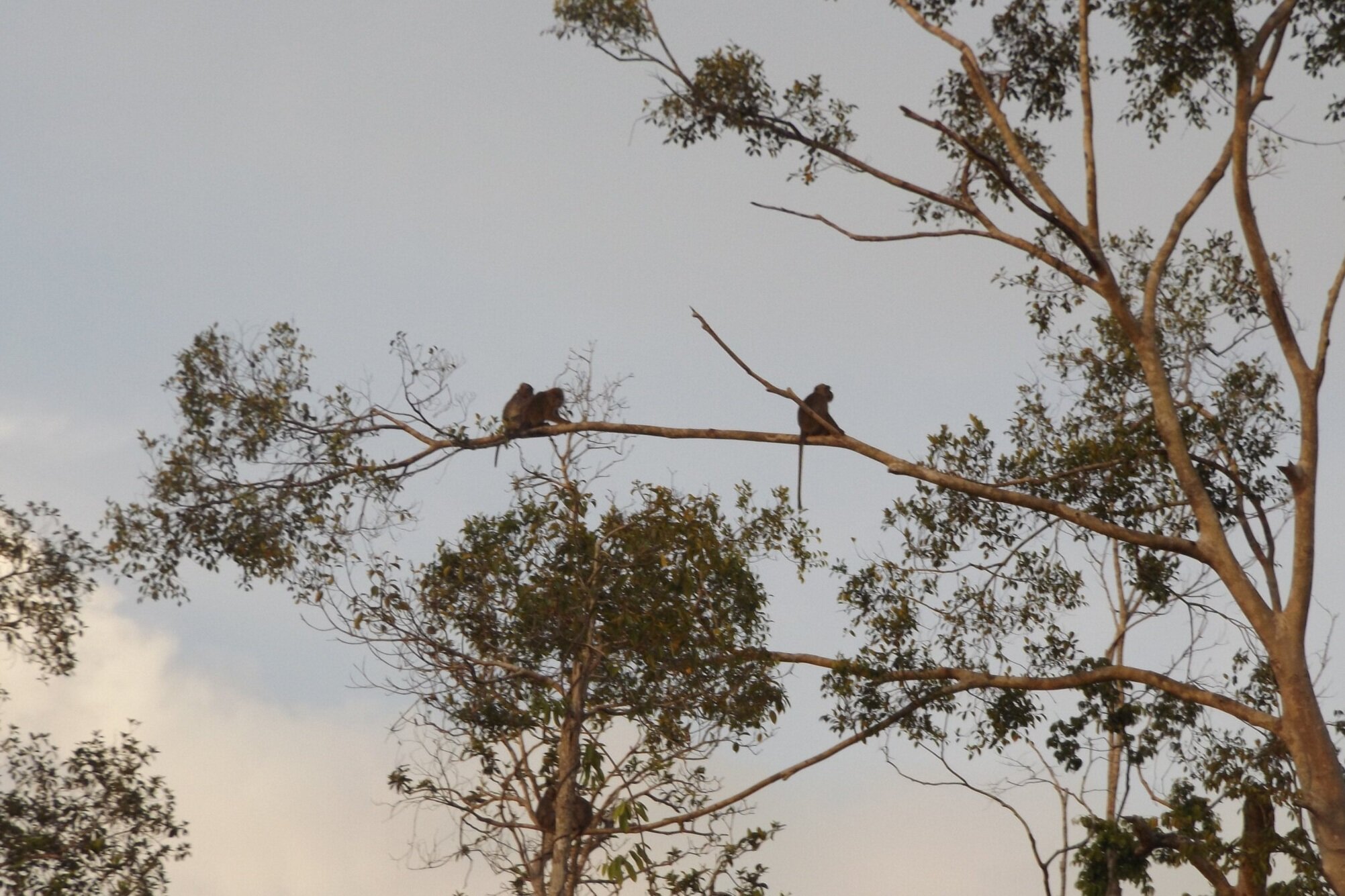
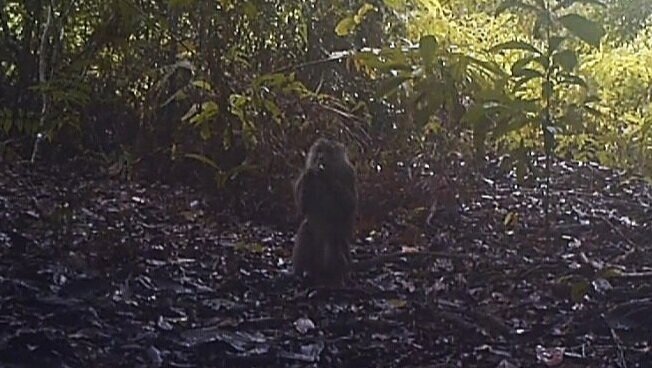

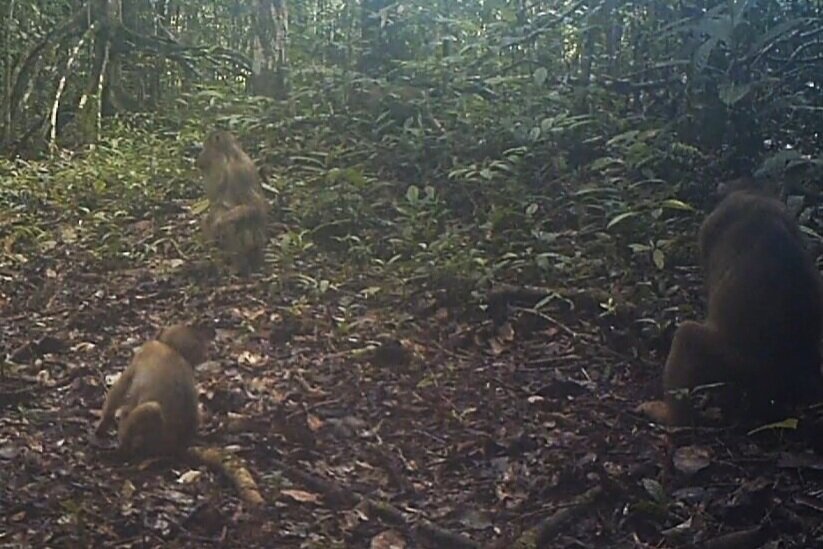
When it comes to their diet these primates are certainly not picky. Macaques are generally opportunistic omnivores and will feast on anything from leaves and seeds to invertebrates and eggs, it’s this versatility that makes them such a successful primate species around the world.
Langurs - These primates are also called ‘leaf monkeys’ due to their herbivorous diet. Comparatively little is known about their behaviour due to their elusive nature, but our team on occasion have spotted Silver Langur (Trachypithecus cristatus) and Red Langur (Presbytis rubicunda), also known as the Maroon Langur. It’s thought that the White Fronted Langur (Presbytis frontata) has also been caught on remote camera traps in the Belantikan region, another habitat which the Foundation help conserve.
Bornean White-Bearded Gibbon - Hylobates albibarbis - This is another species endemic to Borneo and listed as endangered due to the ongoing threat of habitat loss. Gibbons are neither monkeys or great apes, instead classified as ‘lesser apes’, but are perhaps the fastest primate when it comes to travelling through the canopy. It has been said that their long arms can swing them from branch to branch up to 34mph!
Gibbon pairs often mate for life and travel in small family groups. Each morning they will often strengthen this bond by singing a ‘duet’ which can resonate through the forest over a mile away, notifying other groups of their presence.
Western Tarsier - Cephalopachus bancanus - Also known as Horsfield’s Tarsier, these are the smallest primates found in Borneo. It’s understood that tarsiers are some of the oldest living primates, separated into 18 species which are all found in South East Asia.
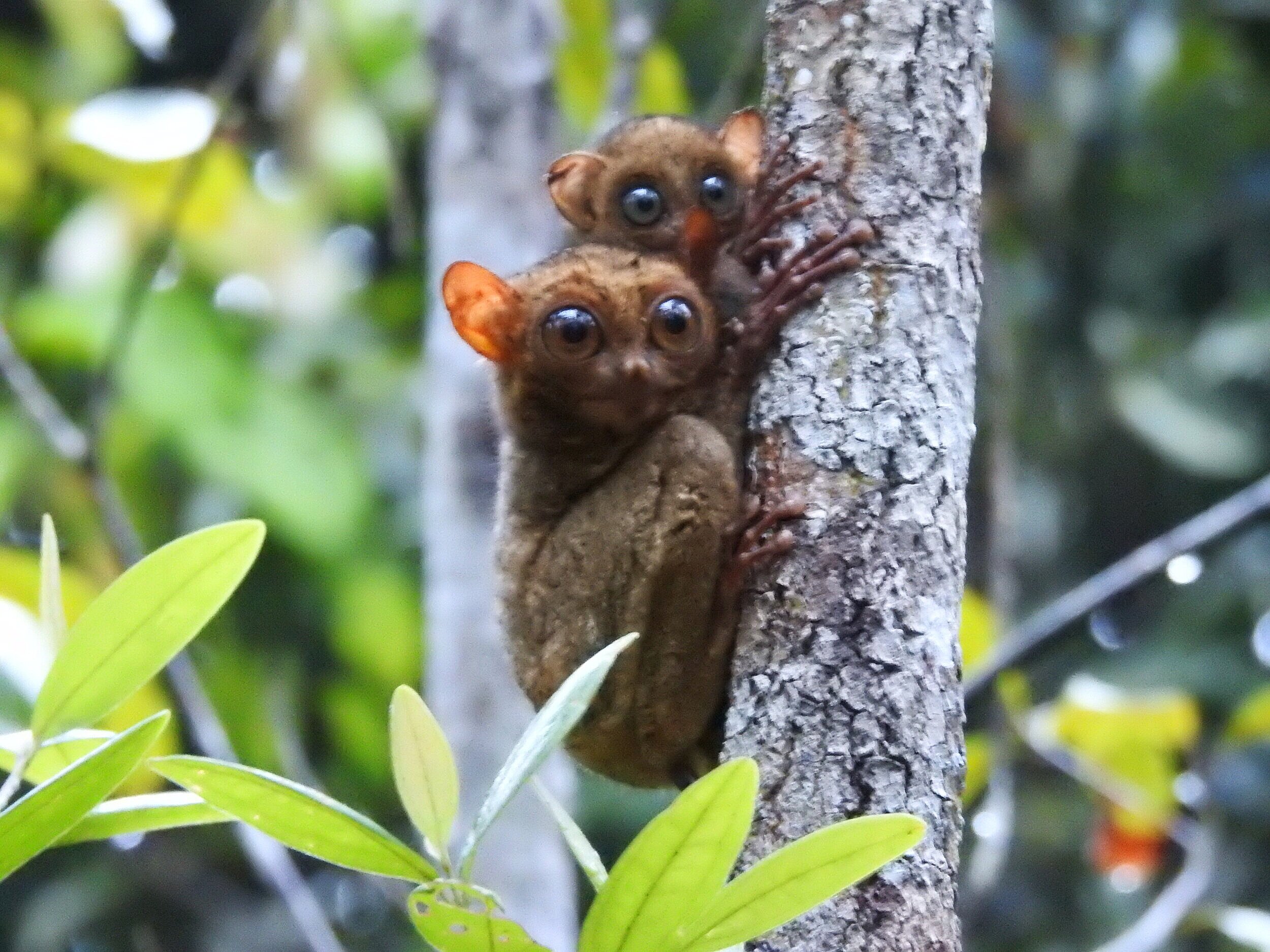
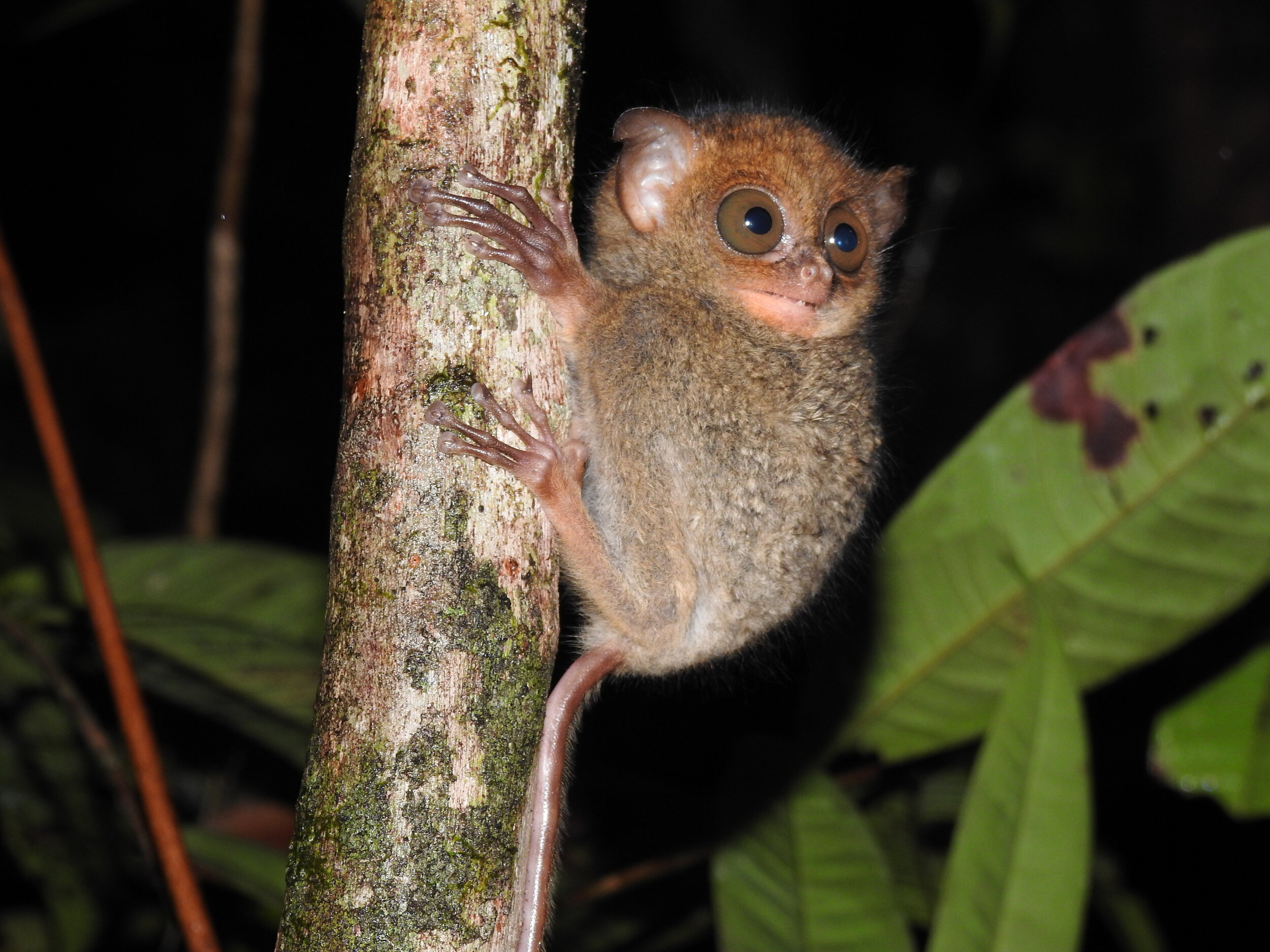
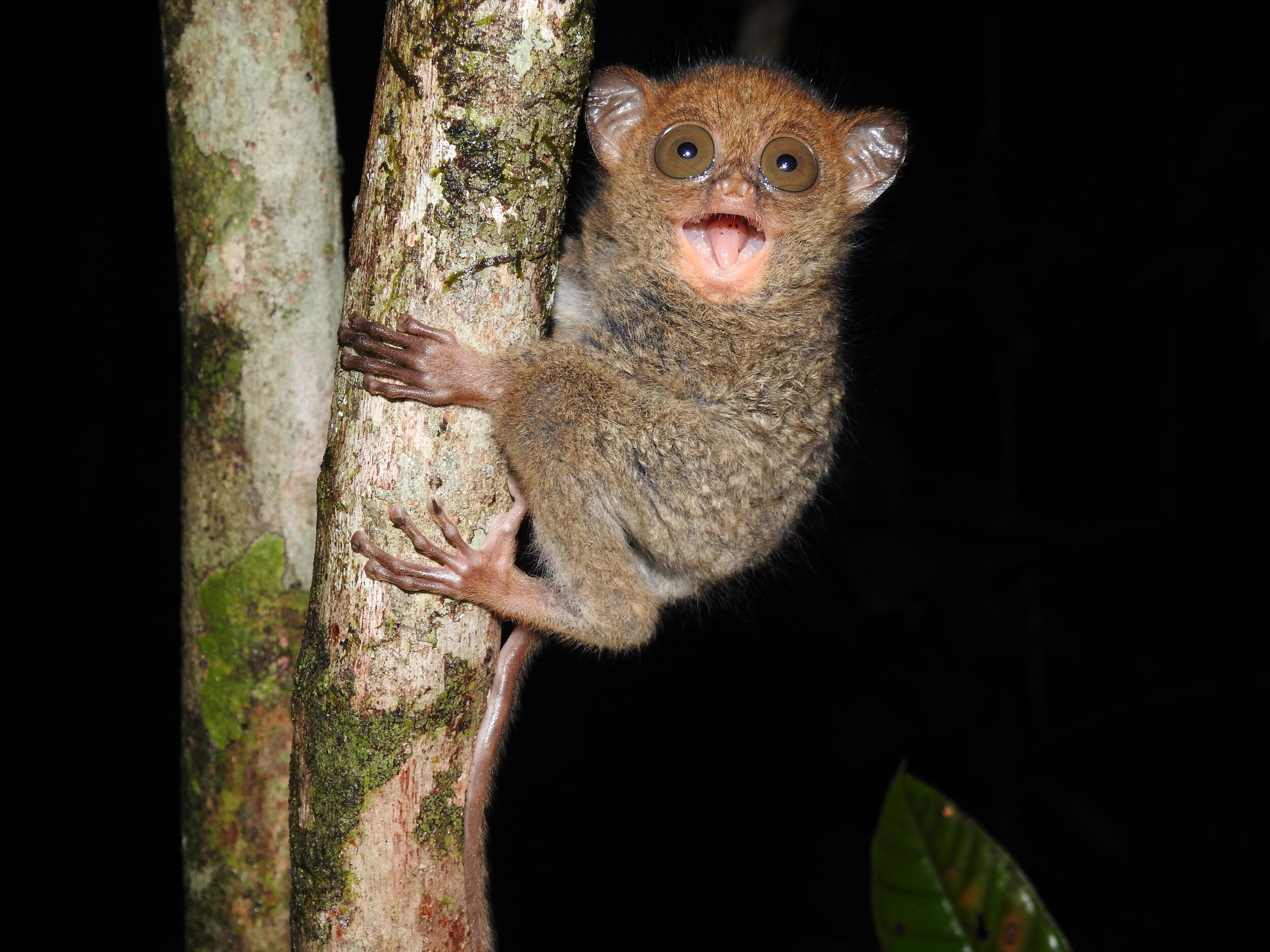
Tarsiers are the only entirely carnivorous primates. Using their huge eyes to spot prey in the dark and then springing into action using their long legs, tarsiers feed on a range of nighttime creatures, primarily flying insects such as cicadas, moths, and beetles.
Bornean Slow Loris - Nycticebus borneanus - The large forward-facing eyes of the slow loris also indicate that they are a nocturnal species, perfectly adapted to hunt insects and small vertebrates in the trees.
They may look cute and cuddly, but the slow loris is the only primate known to have venom. Secreted from the brachial gland on their upper arm, it’s not fully understood why slow loris possess a bite which can be venomous. Perhaps this mysterious trait is why slow loris are regarded as the guardians of heaven in some local folklore.
Your support helps us provide a natural home to all of these primate species. Keep up to date on our work and subscribe to our monthly e-news updates to find out what other diverse wildlife species your crucial support protects.
Giant Tomistoma released back into the wild
On Saturday 15th February, our team were on hand to support the dramatic release of a very large adult Tomistoma (also known as a False Gharial); one of the largest that our team have ever seen.
A couple of days beforehand, local government officials were notified of the fact that a crocodile had been found near a village not far from Pangkalan Bun in Central Kalimantan, Indonesian Borneo. It was reported that the crocodile in question had incredibly already been captured by local villagers to keep their waterways safe, and once our team had arrived a short while later and observed the size of the reptile, it became clear what a herculean task capturing it must have been.
For its safety, the giant reptile is restrained during transportation.
Almost dwarfing the truck it was transported in, it took the efforts of several local people, government officers, and Orangutan Foundation staff to carefully transport the Tomistoma to a safe location in Pangkalan Bun where it could receive a medical examination.
The truly impressive specimen weighing approximately half a tonne was identified as male and measured a remarkable 4.7m from snout to tail. Our team were taken aback by the sheer size of this Tomistoma, and were delighted when physical tests confirmed that the crocodile had no injuries and was in fine health- ready to be released.
Tomistoma (Tomistoma schlegelii) are a member of the Crocodylidae family and inhabit the rivers and wetlands of South East Asia. Estimates suggest that there are fewer than ten thousand Tomistoma remaining in the wild.
Arriving at a suitable site within Tanjung Puting National Park, it took great care from the team to delicately remove the Tomistoma’s restraints and prepare for its safe release from the transport boat back into the wild. In a final dramatic twist, this large male showed a powerful example of his strength when in one sharp flick of his tail, he was able to shatter the wall of release boat’s kitchen as he descended into the river.
Fortunately no one was injured in the translocation of this large reptile. Collaboration between government rescue teams and local people played an important role in transporting the crocodile to a safe location where is will be able to hunt for food freely in the waters surrounding Tanjung Puting National Park.
Lamandau Wildlife Reserve welcomes new residents
Over the last few months of this year’s dry season alone, Orangutan Foundation staff have helped rescue and translocate double the number of orangutans than in the previous two years in Central Kalimantan, Indonesian Borneo. One of these handovers was young female Pegi who had been kept inside a cage for the past seven years, but orangutans of course are not the only species that are kept captive illegally.
Earlier this month our teams were called upon once again to assist with wildlife translocations, but this time for different species who had been rescued by government officials or handed over as pets.
Gibbons are released into the forest and explore their new home
A couple of gibbons were the first animals to be released into the forest. Once their transportation crates were opened at Camp Buluh, the pair could be seen climbing to the very top of the canopy where they’re most at home swinging from branch to branch- that was until they were interrupted by male orangutan Yoko. Coming face-to-face with a large primate several times their size might understandably be intimidating for a gibbon new to this habitat, but following a brief pause to observe one another, the individuals soon parted ways and continued roaming through the trees.
Yoko and newly released gibbon lock eyes for a moment
Also released with this pair of apes into the Lamandau Wildlife Reserve was perhaps one of the most beautiful tropical birds found in these forests- the Rhinoceros Hornbill. These large birds are a crucial seed disperser in the forest. After feeding on fruits and berries in the canopy, they can then carry the seeds for many miles before depositing them elsewhere. Our team were elated to see an individual finally stretch it’s winds and be released back into the wild by Camp JL.
A hornbill is transported for release at its new home within the Lamandau Wildlife Reserve
Our team’s final translocation was a young female sun bear named Bella. Without its mother, a sun bear cub may find life in the forest challenging as they’re yet to learn the best methods to search and forage for food. It’s for this reason why our team at Camp Gemini have introduced Bella into a habituation enclosure where she can first become accustomed to her forest surroundings before being released.
One-year-old Bella is introduced to her new temporary home at Camp Gemini
It’s worrying to know that some individuals still see wild species as potential pets, but it is at least reassuring for us to know that the Lamandau Wildlife Reserve is a habitat that is protected and can therefore offer the possibility of a new beginning for these wildlife species, as well as orangutans.
To help protect these forests, please show your support between midday 3rd to 10th December 2019 via our Big Give appeal, which will double any donations in this time!
How guard posts play a crucial role in orangutan conservation
At the Orangutan Foundation, two main areas of orangutan forest habitat where we work are Tanjung Puting National Park and the Lamandau Wildlife Reserve in Indonesian Borneo. Together they cover over half a million acres of forest- almost twice the size of Hong Kong. It’s therefore essential that the Foundation’s guard post teams are skilled and well trained to monitor the forest and waterways within this vast area.
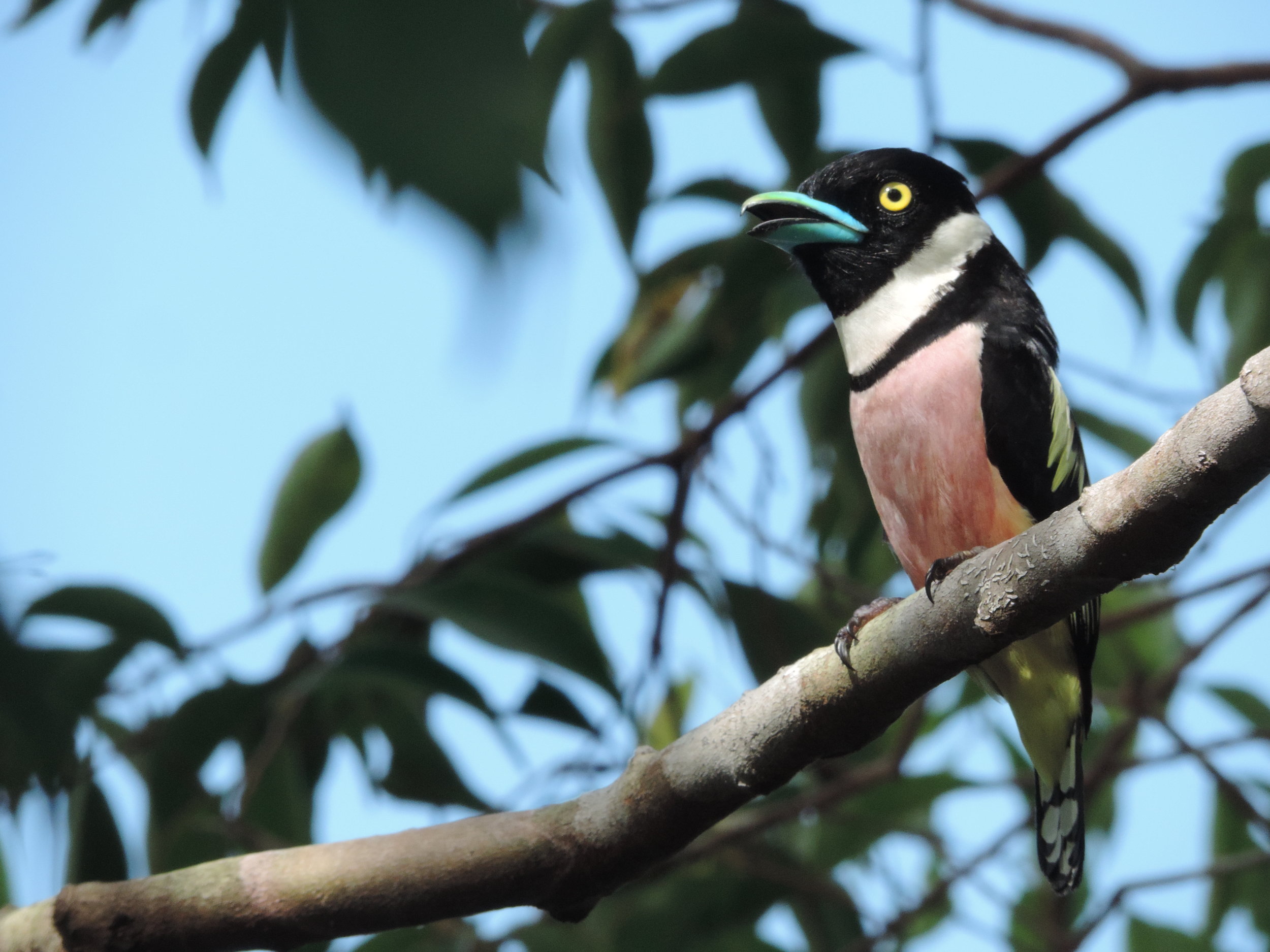
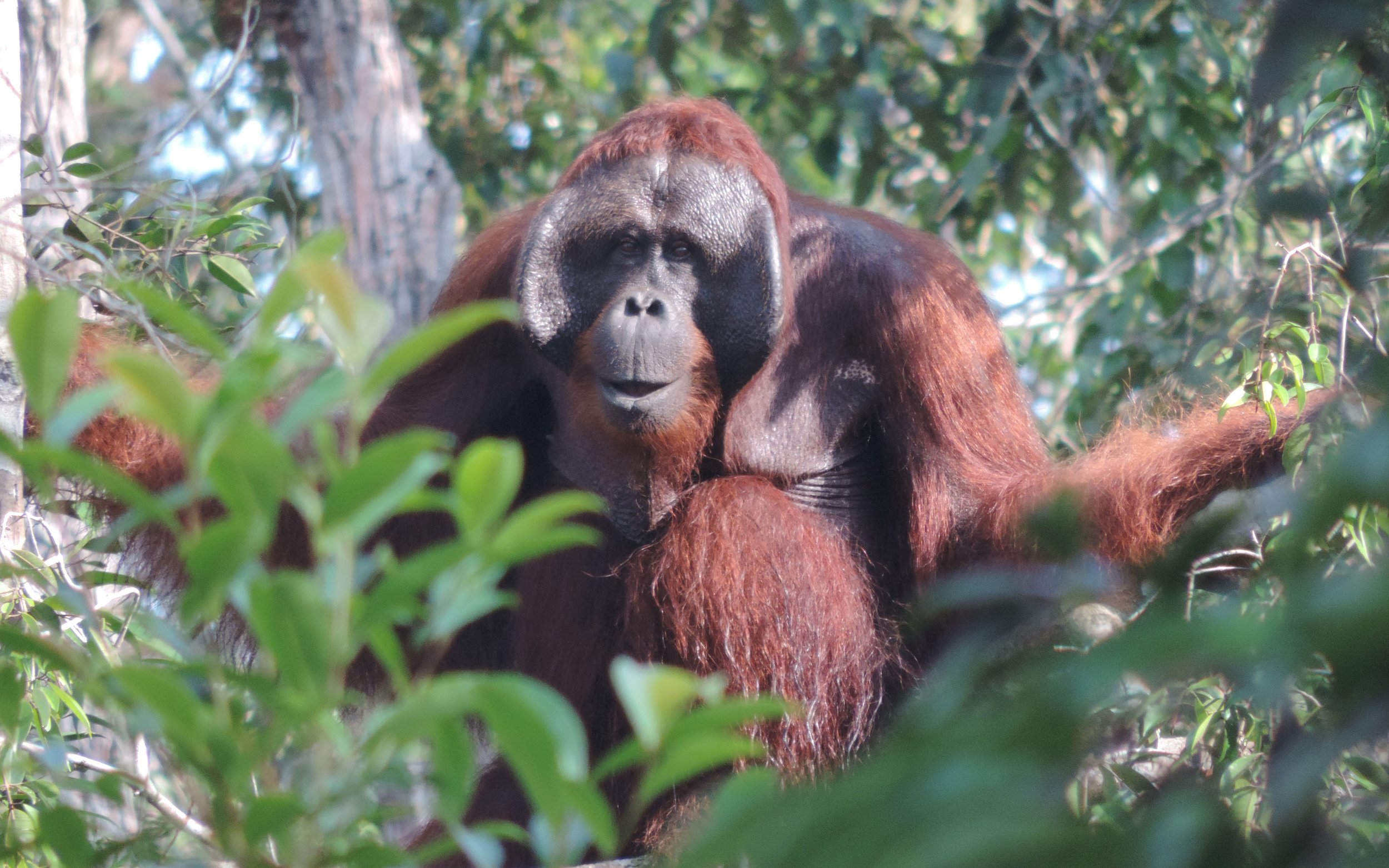

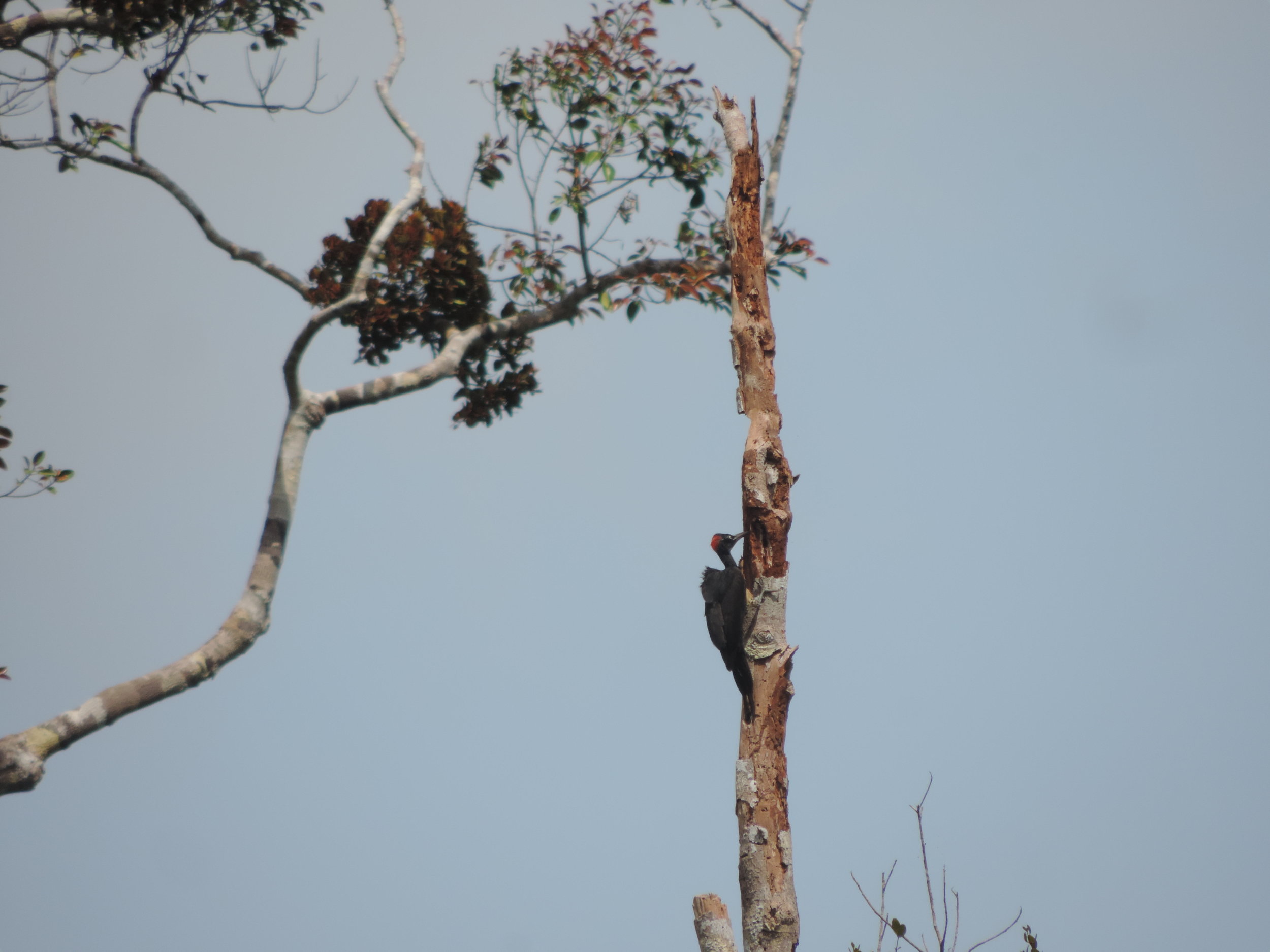
During regular patrols, the team record wildlife sightings like these recent images from Tanjung Puting National Park.
Habitat loss is the largest threat to orangutan populations today; for example, it is predicted that by 2080, between 70-80% of prime orangutan habitat will be lost in Borneo alone if current trends continue. The role of guard posts as a deterrent therefore is vital to ensure intruders do not encroach or enter these parks illegally, damaging or degrading the environment which is essential for orangutans and other wildlife.
Fire fighting is another important role in the field that make these outpost sites so vital. Each one is prepared with fire fighting equipment, and the Foundation works closely with training and supporting the team to be vigilant in spotting forest fires and then safely extinguishing them with as little damage to the habitat as possible. These fires are a potential threat year on year, in 2015 for example an area the size of Wales was lost to forest fires alone in Indonesia, so to have our team patrolling these sites is of paramount importance to orangutan protection and the surrounding area.
We are incredibly grateful to have such a skilled and hardworking team here at the Orangutan Foundation, but they still require support. Find out how you can help from as little as £2.
Intimate images of crocodile mother and her newborn hatchlings caught on camera
Reptiles may not be considered the most maternal of creatures, but newly hatched crocodiles are in fact looked after by their mothers until they are strong enough to fend for themselves- often for as long as two years!
Our monitoring team located in Tanjung Puting National Park were fortunate enough to witness a mother and her nest using remote camera traps so as not to disturb her natural behaviour.
She was observed guarding the nest, listening to her young’s calls as they hatch, and then gently clearing a path for them to emerge from the undergrowth.
If you listen carefully, you can even hear the hatchlings calling from the nest.
Footage such as this is rarely seen, so to be able to use technology in order to witness this intimate behaviour without disturbing the animals is remarkable.
Once hatched and emerged from the nest, the young can be seen exploring their new home.
Hiding in plain sight: After a closer look, several hatchlings can be seen amongst the vegetation.
To be able see this behaviour is exciting for all of us, but also an indicator of the health of these important waterways. Watch this space for any future observations!
Conservation of wild orangutans living outside protected areas
A very successful two day workshop was organised by our partners Yayorin (Indonesian NGO) and Orangutan Foundation to address the conservation issues facing 78% of wild orangutans, who live outside of protected areas. The focus was training in SMART technology to monitor and survey orangutan populations and prevent crimes against orangutans, wildlife and forests.
Certificate awarded for participating in SMART training
The workshop was well attended and all participating received practical training.
Workshop attendees included Yayorin, Orangutan Foundation, SKW II Balai KSDA Kalimantan Tengah, Tanjung Puting National Park Office, Sukamara-Lamandau Regional Forest Service Office (KPHP) , Seruyan Regional Forestry Service Office (KPHP), Nangamatu Village - Belantikan Raya and Pangkalan Bun Antakusuma University.
Thank you to Arcus Great Apes and Gibbon Program for funding this important initiative.
Celebrating new life whilst battling to save orangutan habitat
This week, our Monday motivation was this incredible footage of orangutan Max with her infant Monti, sent by our staff who are as excited about this new addition as we are. However, the next day, we heard from our Patrol Manager, Jakir, that fires were once again raging close to the Lamandau Wildlife Reserve, Indonesian Borneo. One moment we are celebrating new life, the next we are battling to save the habitat.
Thankfully the wildlife reserve is 158,000 acres in size and the fires are well away from the orangutan release camps. Our 8 manned guard posts, around the reserve, means our patrol staff can respond quickly to keep the reserve safe and prevent the fires from spreading.
Habitat protection is our priority. Please donate to our appeal to help us keep forests standing and orangutans in the wild.
Forest fire spreads to orangutan habitat
Fires, deliberately lit next to an oil-palm plantation, have spread to the Lamandau Wildlife Reserve, home to over 500 critically endangered orangutans. This is the second fire this year. Please donate to help us.
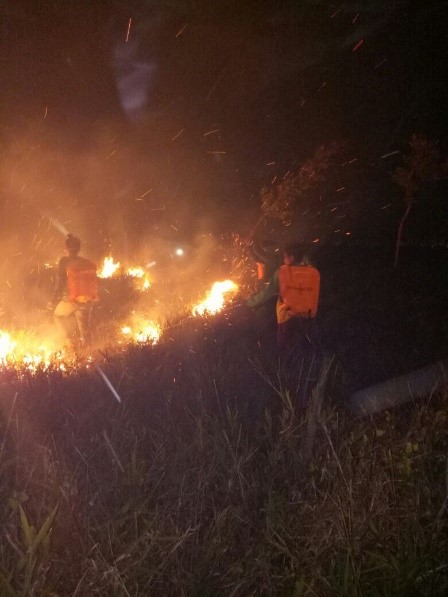
The Orangutan Foundation's guard post staff spent yesterday evening and all last night fighting the fires. We can't thank them enough for their bravery and efforts to protect the Wildlife Reserve. The fire, as the map below shows, was on the other side from our Orangutan Release Camps and so our young orphaned orangutans and Aan, the blind orangutan, are safe. However, other wild orangutans and species will have been harmed by these fires.
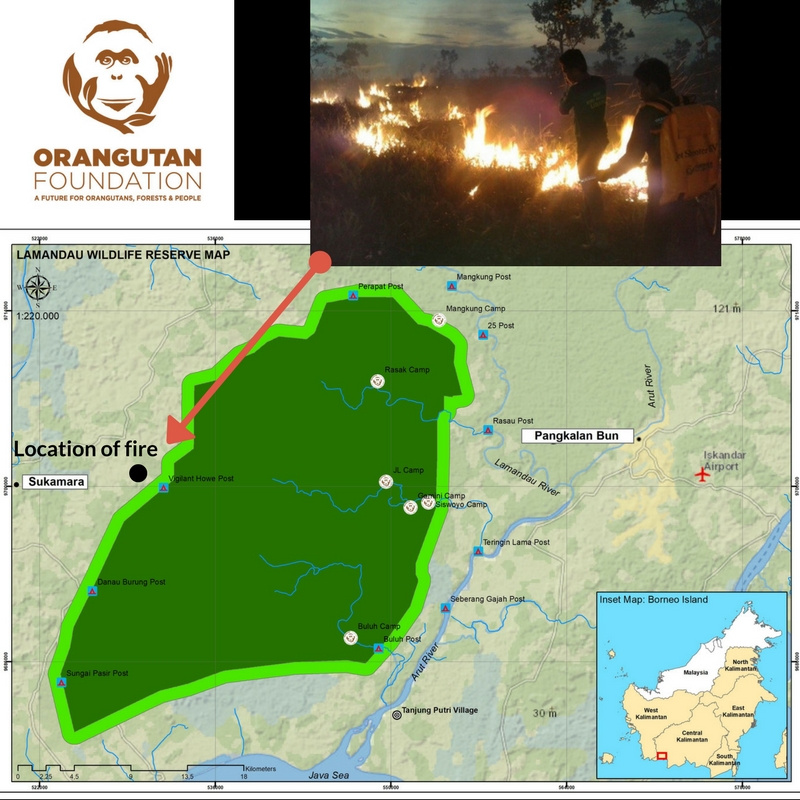
We are alarmed that fires have been lit in the first place but are spreading so easily, especially at this time of the year. It is meant to be the wet season but the scrub land, just bordering the reserve, and the forest, inside the reserve, is unusually dry due to lack of rain. In 2015, an El Nino year, over 11,000 hectares of the reserve burnt. This cannot happen again.
At around 18.00 hrs yesterday our guard post staff at Post Vigilant Howe detected fires about 3 km outside the boundary of the Lamandau Wildlife Reserve. The fires are thought to have started near to PT Sampurna oil-palm plantation.
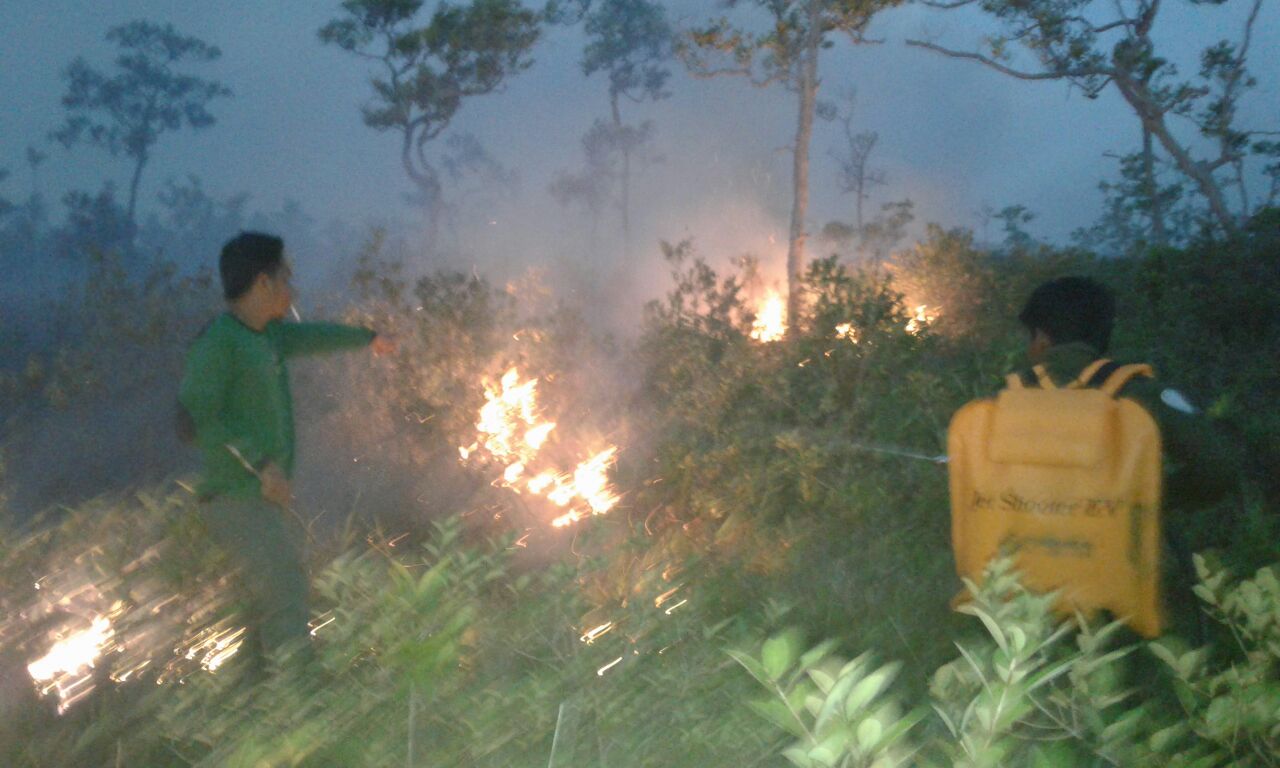
Our staff from Guard Post Danau Burung and Government Resort staff BKSDA SKW II from Guard Post Sungai Pasir tried to extinguish the fires for 3 hours using water jet pack shooters. At 20.00hrs they realised the fire was growing due to the wind and ready fuel of dried shrubs and grass. They informed the Head of BKSDA Resort SKW II, Mr. Sugih Trianto and requested extra help. Our staff from Guard Post Perapat and even our Forest Restoration Manager, Anto, went to help tackle the fires.
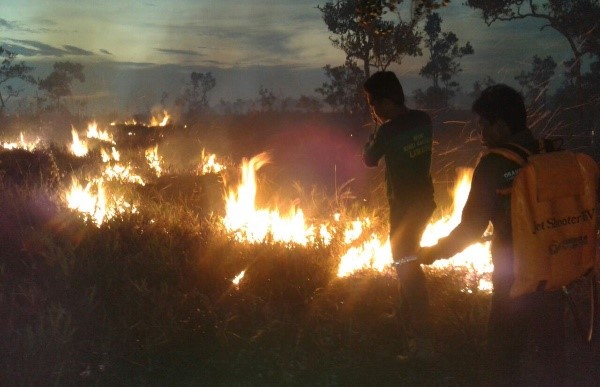
At around 03.00hrs the fire was eventually extinguished by an exhausted team, made up of Orangutan Foundation and staff of BKSDA SKW II.
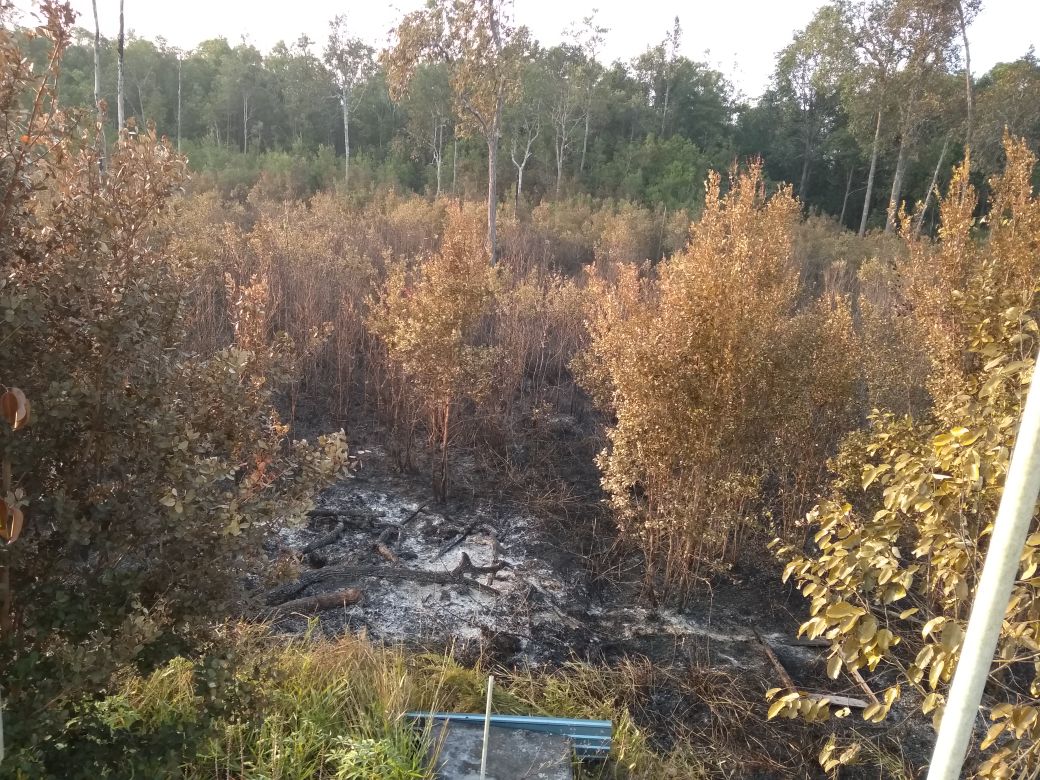
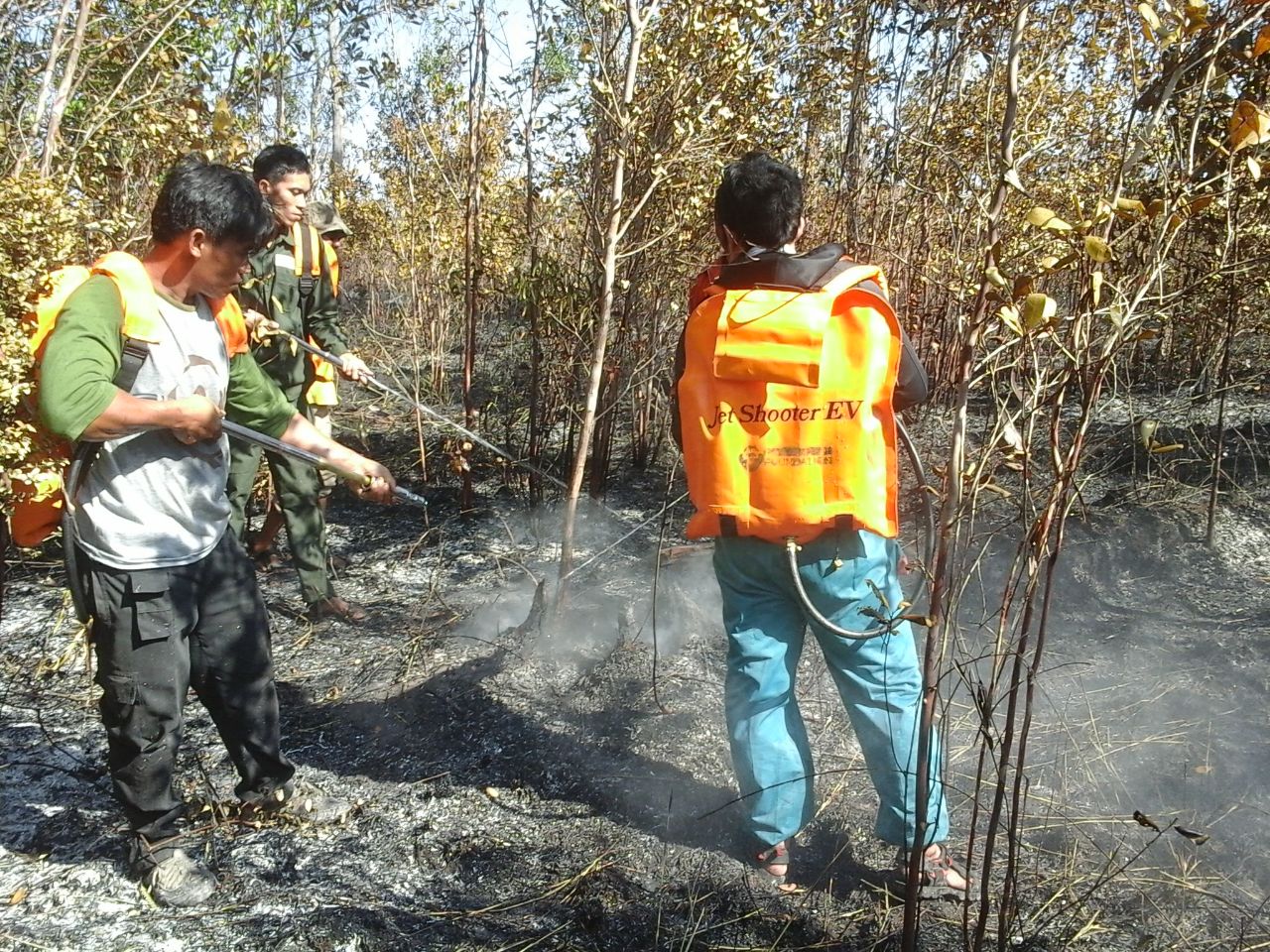
At 10.00 hrs today our team returned to the location of the fire and extinguished any smouldering vegetation. The fires were very close to our Guard Post Vigilant Howe. Using GPS, the total area of the fire was 61 hectares, which is the equivalent to the area of 150 football pitches.
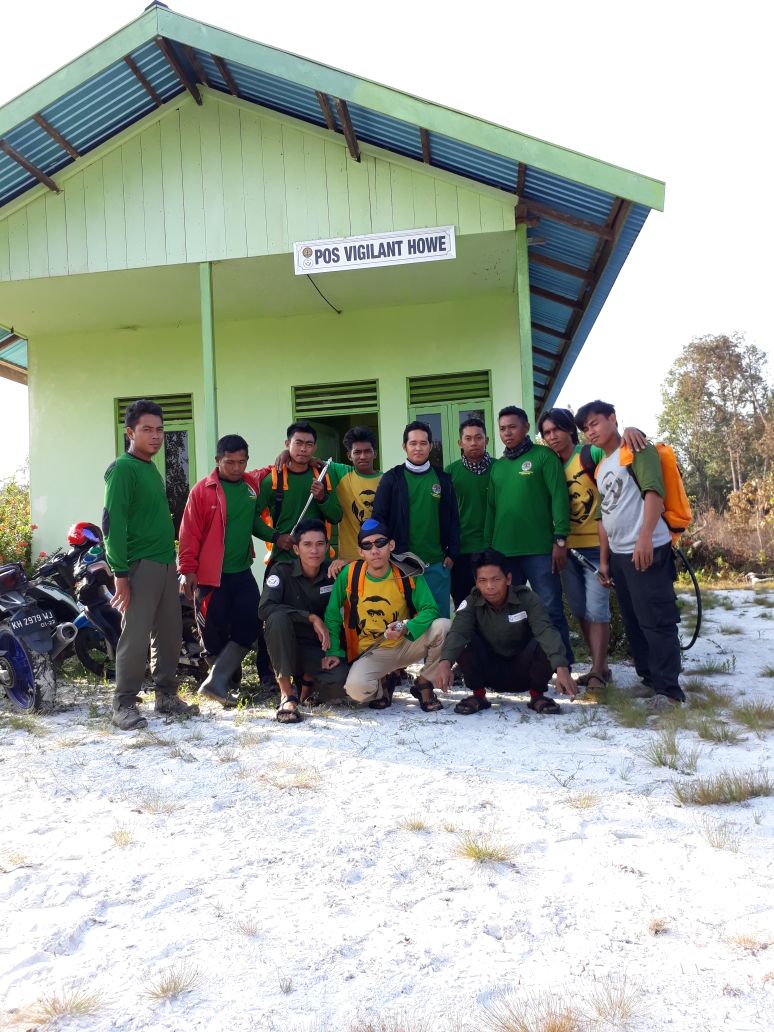
At a time when orangutan numbers are falling dramatically we need to ensure their habitat is safe. This is the second fire this year alone and we have also detected and stopped 2 cases of illegal logging. Help us to protect these forests and orangutans. If you can, please consider making a regular donation. Donate today
Thank you,
Orangutan Foundation
The future of conservation is in our hands
The survival of the critically endangered orangutan and its forest habitat lies in the hands of Indonesia's youth. Their opinions, decisions and actions will determine its future existence in the wild. This is why awareness and capacity building is vital to the long-term conservation of this threatened great ape.

This month the Orangutan Foundation, and other local organisations, delivered a series of lessons to senior school, SMAN 3 Pangkalan Bun (Central Kalimantan, Indonesian Borneo). Our Research Manager, Arie, talked about the importance of research and our work at Pondok Ambung Research Station in Tanjung Puting National Park. The Orangutan Foundation's Forest Patrols Manager, Jakir, led an inspiring session about photojournalism.
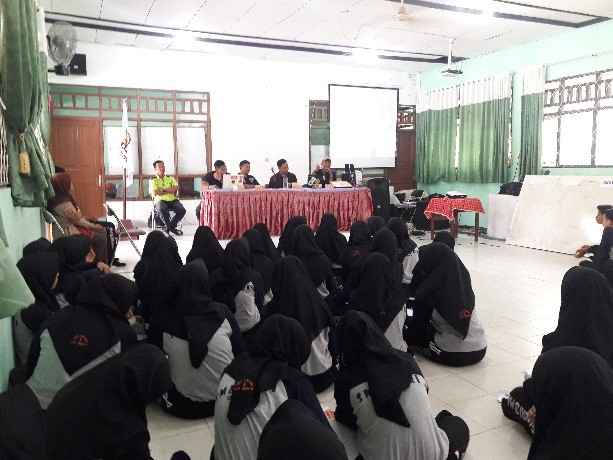
Why is Pondok Ambung Research Station important?
Every few months our staff move camera traps to a different location within the research study site. Just some of the wildlife documented so far includes clouded leopards, sun bears, muntjac, crested fireback (forest pheasant), mouse deer, tree mouse, frogs and pig tailed macaques.
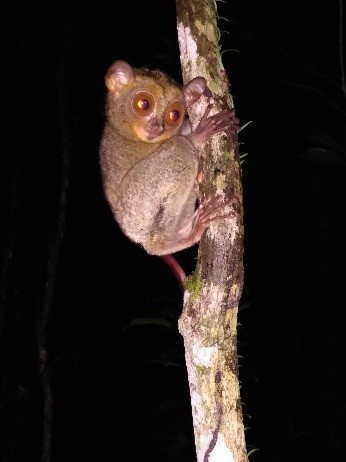
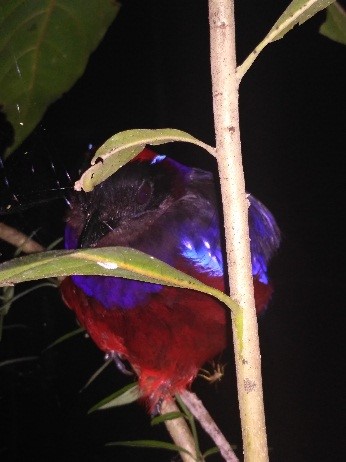

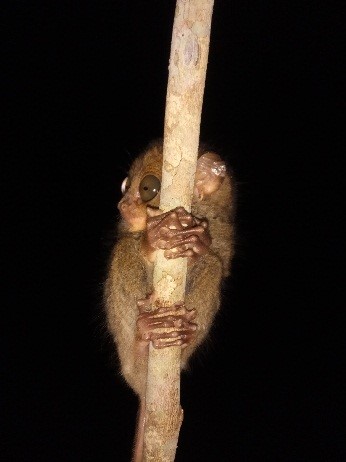
They also monitor tree phenology, recording which species of tree are in flower or fruiting and which consumer species are feeding from them and how often.
Our research station was renovated by last year’s volunteer team and is now much better equipped to hosted visitors. In January, 65 students visited. The students participated in wildlife observations, learnt field skills, watched and discussed a wildlife trade documentary and planted 500 tree seedlings, at Pondok Ambung’s forest restoration site.
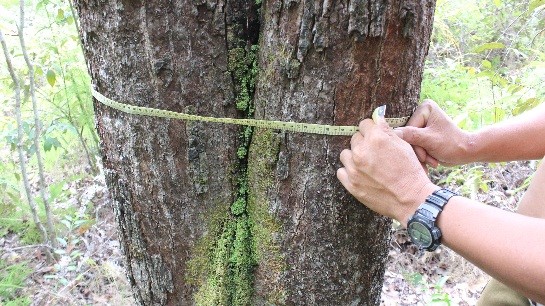
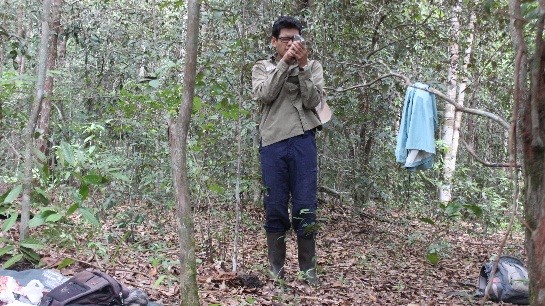
The success of the event was due to the collaborative efforts of Orangutan Foundation staff and other organisations including; Bagas the Traffic / IUCN Redlist Ambassador for Kalimantan; Fajar from OFI, the FNPF, BTNTP and FK3I. The event was supported by the National Park’s tour operators and guides who provided a free klotok (longboat) as did FNPF.
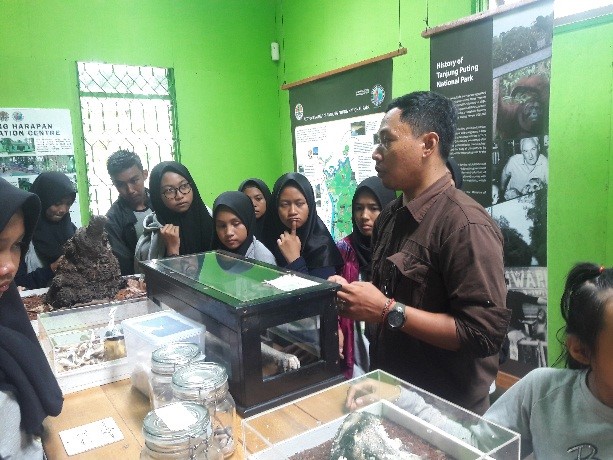
Please donate to support our work - it is needed to secure a future for oranguans, forests and people. DONATE HERE
Wild cats at Pondok Ambung station, Indonesian Borneo
Below are some images taken from camera traps at Pondok Ambung Research Station, Tanjung Puting National Park. In 2017, Orangutan Foundation, awarded three research scholarships to Indonesian students. One of them is Reza Bayu Firmansyah. Reza is conducting research on the density and distribution of wild cat species to complete his Master's Degree at UGM - Gajah Mada University.
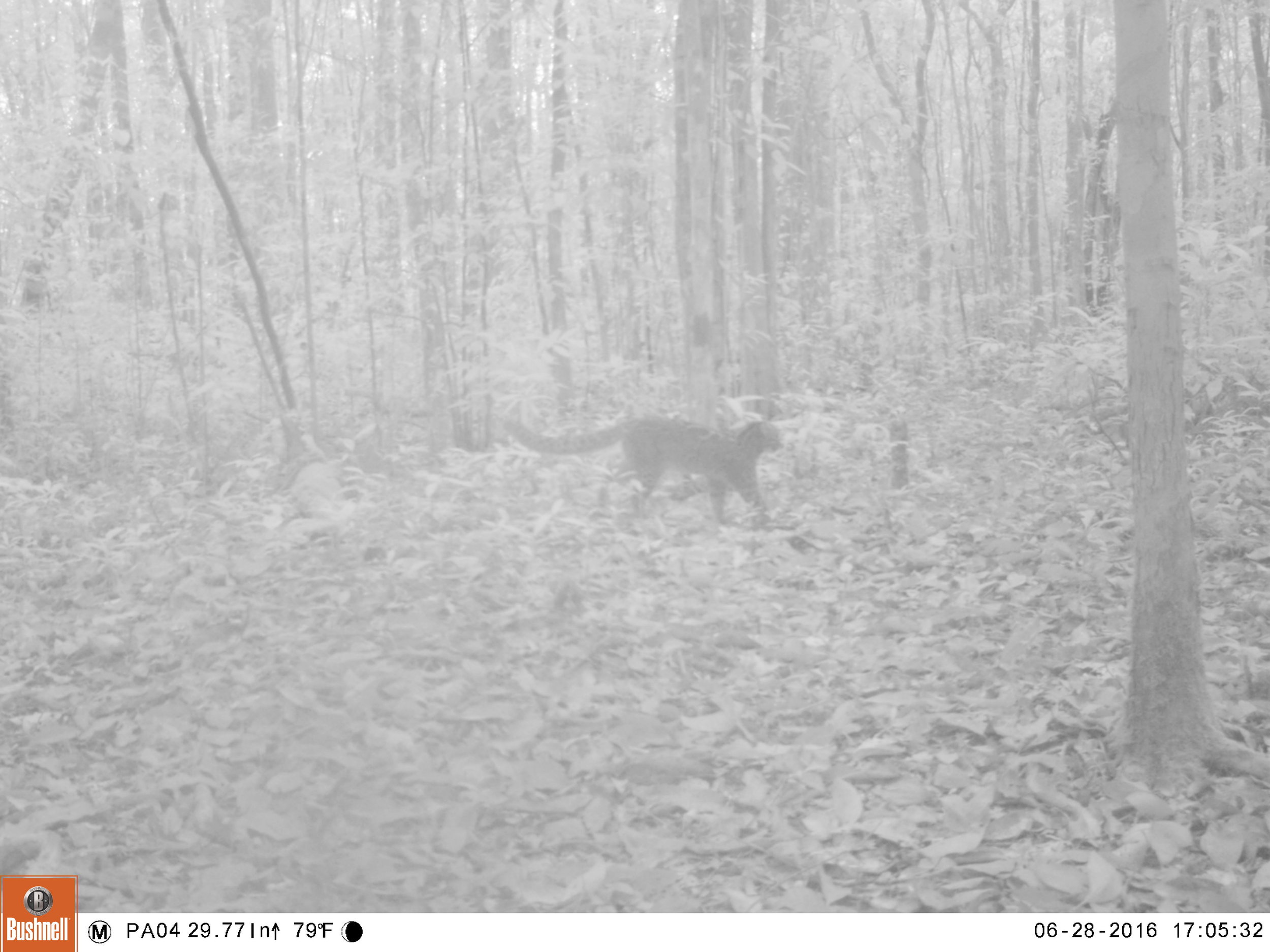
Around the Pondok Ambung Research Station area our staff and Reza think there are 3 individual clouded leopards (Neofelis diardi) all from one family. A male, female and juvenile this based on their size and where they where and when they were photographed.

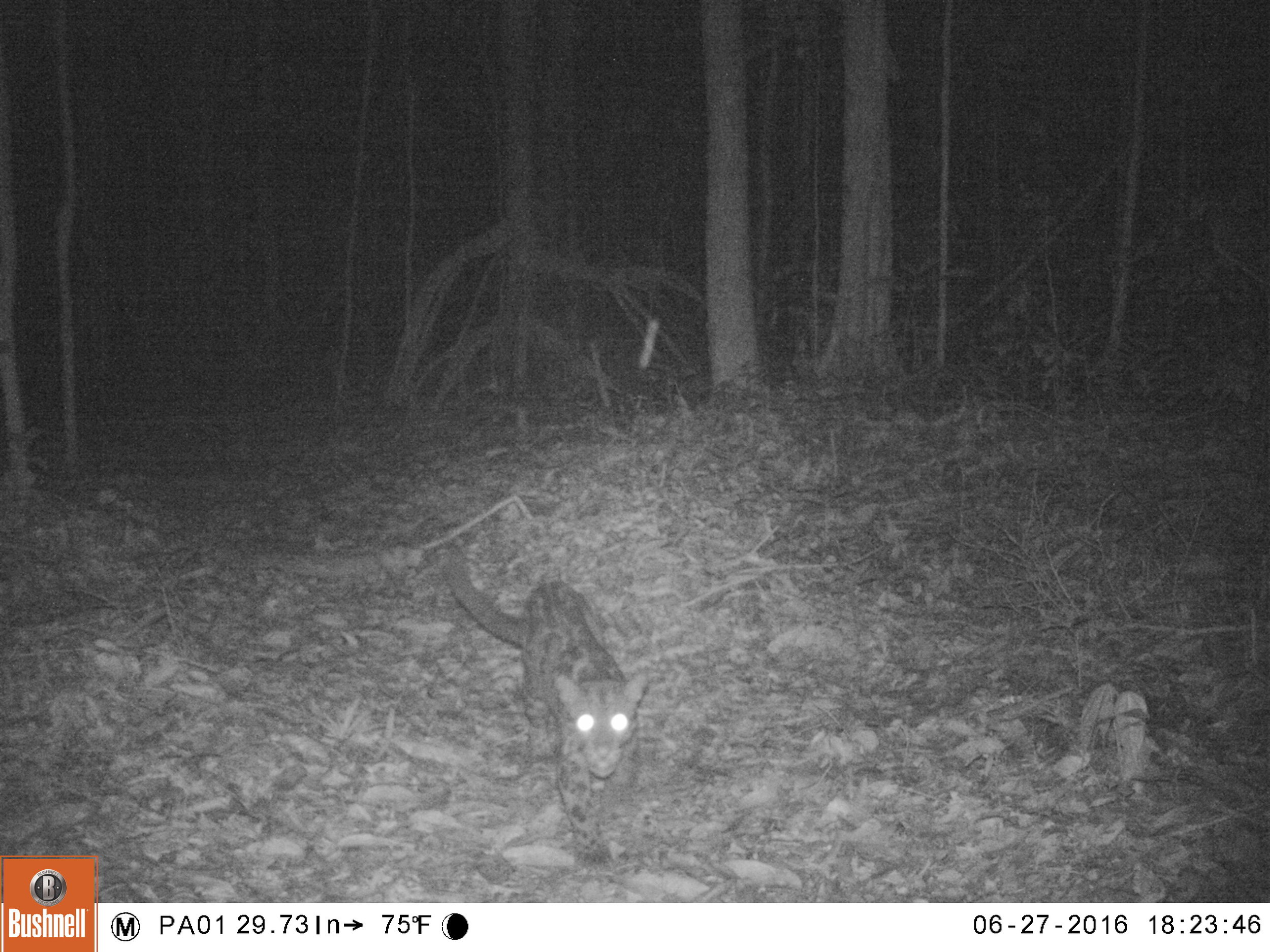
Clouded leopards are a threatened species and it is vital that we learn more about them. Pondok Ambung Tropical Forest Research Station is located in Tanjung Puting National Park, Indonesian Borneo and is run by the Orangutan Foundation in co-operation with Tanjung Puting National Park Authority.
Please donate to support our work.
Thank you.
Have your donation doubled for free and support Borneo's wildlife conservationists
From 28th November until 5th December you can DOUBLE your donation through the Big Give Christmas Challenge, at no extra cost to yourself. Click here to donate and double your impact to support our work. This year our we are raising funds to inspire Borneo’s future conservationists. In this clip Arie, Research Manager of Pondok Ambung, our tropical forest research station in Tanjung Puting National Park, explains why it is important.
We use camera traps to monitor the wildlife in the forests surrounding Pondok Ambung. Watch this short clip to see some of the species we’ve managed to capture on film!
To protect Indonesia’s biodiversity, future conservationists need to be encouraged and supported.
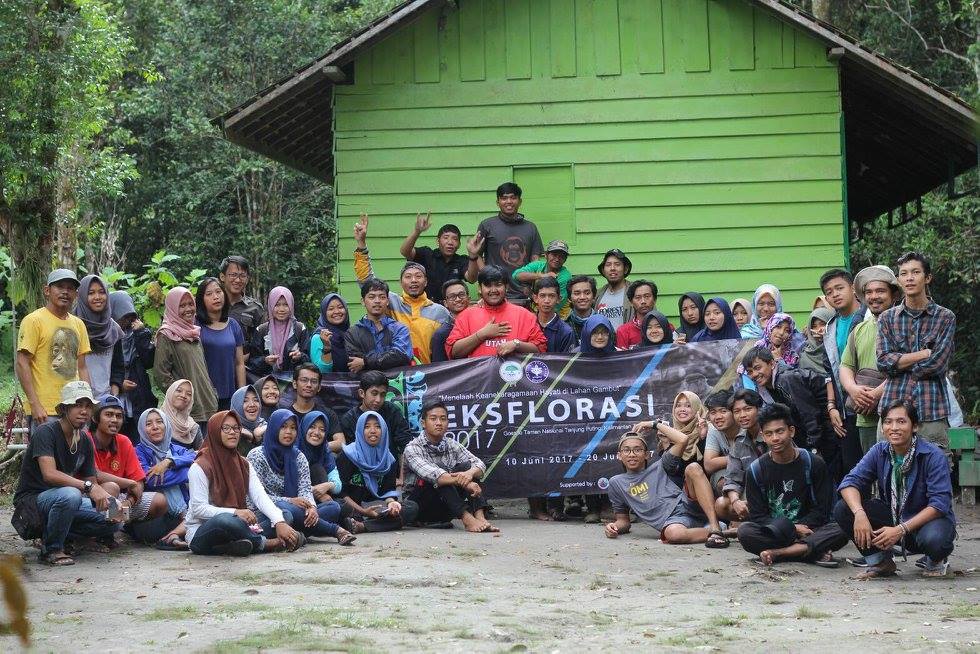
Our research station is a base from where Indonesian students and international scientists can conduct research. Take a virtual tour below:
Please help us to ensure a future for orangutans, forests and people.
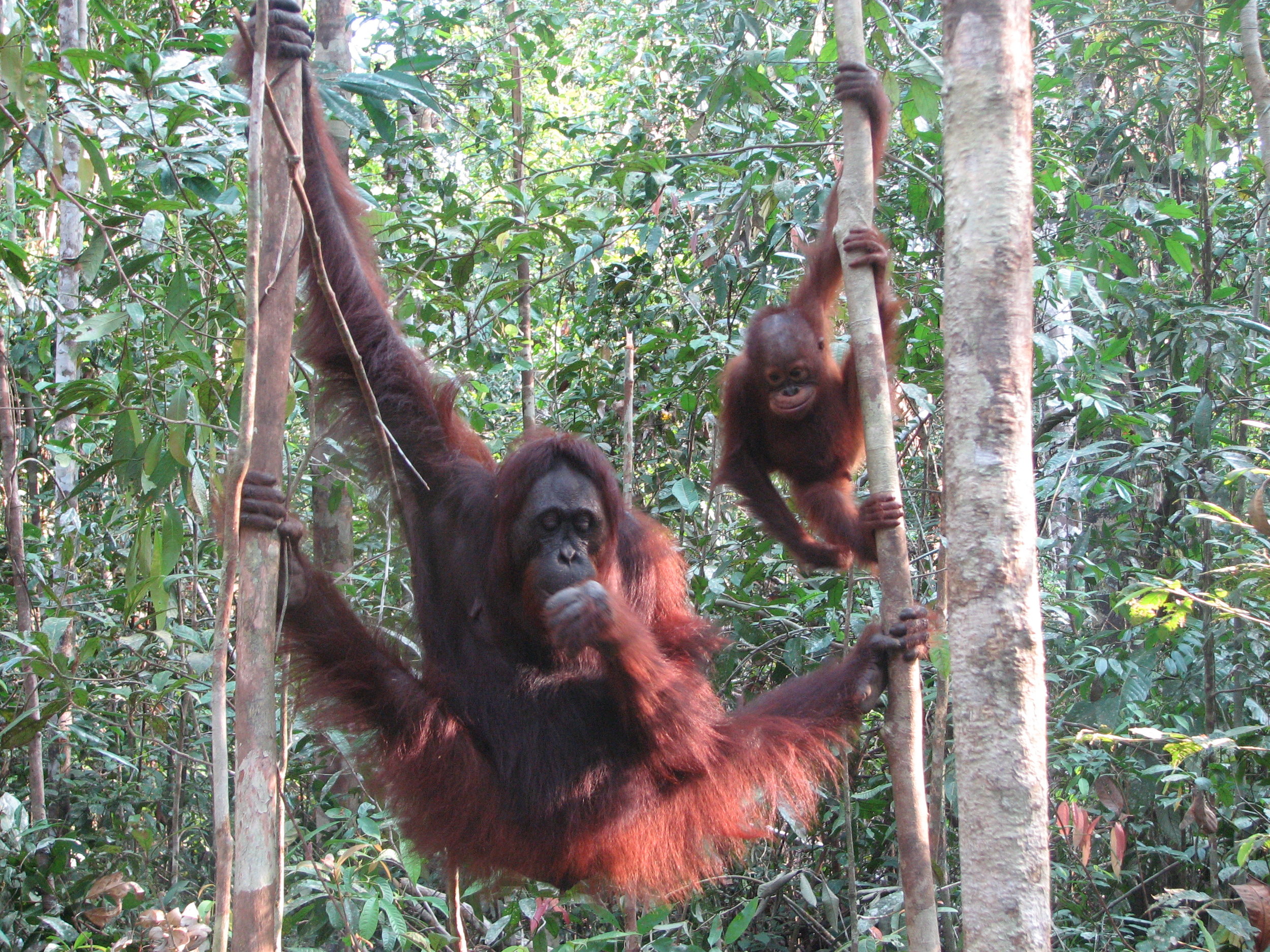
Thank you for your support. Click here to DOUBLE YOUR DONATION through the BIG GIVE.
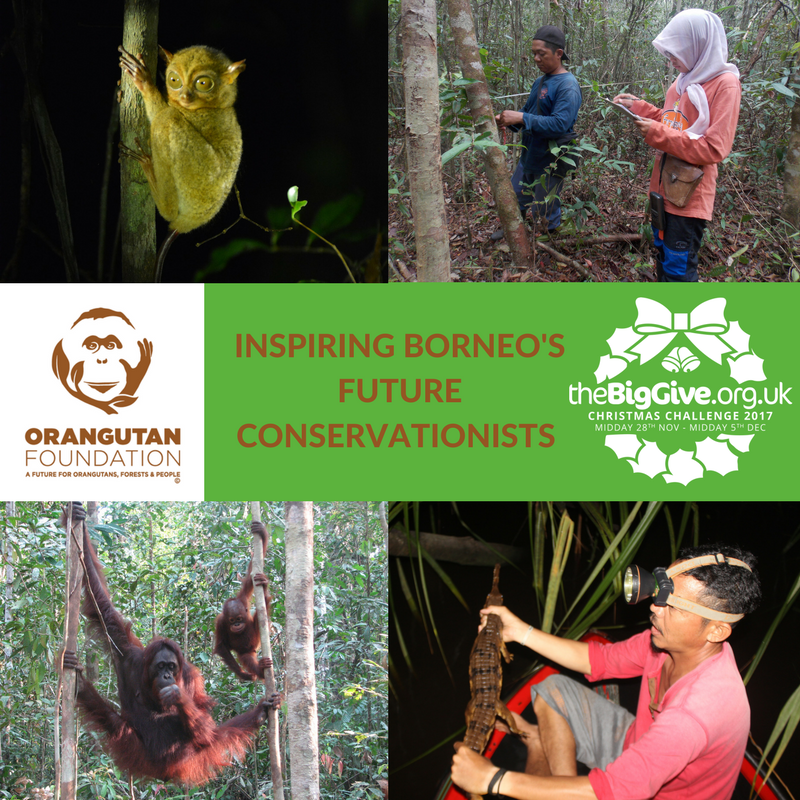
Freedom in the wild
If you want something done, ask a busy person. This expression is especially true for Orangutan Foundation Director, Ashley Leiman OBE, who has just returned from a field visit to our programmes in Central Kalimantan, Indonesian Borneo. One of the highlights was a tree planting ceremony to celebrate the planting out of over 22,000 seedlings in degraded forest habitat in the Lamandau Wildlife Reserve. The most memorable day though involved the return to the wild of seven different species. Captured from the wild and kept as pets, these animals had been confiscated by the Wildlife Department of Central Kalimantan (BKSDA Kalteng). The day was also a chance for Ashley to meet Bapak Adib Gunawan, the new Head of Wildlife for Central Kalimantan, who was overseeing the releases.
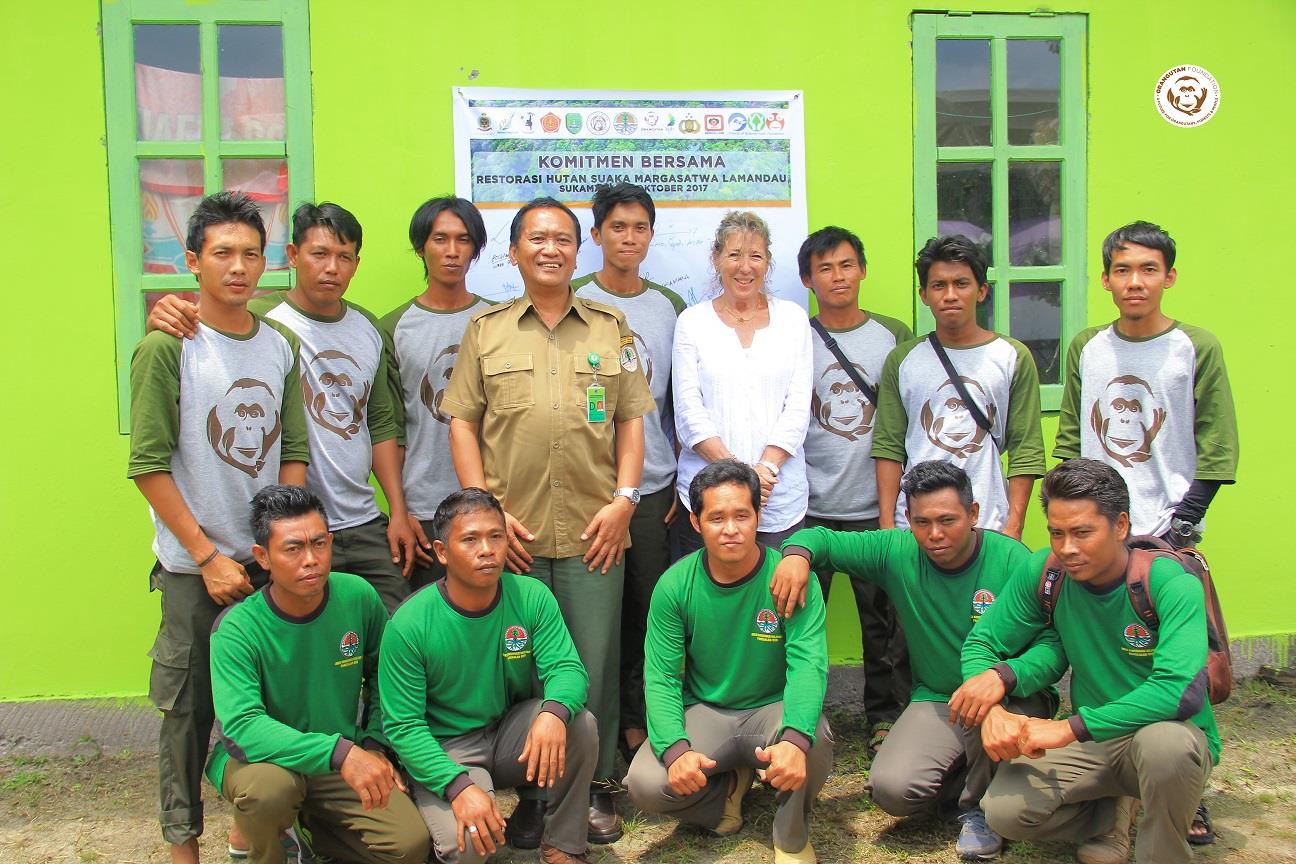
The animals due for release included two changeable hawk eagles, a hornbill, a pangolin, a slow loris, two reticulated pythons, a sun bear and a young orangutan.
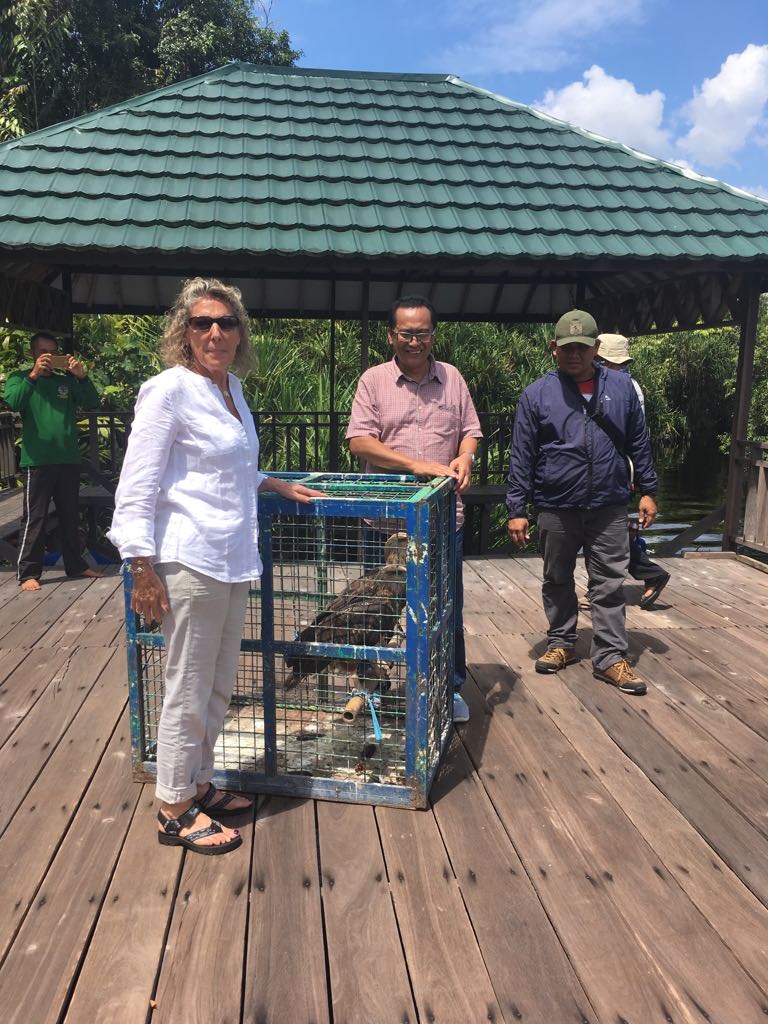
The orangutan, a handsome young male of around one-and-a-half years old, had been kept as a pet in a nearby town. He was named Adib, after the new Head of Wildlife, and has joined our Soft-Release Programme at Camp JL, in the Lamandau Wildlife Reserve, where he’ll learn the skills to survive in the forests.
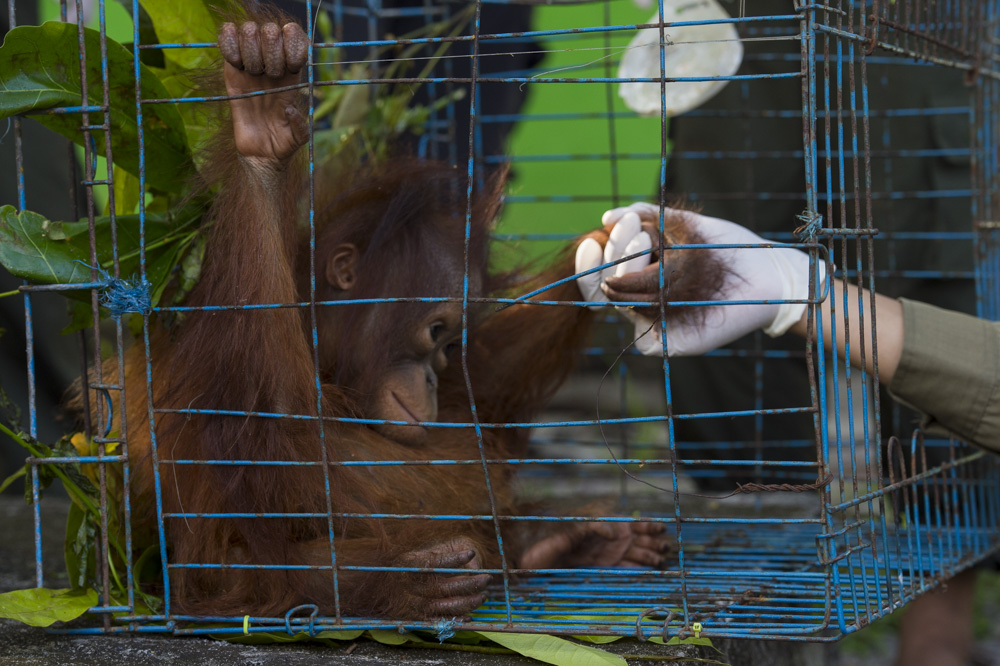
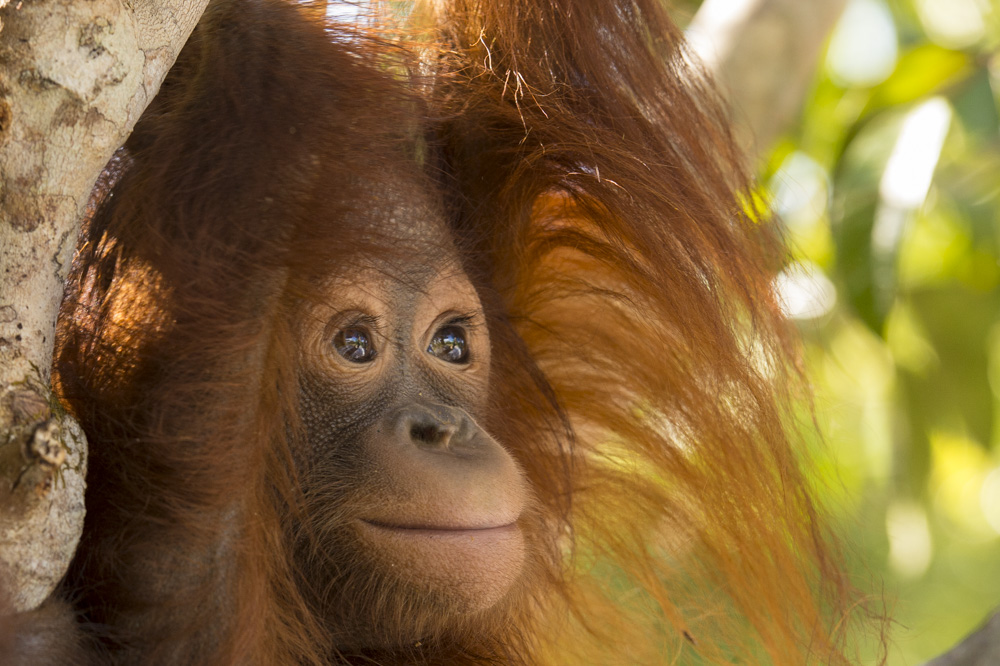
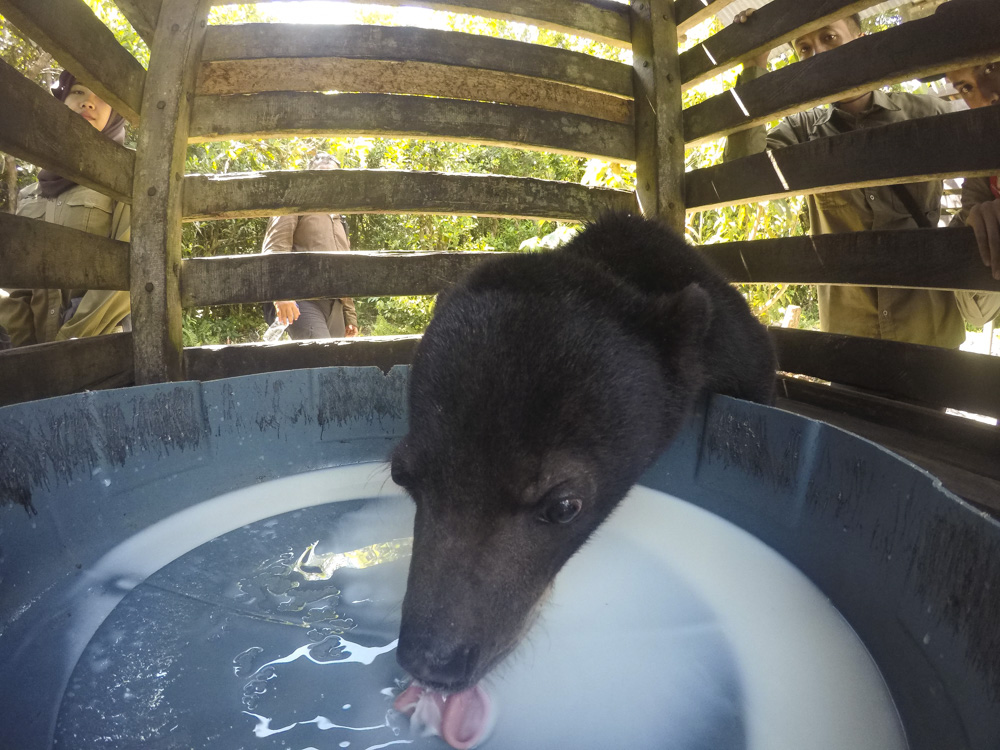
A playful sun bear, named Paddington (also a pet), was taken to Camp Siswoyo, where Orangutan Foundation staff will care for him until he is old enough to live independently. The slow loris, being a nocturnal primate, was released after nightfall.
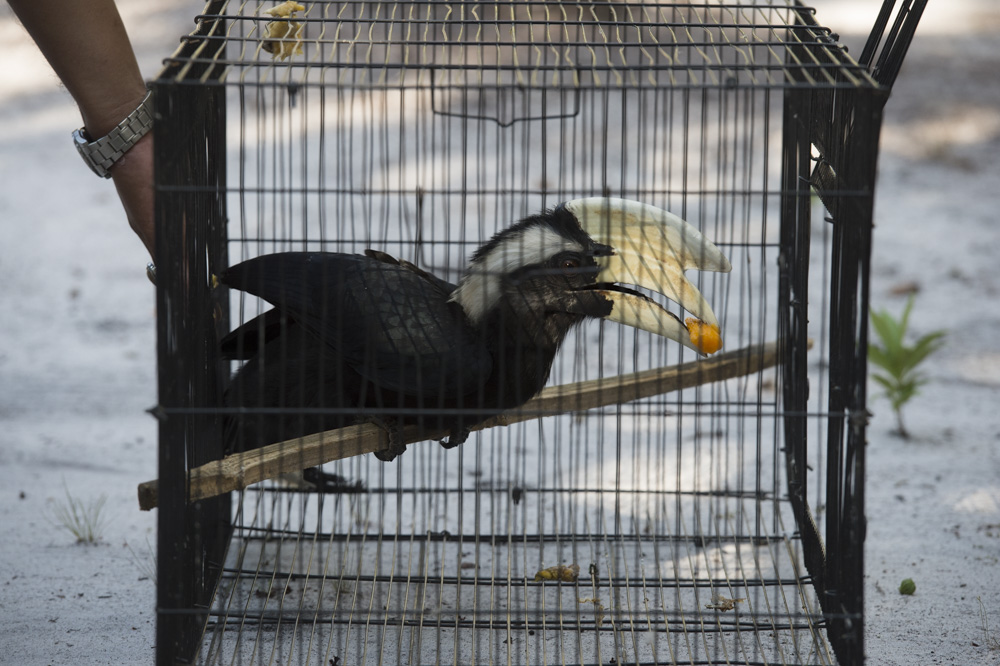
The changeable hawk eagles and hornbill were released from a guard post in the reserve, and Ashley opened the slide door to the crate of the pythons.
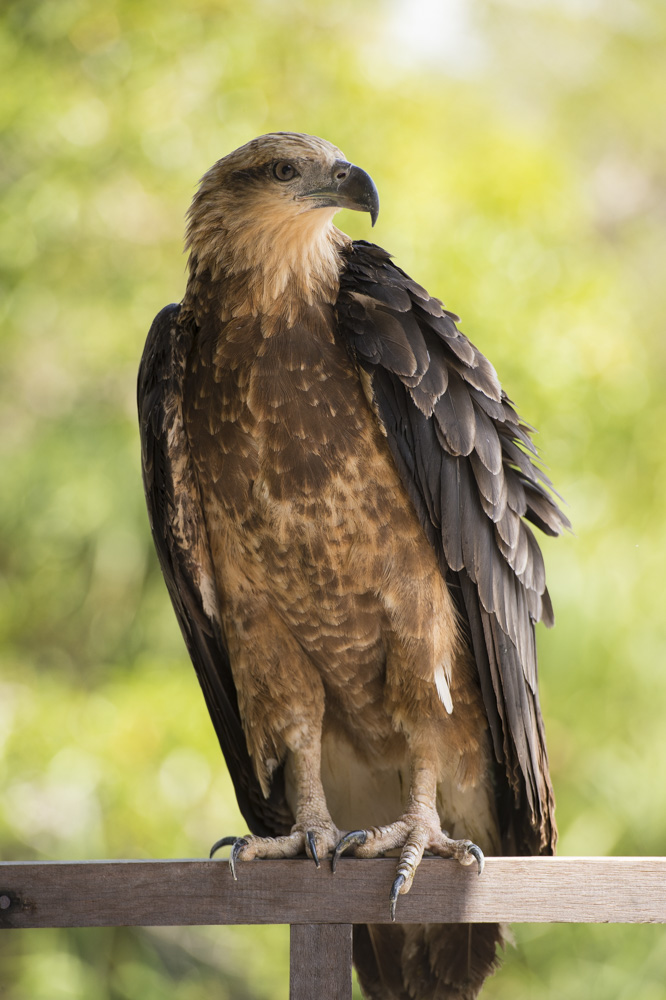

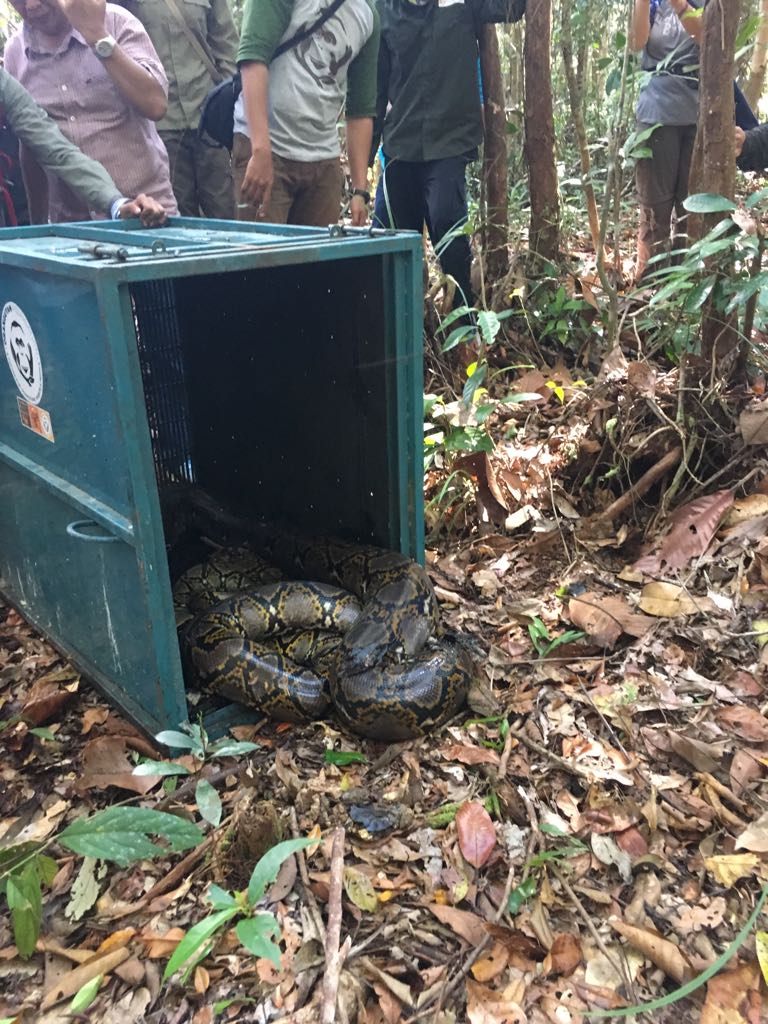
Over 3 meters in length, Ashley questioned why anyone would want to keep the snakes as a pet! We’ll post a separate blog on the pangolin, so watch this space.
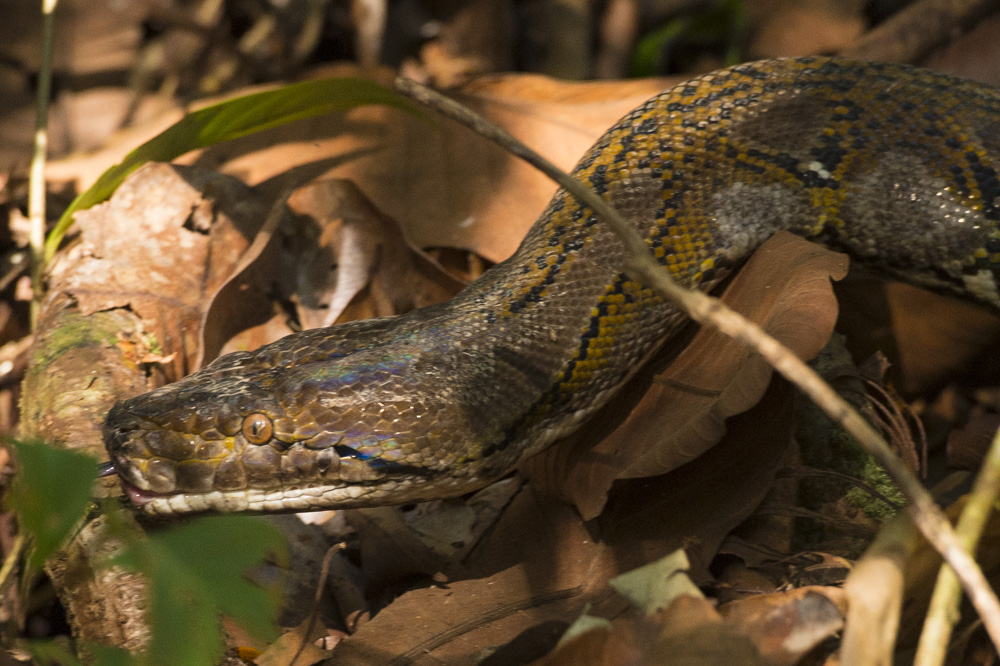
Ashley pointed out that our work for these animals has only just begun. Through our habitat protection work we must ensure that the forests stay standing, so the wildlife stays in the wild.
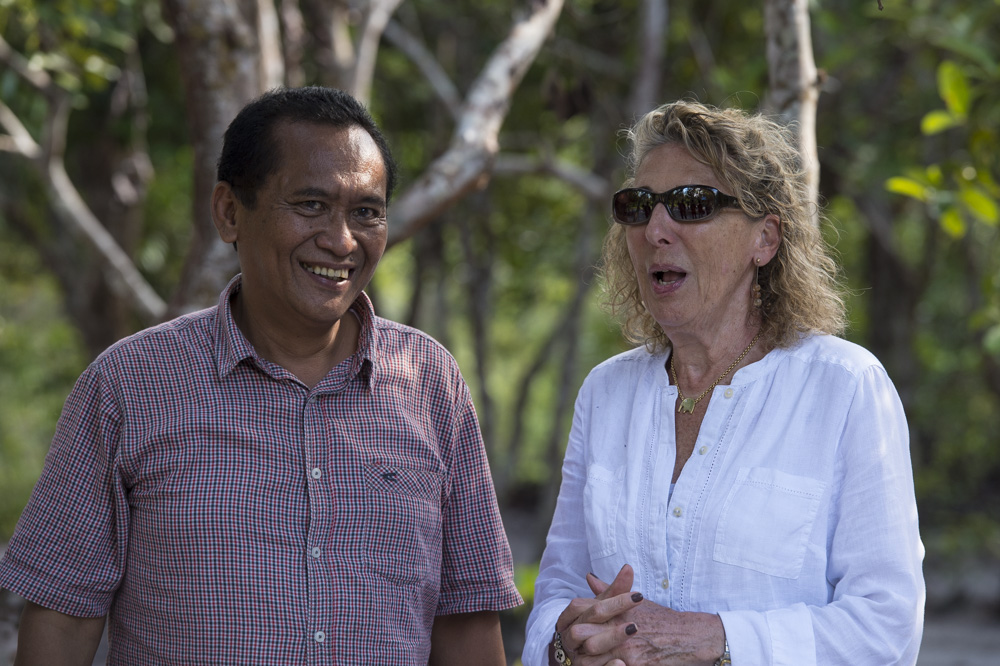
Please support our work, donate now.
Thank you.
A family adventure in Kalimantan, Indonesian Borneo
We are delighted to share this post written by Justin Wateridge, Managing Director of Steppes Travel.
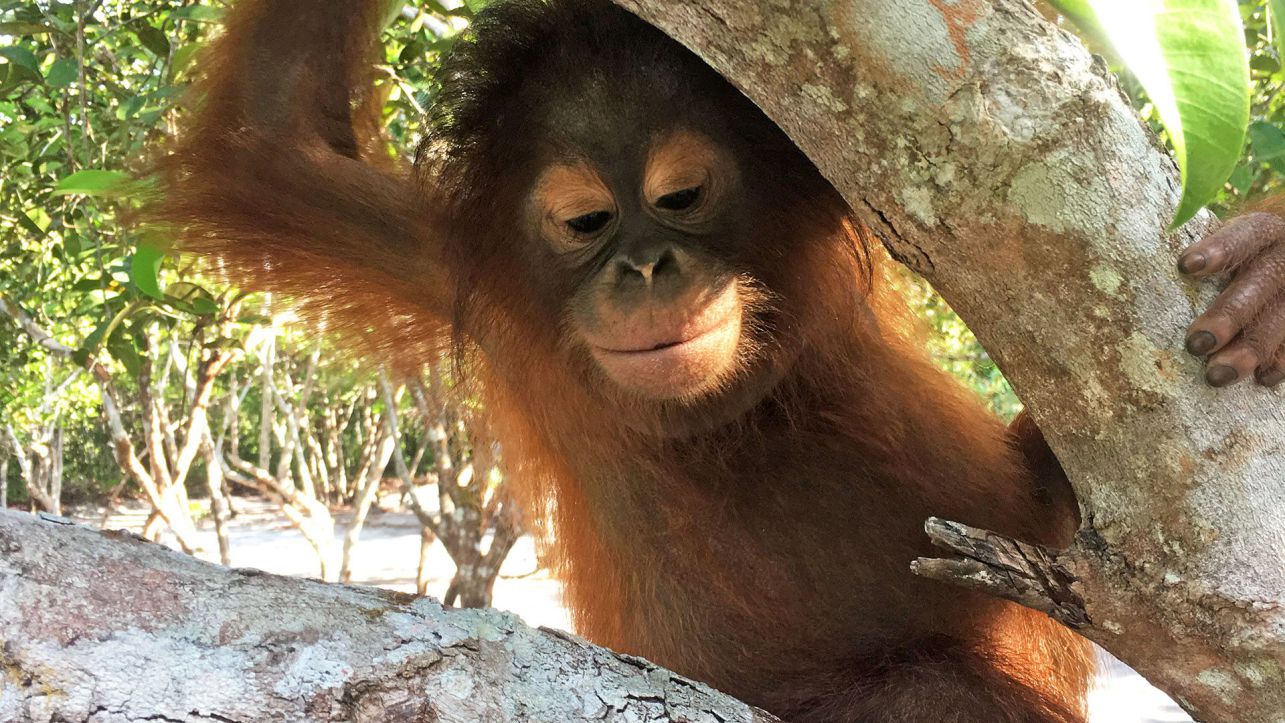
“Can we hold one of the baby orangutans?”
“You can’t hold them. That wouldn’t be right. They need to be released into the wild when they are older and they must not become too habituated to people.” I beamed with pride at the grown-up and correct response from my eight-year old son.
Just hours earlier we had flown into Pangkalan Bun, the southernmost airport of the massive island of Borneo and the access point to Tanjung National Park, home to the man of the forest, the orangutan. Before journeying into Tanjung Puting we were fortunate enough to be visiting Lamandau Wildlife Reserve at the personal invitation of the Orangutan Foundation UK.

Yet at the time, standing at the dock in Pangkalan Bun, I sense the mood of the team was not one of being lucky. The vagaries of flight timings in a remote part of Indonesia and our misconceived western obsession with punctuality meant that we were late and tired. Our mood reflected the grey skies above. The four speedboats bobbing precariously in the water did little to alleviate the temper of the Mums, the drops of rain only further dampened spirits.
However, twenty minutes out of Pangkalan Bun we turned off the brown sludge of the wide and featureless Kumai River and headed up the much smaller and altogether more exciting Arut River. The speedboats raced along the black tannin river which was only several meters wide, hemmed in by a riot of vegetation. Slaloming through the foliage of the forest in the hope that the river did not have a two-way traffic system was adrenalin-charged. Parents likened it to the Bond film ‘Live and let die’ and children to Willie Wonka’s glass elevator; both found it exhilarating. Read more...
Vote for orangutans
We are delighted that today's blog post is by Julia Cissewski founder of the German charity Orangutans in peril. Please take a few seconds to vote for Julia and help win €30,000 for orangutans. On 14 July, I visited the Lamandau Wildlife Reserve, Central Kalimantan. Our German charity Orang-Utans in Not e.V. (Orangutans in peril, www.orang-utans-in-not.org/en/) has been supporting the Orangutan Foundation's enrichment planting and forest restoration there for several years.
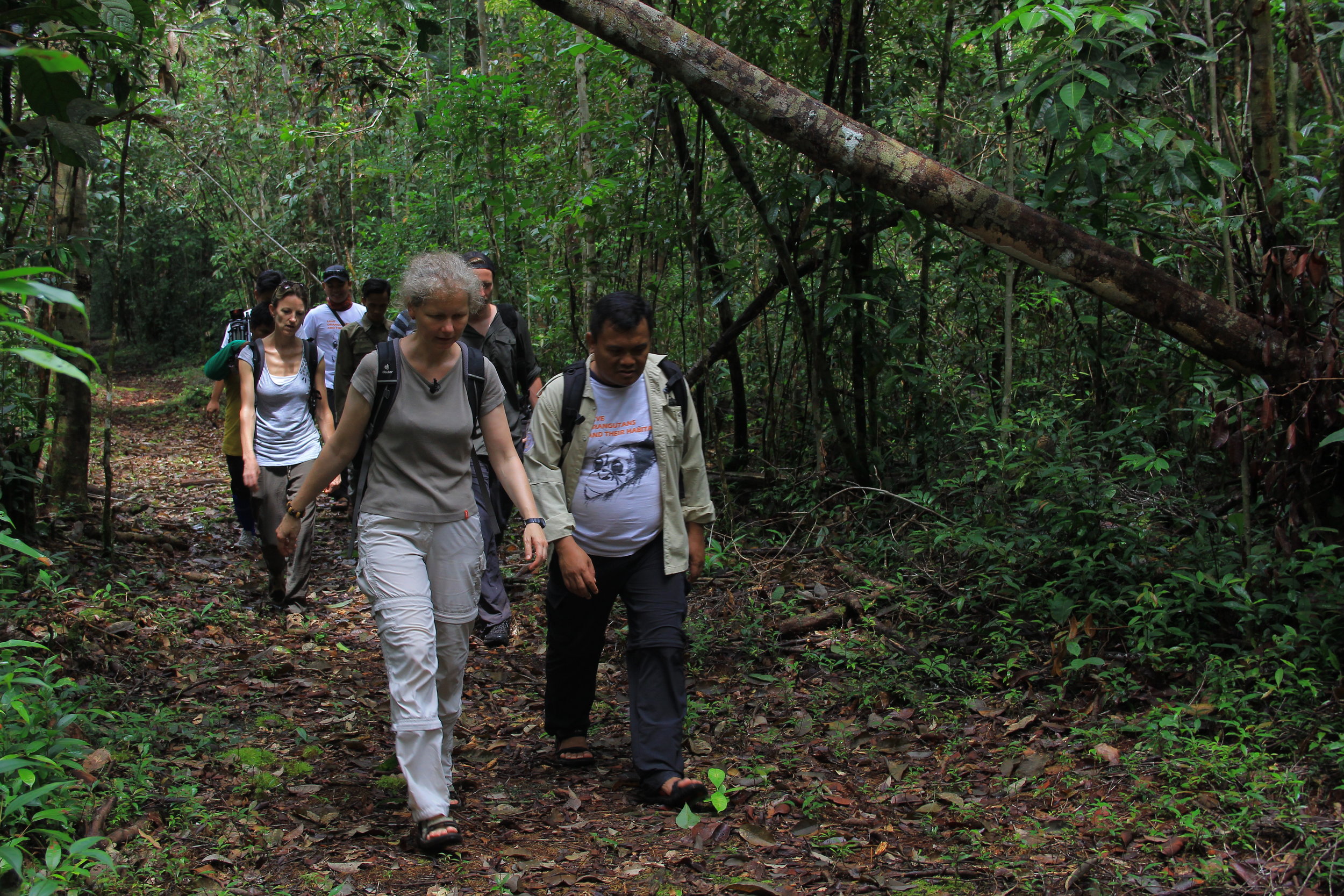
After a week of intermittent rain, we enjoyed a beautiful sunny morning and first travelled by boat from the town of Pangkalan Bun to Camp Rasak in the Reserve.
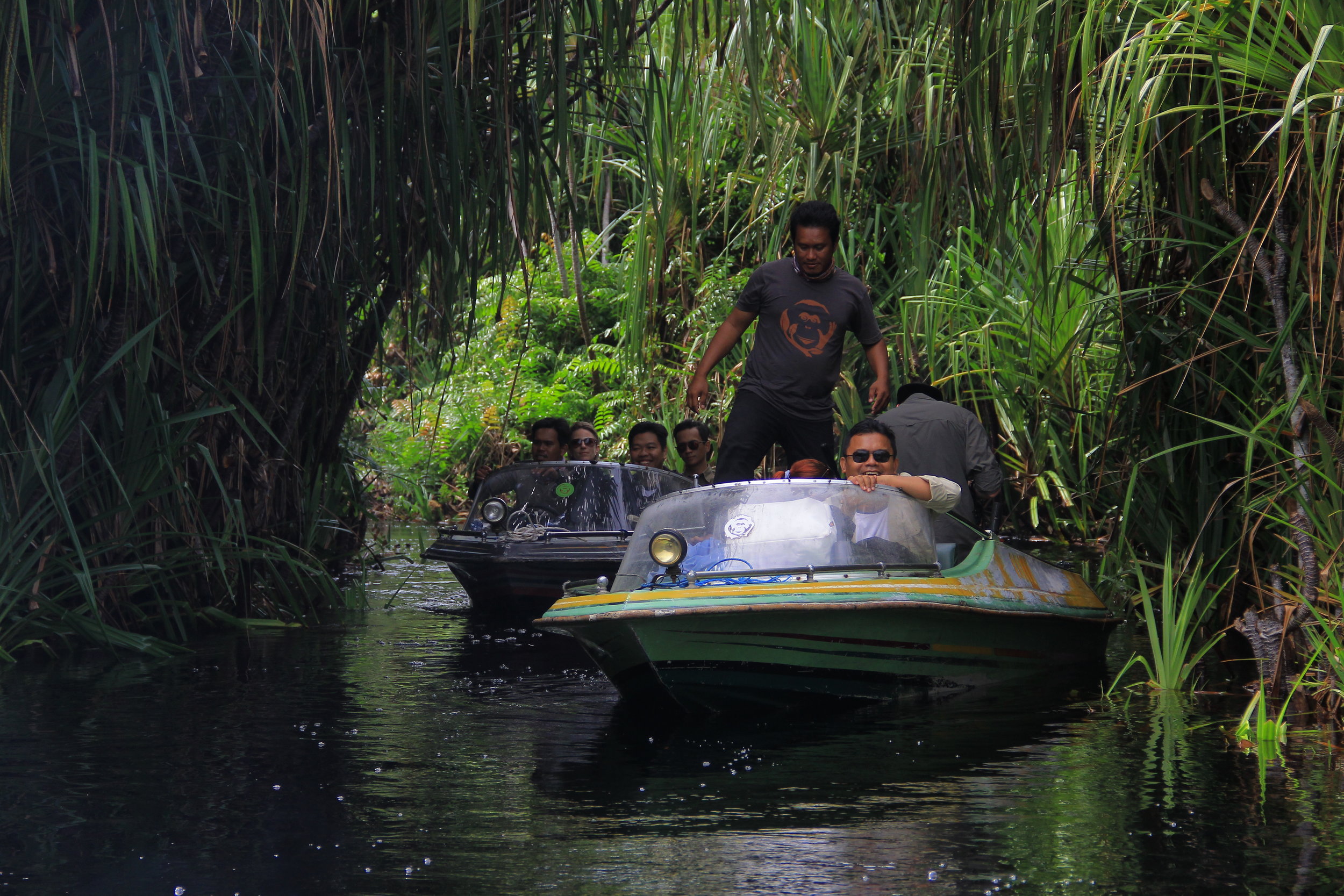
There we visited the enrichment planting area. I last went there in 2012 and now was delighted to see the progress that has been made. The little fruit trees will later serve to feed orangutans in the area.
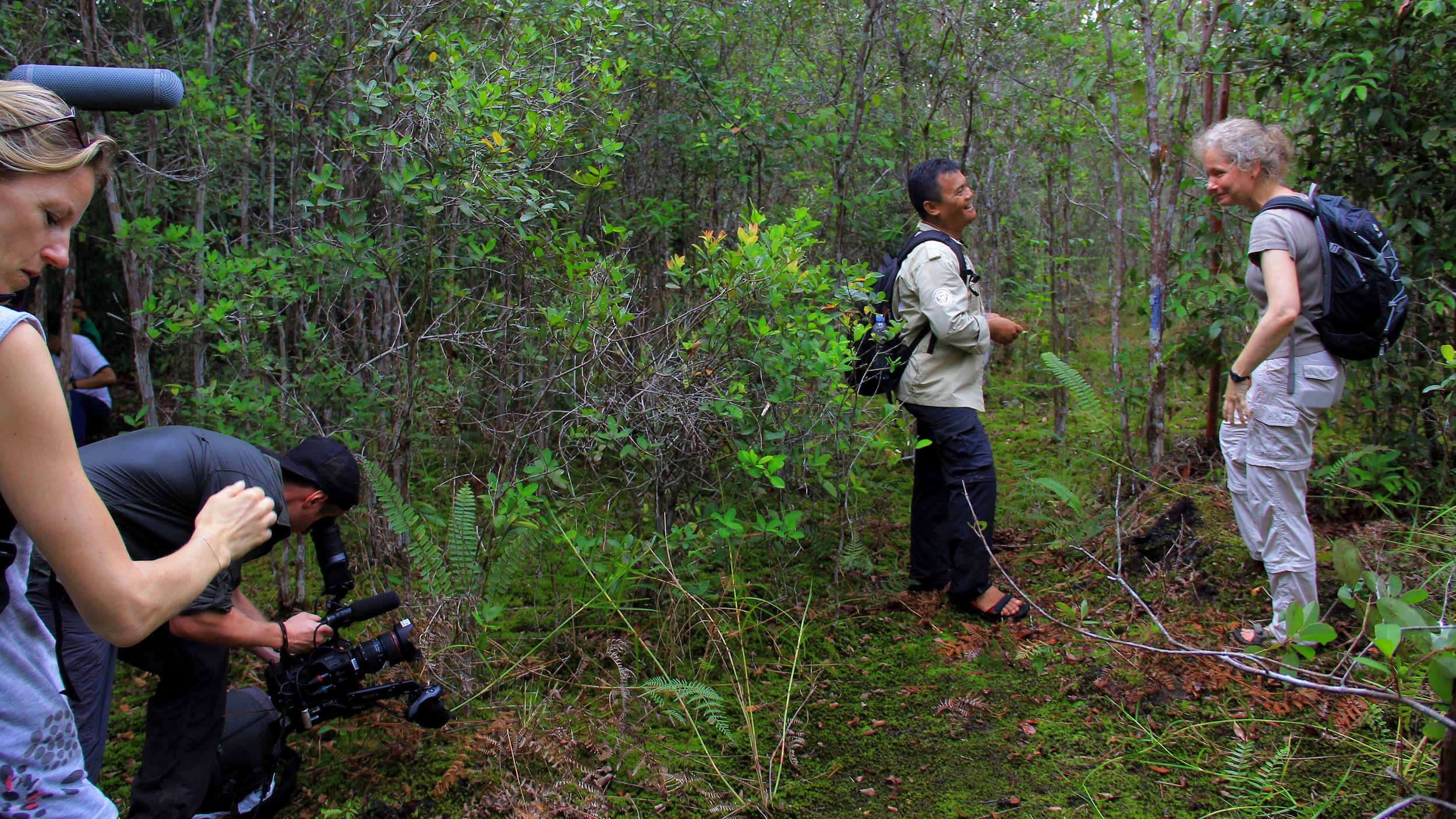
Afterwards we went by boat to Camp Gemini to watch the feeding of released orangutans. The weather kept and it got rather hot. We thus were glad to reach the cover of the release site. At the feeding station we observed several females with their babies, a moving experience. The babies were born in the wild and show the success of the release programme.
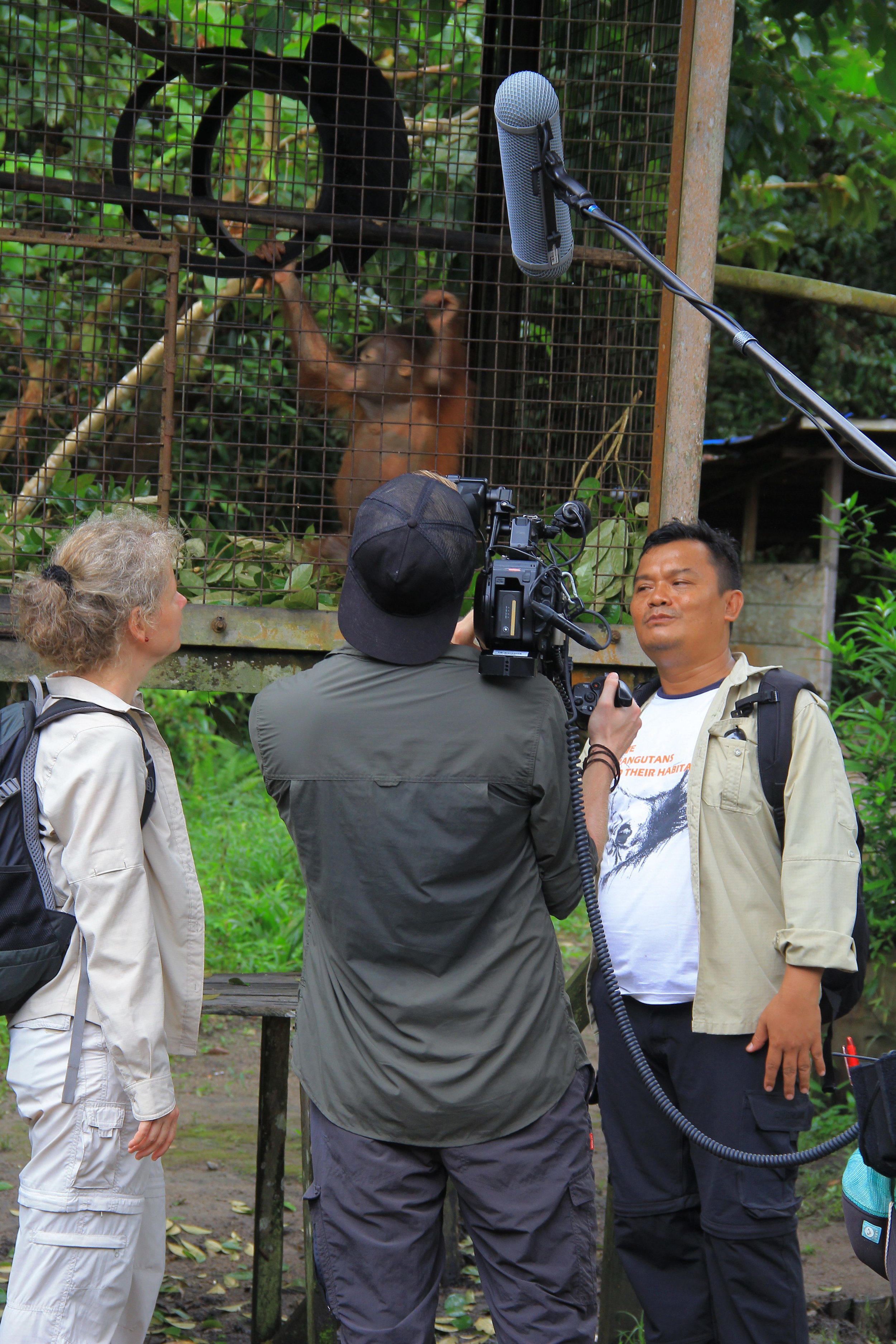

On our way back to Pangkalan Bun we saw several Proboscis monkeys, watching us rather unimpressed from the trees on the river bank. We arrived in Pangkalan Bun when the sun was setting. It was a wonderful day and we gave our thanks to Pak Ade, the program manager, and the other Orangutan Foundation staff. They are doing such great work in Lamandau and we are very much looking forward to our future cooperation.
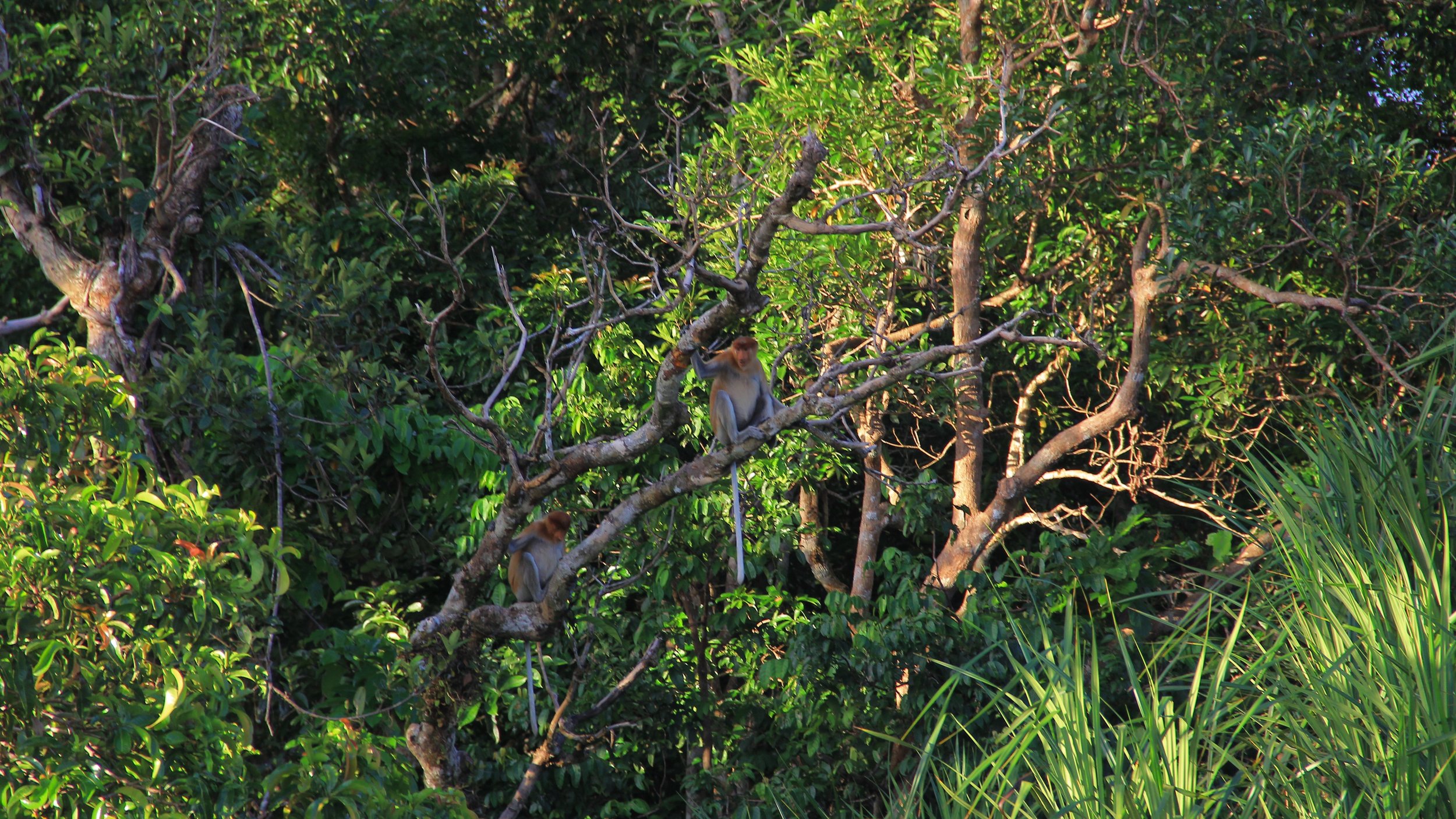
I suppose I should mention that I was accompanied by a film crew who were filming for the German magazine "Bild der Frau". This magazine each year awards prizes to five women running German charities. And in 2017 I am one of them. You can help us gain an additional award of 30,000€ (!) for the orangutans. This award is given to the organization that can raise most votes by October 21, 2017. Every vote counts: https://www.orang-utans-in-not.org/en/goldene-bild-der-frau Thank you very much for your support!
Julia
Indonesia's future wildlife conservationists
Orangutan Foundation hosted 53 visiting Indonesian students from Bogor Agricultural University in June.
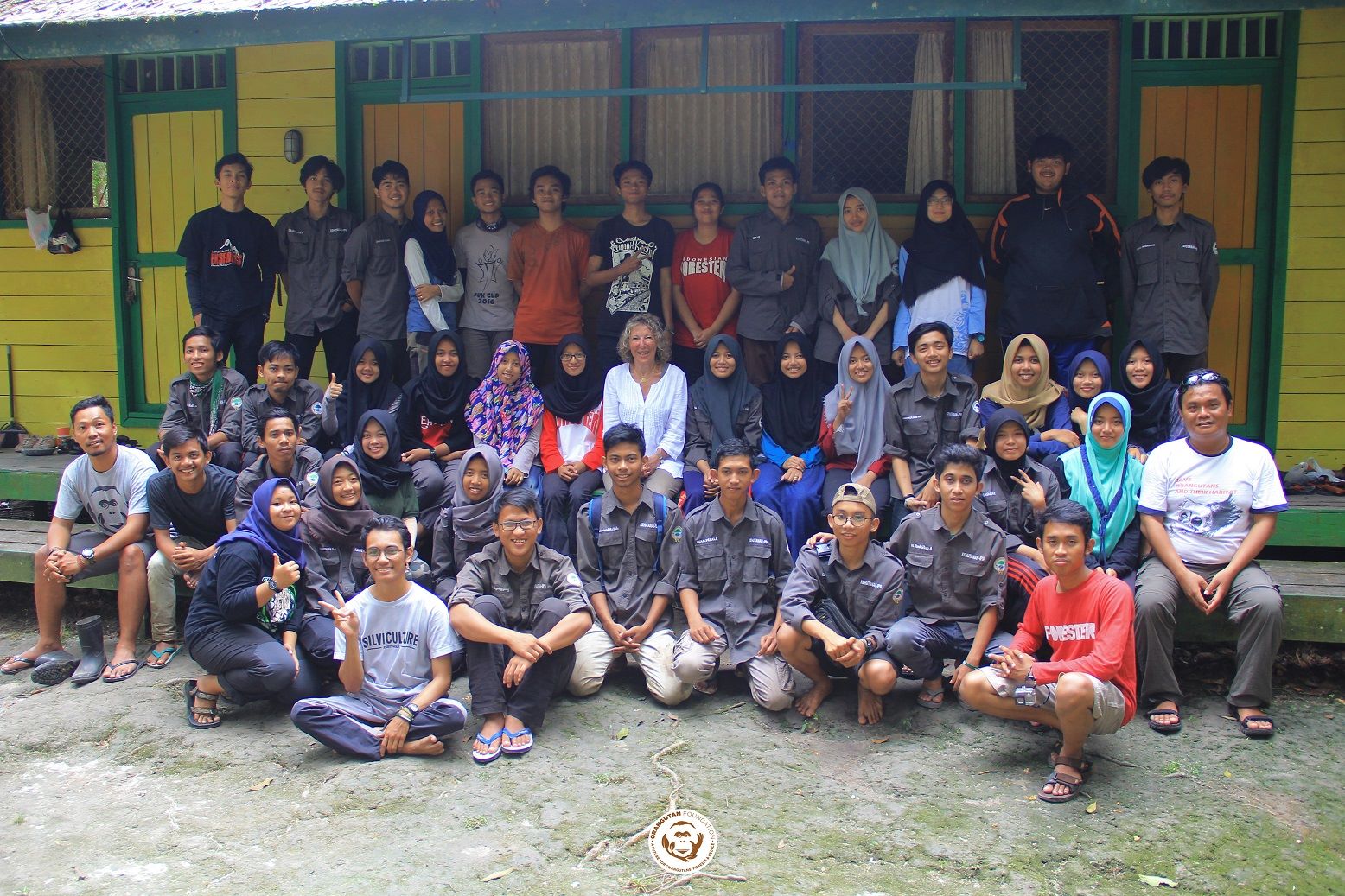
Ashley Leiman OBE, Orangutan Foundation Director, greeted the students at our research station in Tanjung Puting National Park, Central Kalimantan (Indonesian Borneo). The students were studying Silviculture. The name comes from the Latin silvi meaning forest and culture as in growing.
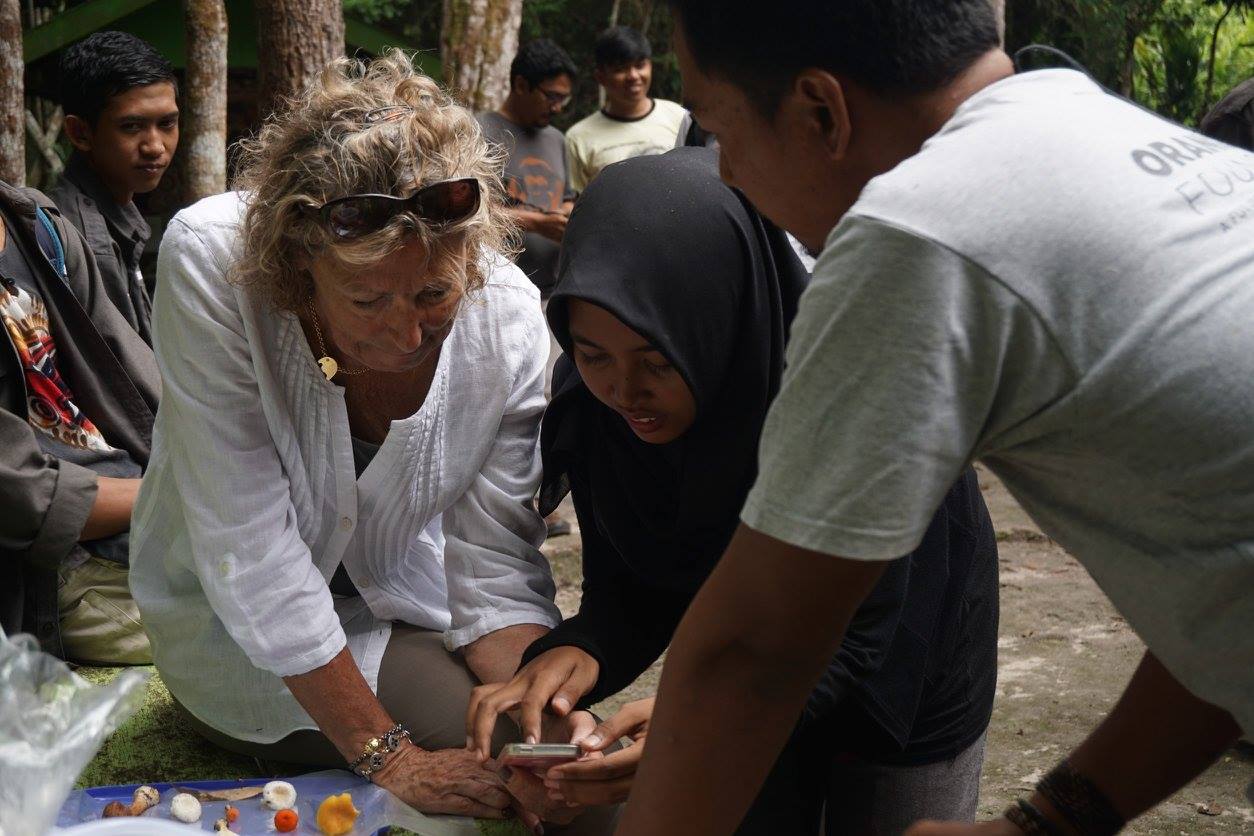
Providing opportunities and the facilities for Indonesian students to study tropical forests is not only vital for the future of the country's forests and people but is for orangutans too. A recent article in the journal Nature Scientific Report stated that 'Orangutan populations on Borneo have declined at a rate of 25% over the last 10 years'. If we are to truly tackle this problem we have to think long-term. The future of orangutans ultimately rests in the hands of the Indonesian people.
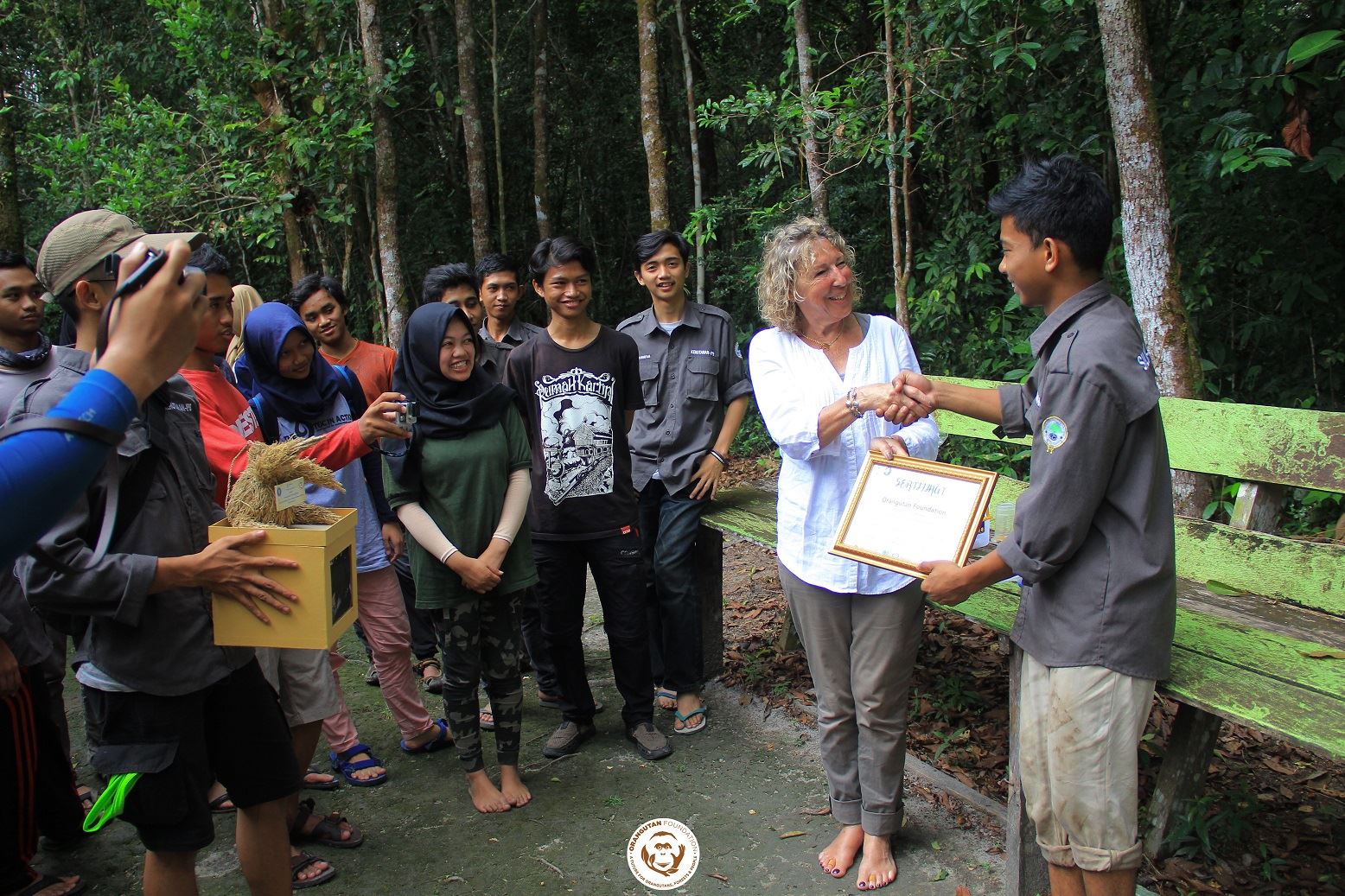
Please donate to support our work - a future for orangutans, forests and people.
Thank you,
Orangutan Foundation
The Lamandau Wildlife Reserve
We are delighted to be able to convey the news that two of our soft-release orangutans, Jessica and Ketty, have now been released into the Lamandau Wildlife Reserve. Staff are confident both will go on to living fulfilling lives in the wild, free from the threat of habitat loss.


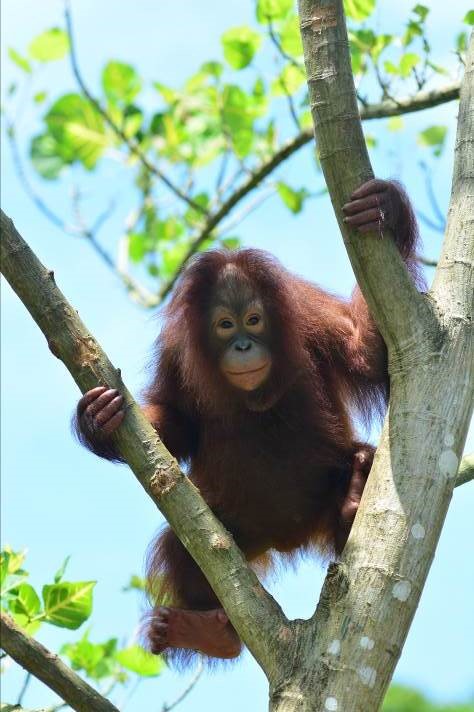
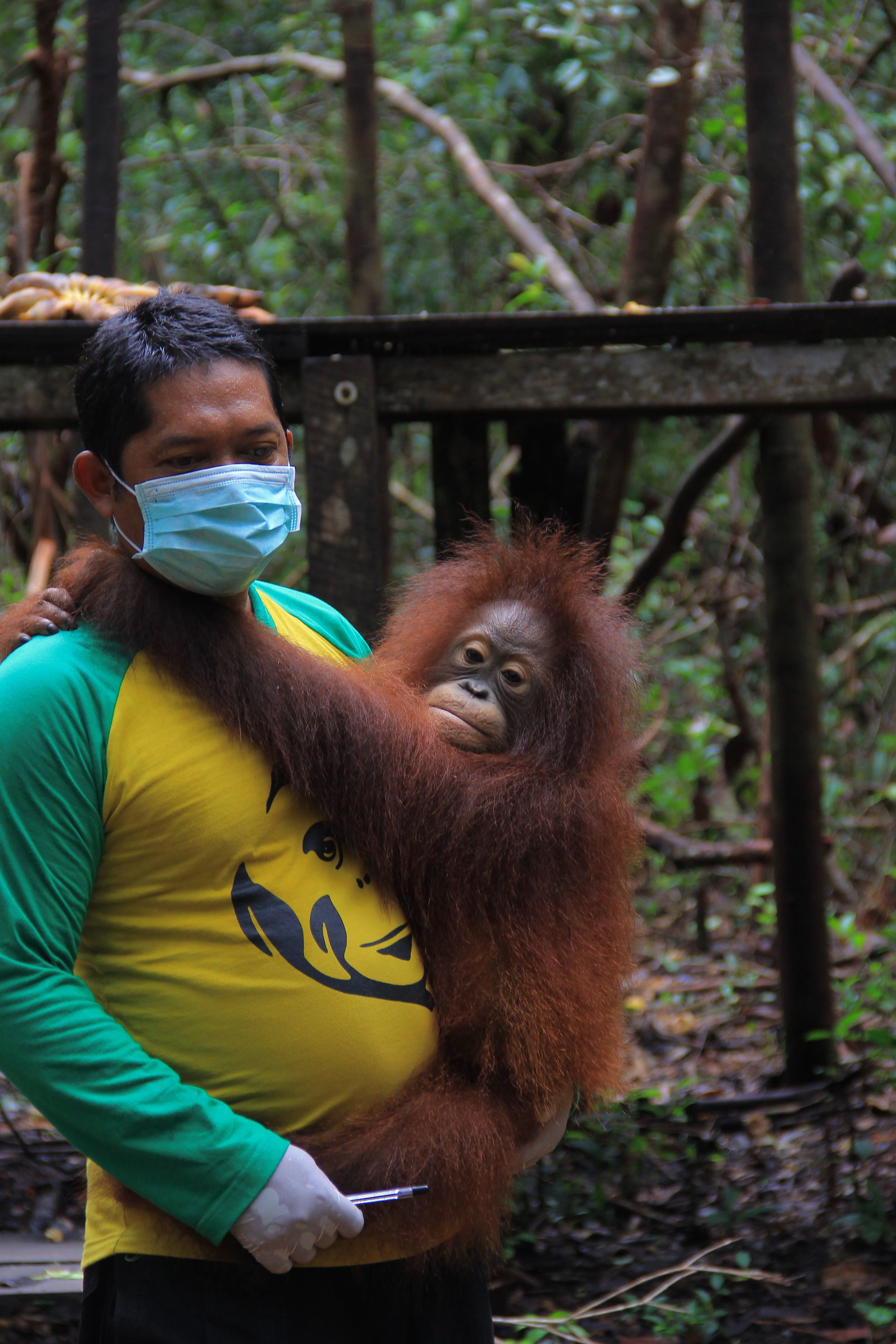
In light of this positive news and #RainforestLive, we are introducing a new initiative in support of the Lamandau Wildlife Reserve.
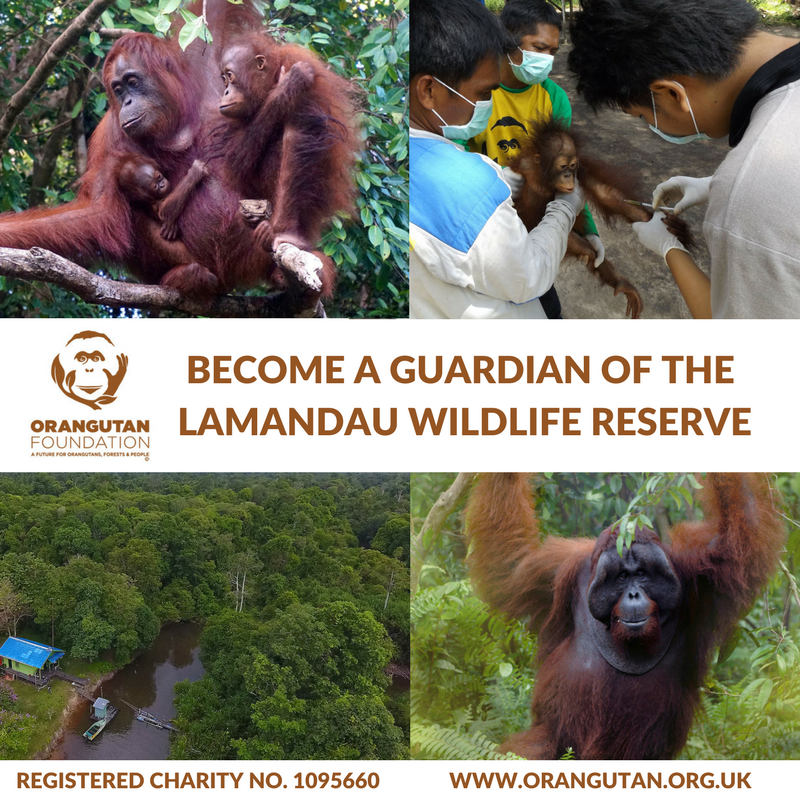
Become a guardian and actively protect:
- 158,144 acres of tropical peat forest in Central Kalimantan, Indonesian Borneo
- 500 critically endangered orangutans - a number which continues to increase as more are rescued and released
- thousands of threatened species including gibbons, sun bears and clouded leopards
- 5 million tonnes of stored carbon.
A regular gift of £16.50 a month or a one-off donation of £200 for the year (the equivalent of 55p a day) will contribute towards the management of the Reserve.
Visit our webpage for more information on how to become a guardian.
Research and the Rainforest
Research and the Rainforest To mark #RainforestLive2017, we explore the reasons why rainforest research is so critical to our operations in Indonesian Borneo. We share recent research on individual species, and an overview on other more general research which is ongoing.

Research provides the basis for making key decisions on the conservation of rainforests. Since 2005 the Orangutan Foundation has managed a tropical forest research station, situated on the Sekonyer river inside Tanjung Puting National Park, Indonesian Borneo. Known as Pondok Ambung, it is used by international researchers, Indonesian students and university groups for wildlife and forest research.

Recently the field staff stationed at Pondok Ambung have been carrying out research on tarsiers, a species of primate, and false gharials (T. Schelegelii), a species of crocodile. These two species are found within Tanjung Puting National Park and both are threatened with the risk of extinction in the wild. Little is known about either species. It is important to learn more about their behaviour to learn how best to protect them.
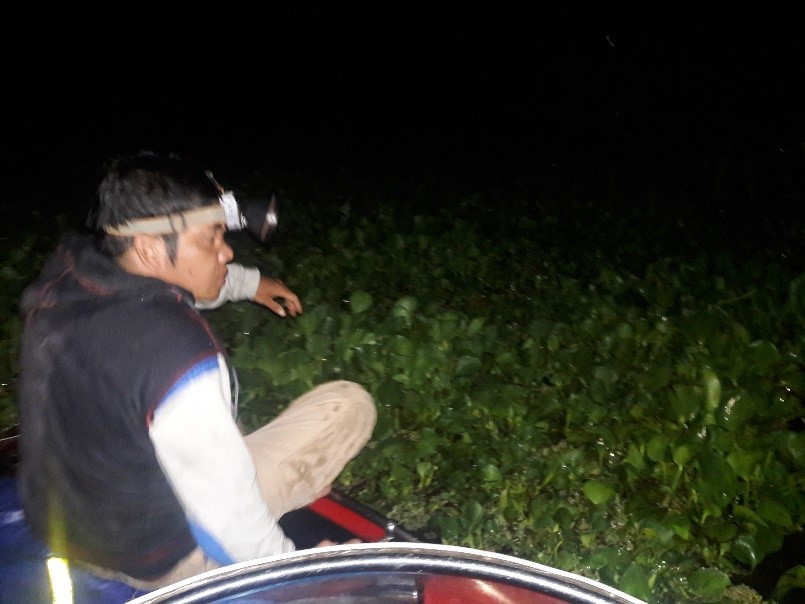
You can learn more about our tarsier research here.

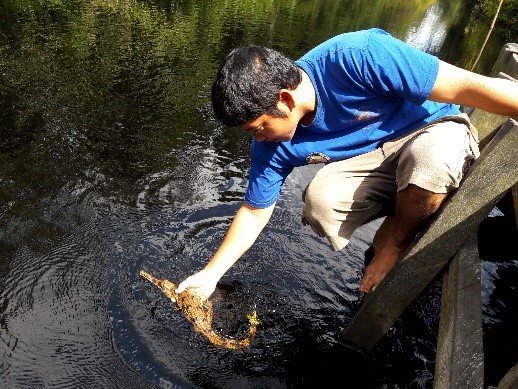
Field staff have been monitoring false gharial activity on the Sekonyer River, in Tanjung Puting National Park. Four have been caught and tagged in areas close by to Pondok Ambung, so that staff can monitor their behaviour long-term.

We also received exciting reports of the presence a very large false gharial in the area judging by the size of its footprint (twice the length of a pen!).
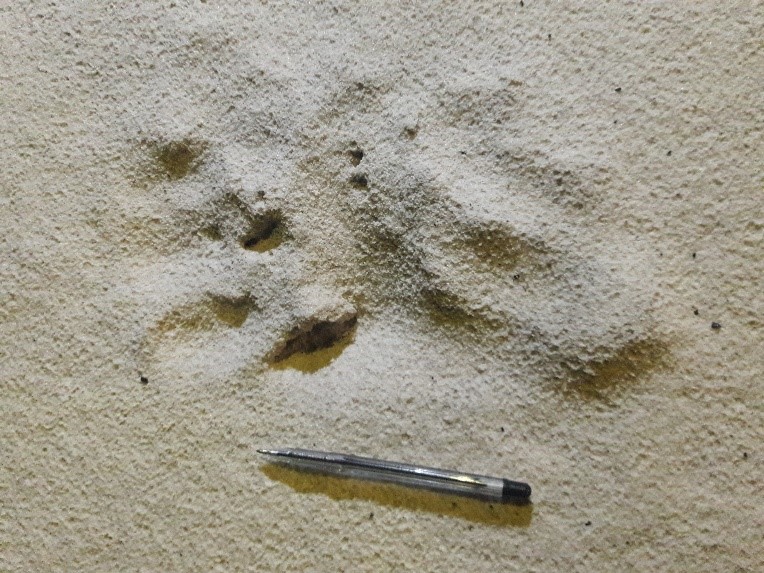
However, staff did not come across the creature during the survey.

Staff also conducted interviews with miners outside the park, who also reported sightings of 7 large false gharials in the surrounding area. More research will be conducted on why these crocodiles are living in areas of human disturbance such as this, but it is likely a result of a higher abundance of food.
Alongside recent research on individual species of wildlife, we also have a number of camera traps placed around Pondok Ambung in order to monitor the biodiversity of the surrounding forest. Watch this short clip to see some of the species we’ve managed to capture on film:
All this data provides important insights into the biodiversity which exists within the area we protect. It is vital we learn as much as we can in order to help protect and raise awareness of the important role each species plays in the rainforest ecosystem.
This is why the Orangutan Foundation takes part in events like Rainforest: Live, joining a global movement to spread the word and encourage action to protect the incredible biodiversity that exists within tropical forest habitat.
Follow us today on social media, using the hashtag #RainforestLive!


